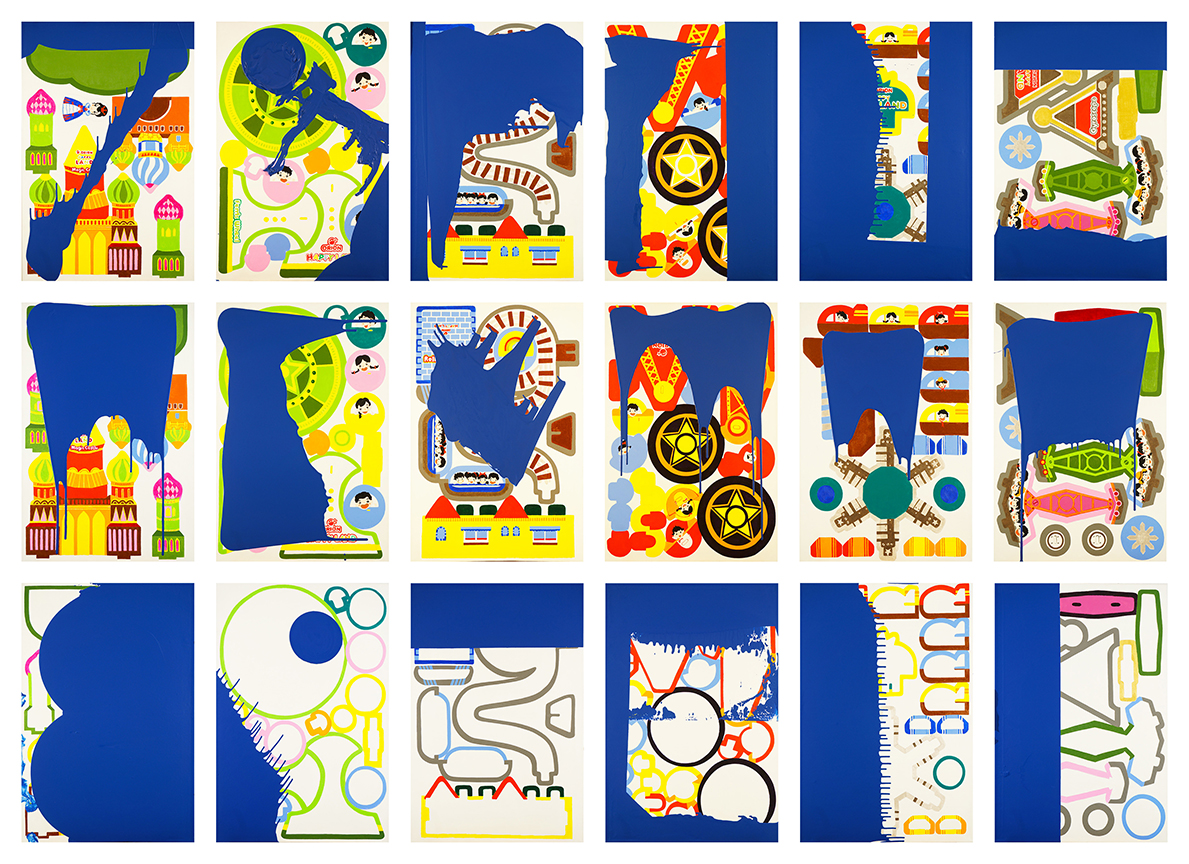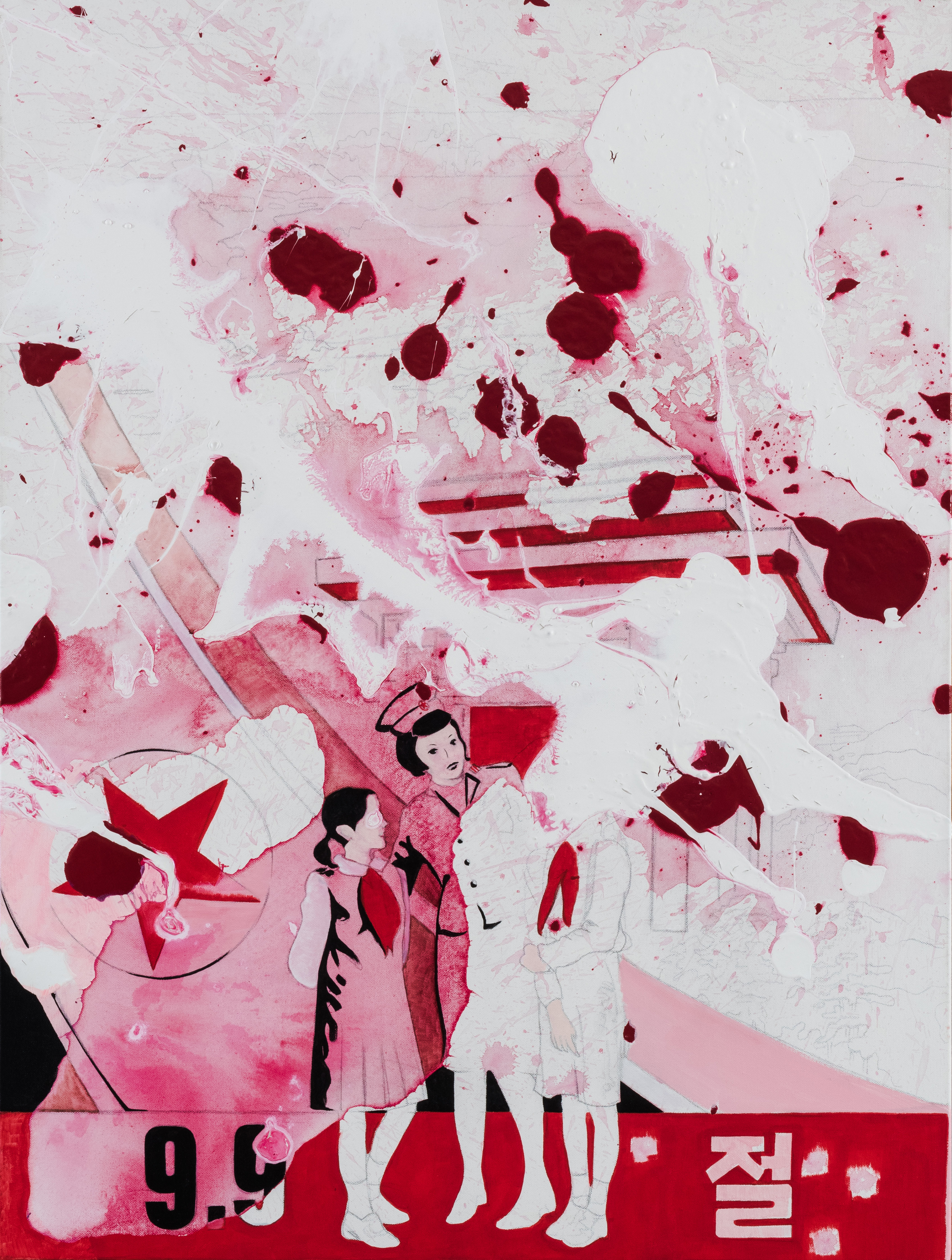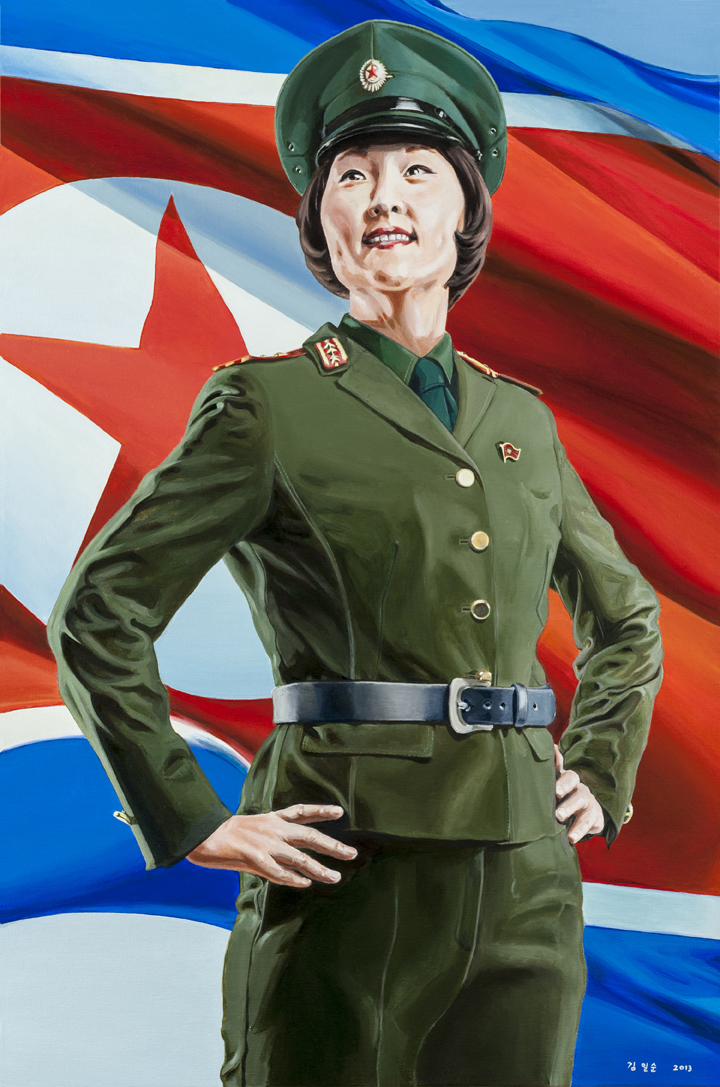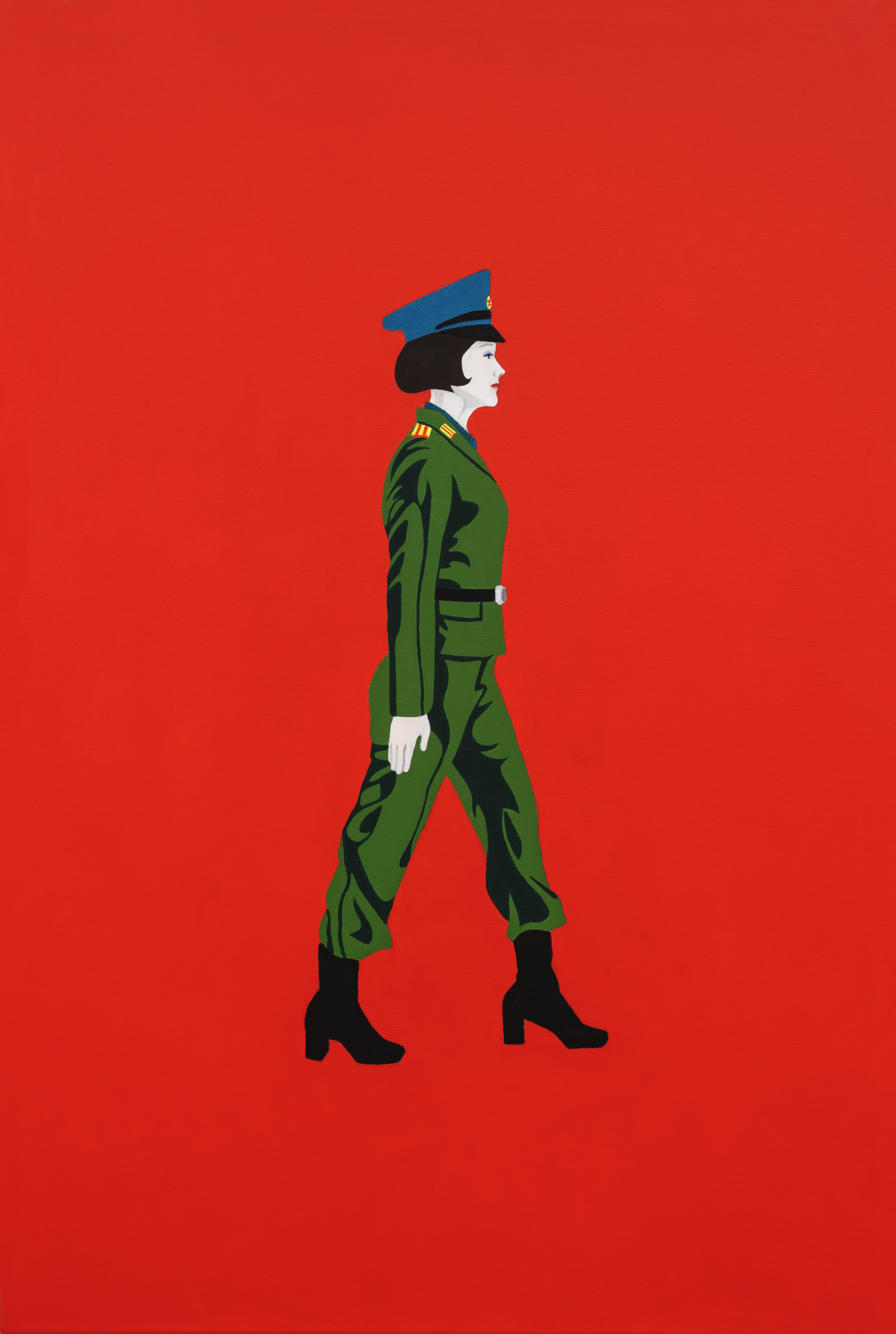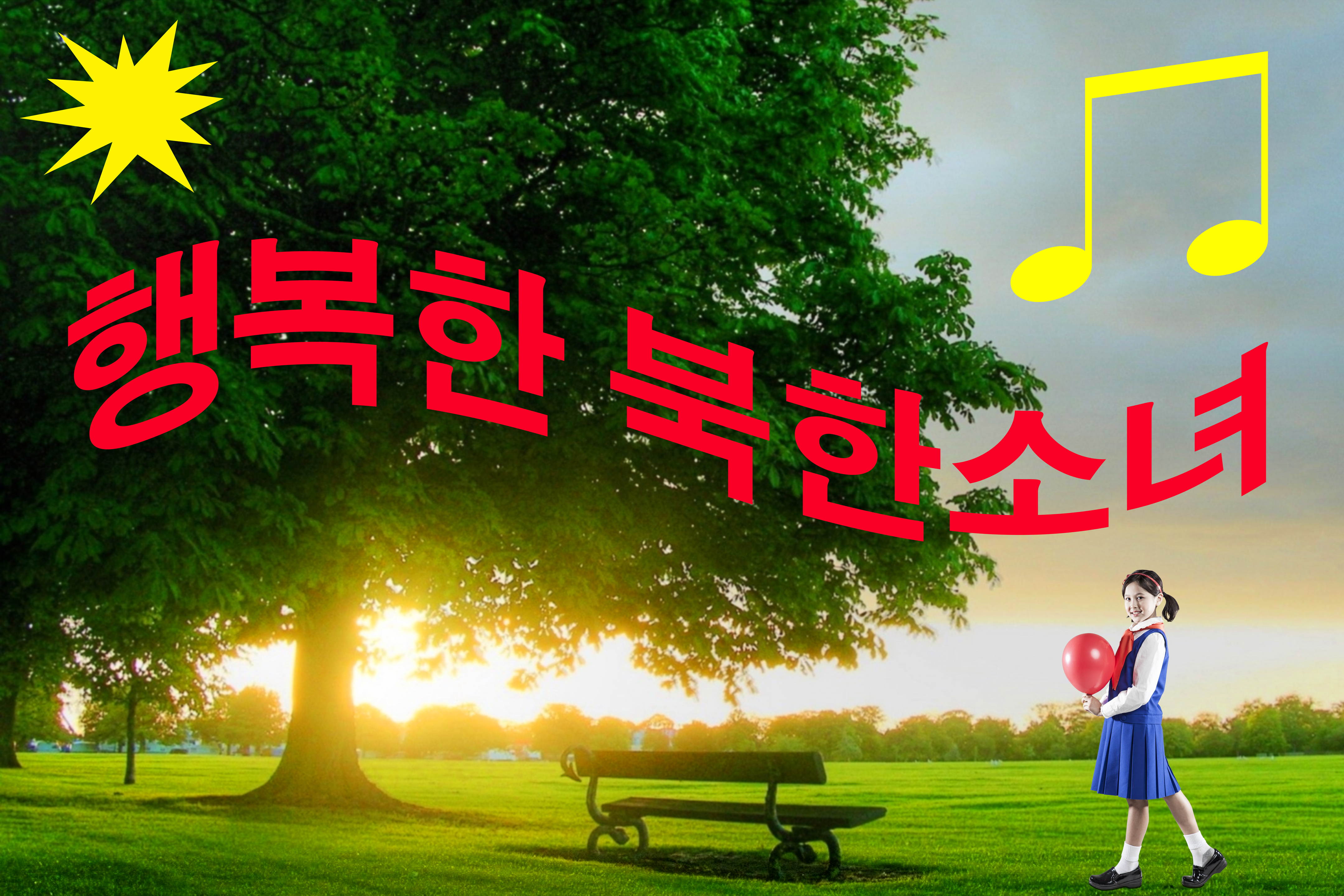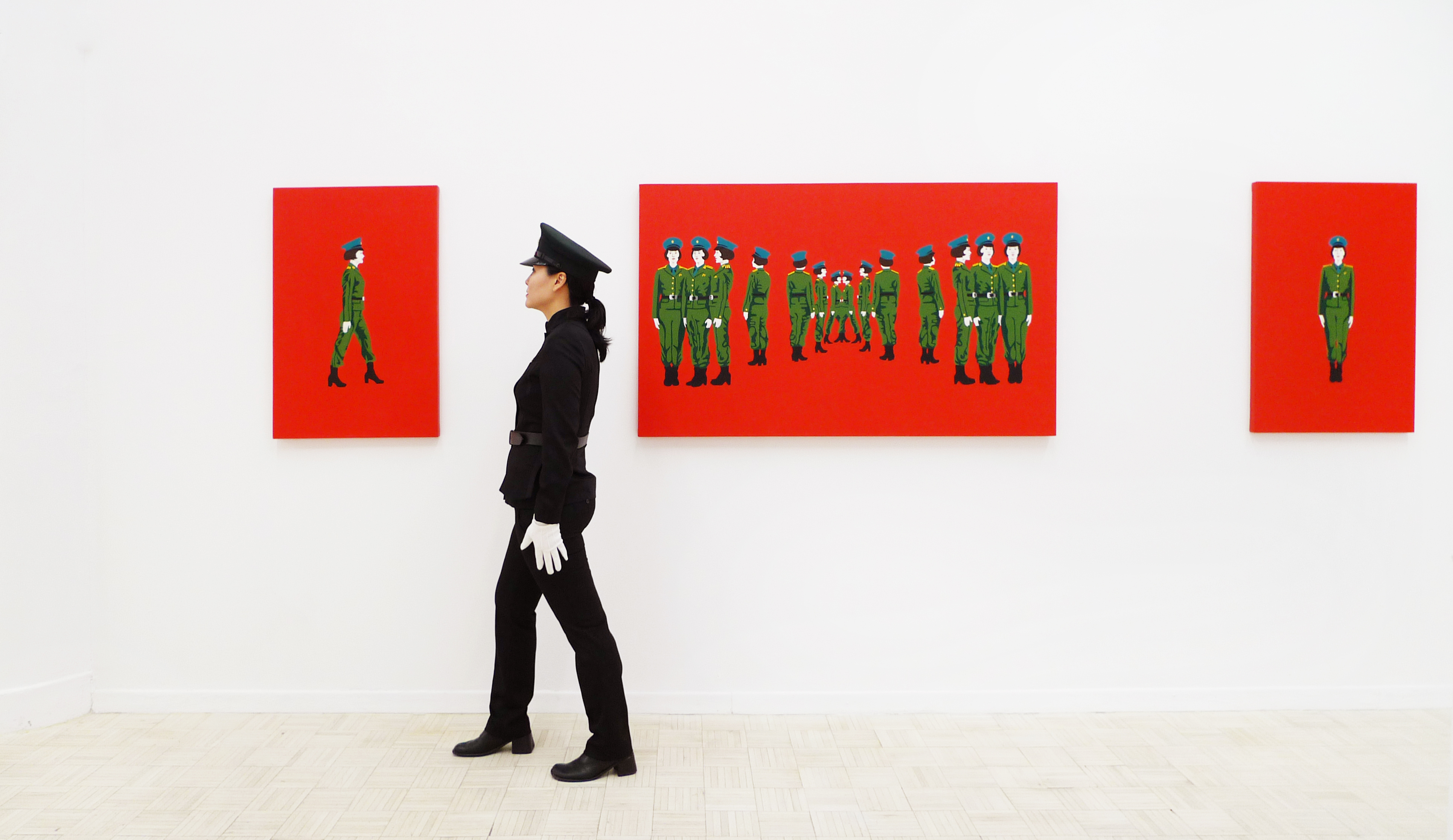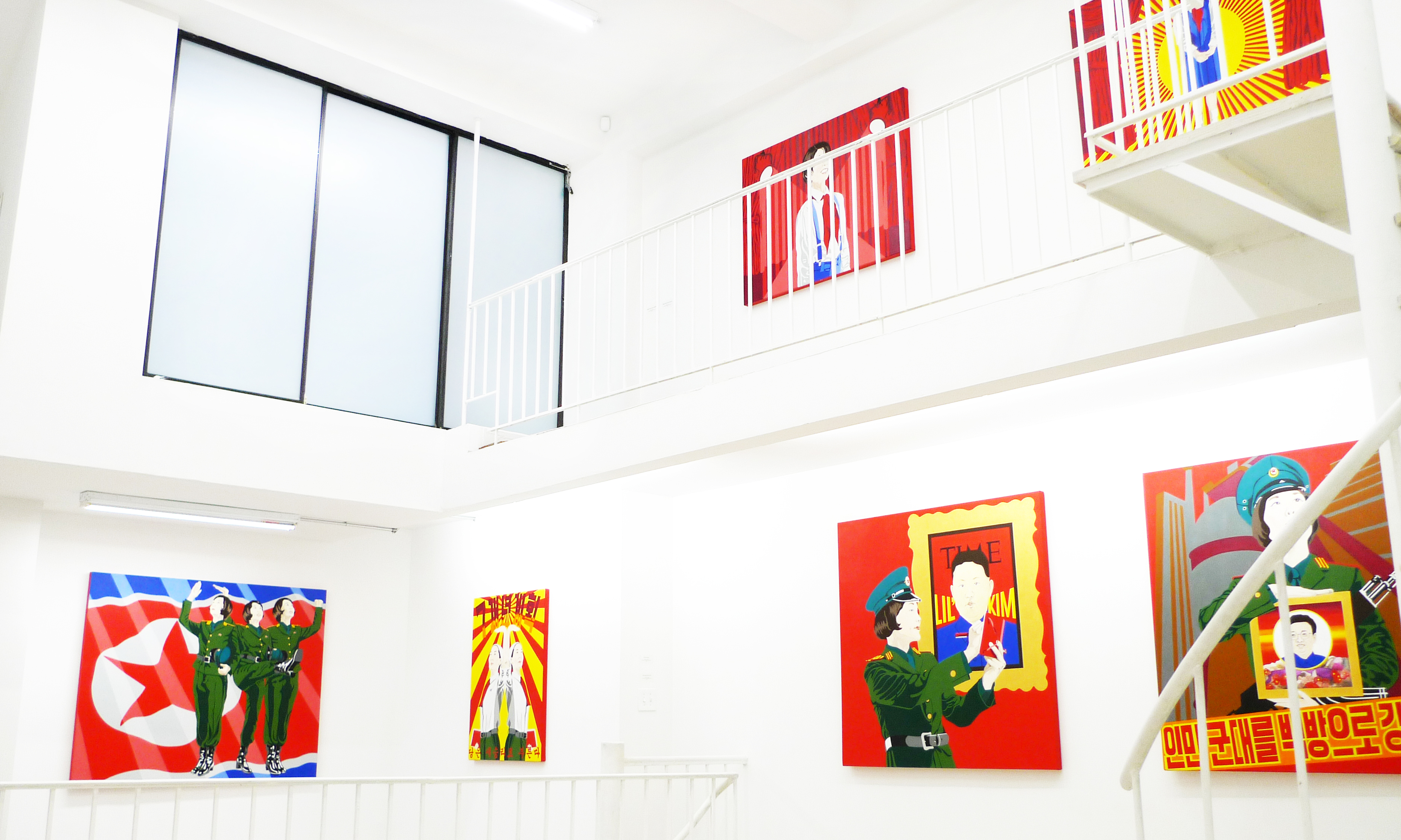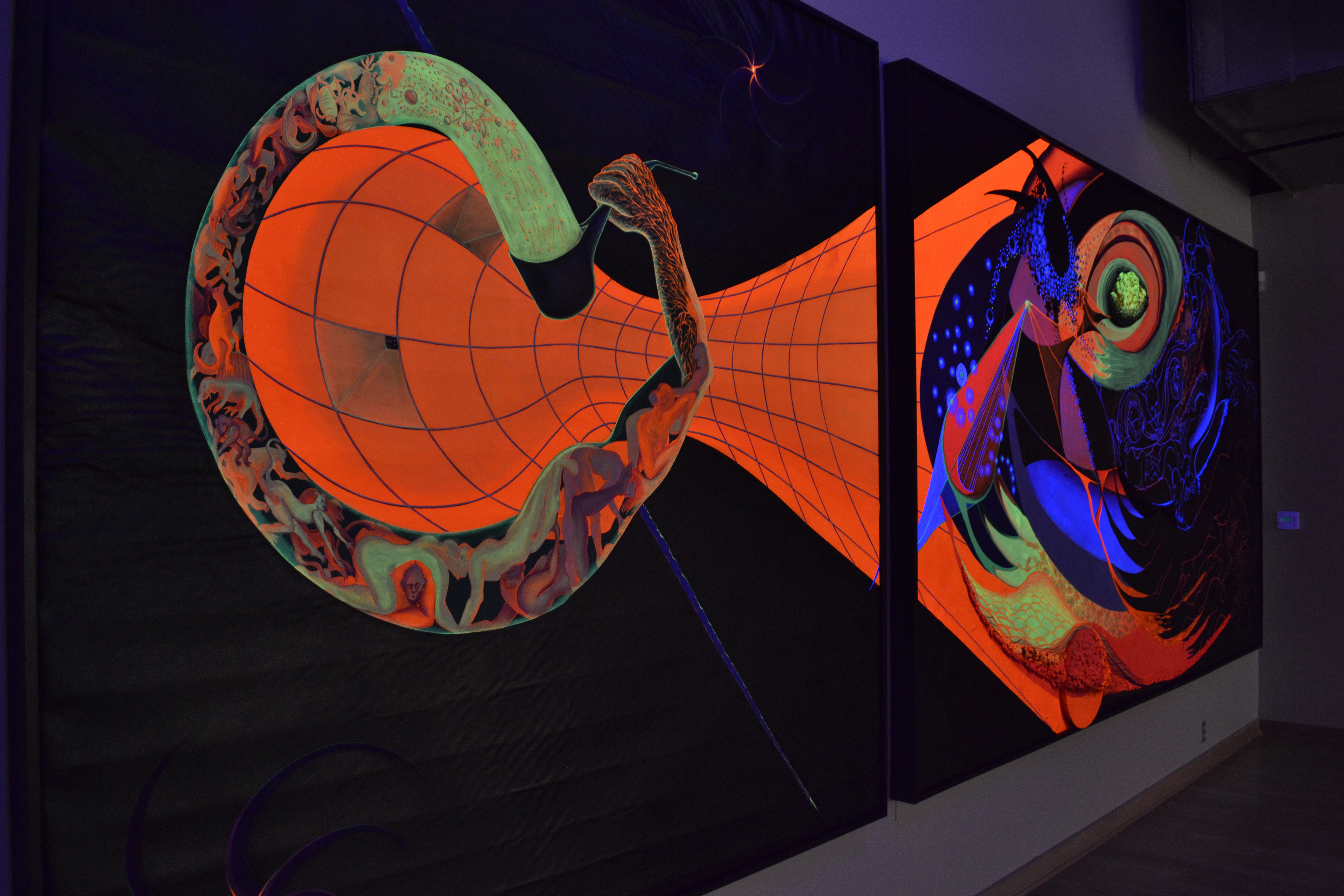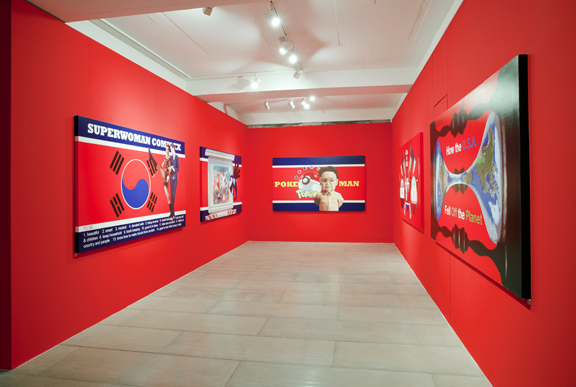Share:
About Mina
Baltimore City
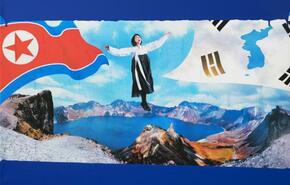
Mina Cheon (천민정) PhD, MFA -- "HAUNTED KOREAS"
b. 1973 in Seoul, South Korea, lives in New York, Baltimore, Seoul
… more
Jump to a project:
North Korean Dream Sequence Project 2, Dip and Drip International Klein Blue
Mina Cheon aka Kim Il Soon
North Korean Dream Sequence Project 2
Dip and Drip Painting Series in International Klein Blue 01-18, 2017
Acrylic on canvas, 36 x 24 x 1 inches each
As one of the last remaining hermit kingdoms of communism, North Korea has relentlessly remained socialist amidst a global overturn towards late-capitalism, and stands out with its greatest cultural paradox of vulnerability and threat. Mina Cheon, who is a South Korean artist working with a North Korean art persona named “Kim Il Soon,” campaigns for global awareness, North Korean lives matter, with her political pop and protest art she calls “polipop,” short for political pop art. Her new North Korean Dream Sequence Project showcases the unimaginable possibilities intersecting art, society, and politics, by painting things only possible in dreams to achieve North Korean liberation, freedom, and Korean unification.
While Kim Il Soon’s past paintings were done in North Korean social realist style, the new paintings are brazen in hot pink and in this particular series, in Klein International Blue. With swath of abstract expressionism overlaying realism, only in her dreams can Kim Il Soon truly paint freely and in abstraction, since the dictatorship and communist North Korea mandates art to be restrictive and done in a singular propaganda style. The Yves Klein International Blue as the pinnacle color of modern art, finds a new stage in the dream works of this North Korean artist, making transnational connections for dialog, global peace, and unity, through truthful arts related to life.
As a symbolic activity of Korean unification, the Klein blue is splashed, dipped, dripped on top of colorfully painted images of “Happy Land” themed Styrofoam punch-out paper toys found in Choco·Pie boxes, which are smuggled into North Korea from the South. As an extended theme by the artist, this “Choco-Pie Propaganda” takes the South Korean manufactured Choco-Pie confectionary that is vastly loved in North Korea, for its communication and exchange possibilities, hoping to heal the rift between the countries. These 18 vibrant paintings to be seen on both the front and back sides of the canvas, deliberately intermix Western abstraction with social realism, pop art and politics. Happy Land therefore, signifies the complexities of North Korea and its global presentation, our cultural bias and capitalist notion of happiness found in consumerism culture, and the question of global welfare tied to Korean unification.
North Korean Dream Sequence Project 2
Dip and Drip Painting Series in International Klein Blue 01-18, 2017
Acrylic on canvas, 36 x 24 x 1 inches each
As one of the last remaining hermit kingdoms of communism, North Korea has relentlessly remained socialist amidst a global overturn towards late-capitalism, and stands out with its greatest cultural paradox of vulnerability and threat. Mina Cheon, who is a South Korean artist working with a North Korean art persona named “Kim Il Soon,” campaigns for global awareness, North Korean lives matter, with her political pop and protest art she calls “polipop,” short for political pop art. Her new North Korean Dream Sequence Project showcases the unimaginable possibilities intersecting art, society, and politics, by painting things only possible in dreams to achieve North Korean liberation, freedom, and Korean unification.
While Kim Il Soon’s past paintings were done in North Korean social realist style, the new paintings are brazen in hot pink and in this particular series, in Klein International Blue. With swath of abstract expressionism overlaying realism, only in her dreams can Kim Il Soon truly paint freely and in abstraction, since the dictatorship and communist North Korea mandates art to be restrictive and done in a singular propaganda style. The Yves Klein International Blue as the pinnacle color of modern art, finds a new stage in the dream works of this North Korean artist, making transnational connections for dialog, global peace, and unity, through truthful arts related to life.
As a symbolic activity of Korean unification, the Klein blue is splashed, dipped, dripped on top of colorfully painted images of “Happy Land” themed Styrofoam punch-out paper toys found in Choco·Pie boxes, which are smuggled into North Korea from the South. As an extended theme by the artist, this “Choco-Pie Propaganda” takes the South Korean manufactured Choco-Pie confectionary that is vastly loved in North Korea, for its communication and exchange possibilities, hoping to heal the rift between the countries. These 18 vibrant paintings to be seen on both the front and back sides of the canvas, deliberately intermix Western abstraction with social realism, pop art and politics. Happy Land therefore, signifies the complexities of North Korea and its global presentation, our cultural bias and capitalist notion of happiness found in consumerism culture, and the question of global welfare tied to Korean unification.
-
 Dip and Drip Painting Series in International Klein Blue #02North Korean Dream Sequence Project 2 Dip and Drip Painting Series in International Klein Blue #02, 2017 Acrylic on canvas, 36 x 24 x 1 inches
Dip and Drip Painting Series in International Klein Blue #02North Korean Dream Sequence Project 2 Dip and Drip Painting Series in International Klein Blue #02, 2017 Acrylic on canvas, 36 x 24 x 1 inches -
 Dip and Drip Painting Series in International Klein Blue #01North Korean Dream Sequence Project 2 Dip and Drip Painting Series in International Klein Blue #01, 2017 Acrylic on canvas, 36 x 24 x 1 inches
Dip and Drip Painting Series in International Klein Blue #01North Korean Dream Sequence Project 2 Dip and Drip Painting Series in International Klein Blue #01, 2017 Acrylic on canvas, 36 x 24 x 1 inches -
 Dip and Drip Painting Series in International Klein Blue #04North Korean Dream Sequence Project 2 Dip and Drip Painting Series in International Klein Blue #04, 2017 Acrylic on canvas, 36 x 24 x 1 inches
Dip and Drip Painting Series in International Klein Blue #04North Korean Dream Sequence Project 2 Dip and Drip Painting Series in International Klein Blue #04, 2017 Acrylic on canvas, 36 x 24 x 1 inches -
 Dip and Drip Painting Series in International Klein Blue #05North Korean Dream Sequence Project 2 Dip and Drip Painting Series in International Klein Blue #05, 2017 Acrylic on canvas, 36 x 24 x 1 inches
Dip and Drip Painting Series in International Klein Blue #05North Korean Dream Sequence Project 2 Dip and Drip Painting Series in International Klein Blue #05, 2017 Acrylic on canvas, 36 x 24 x 1 inches -
 Dip and Drip Painting Series in International Klein Blue #08North Korean Dream Sequence Project 2 Dip and Drip Painting Series in International Klein Blue #08, 2017 Acrylic on canvas, 36 x 24 x 1 inches
Dip and Drip Painting Series in International Klein Blue #08North Korean Dream Sequence Project 2 Dip and Drip Painting Series in International Klein Blue #08, 2017 Acrylic on canvas, 36 x 24 x 1 inches -
 Dip and Drip Painting Series in International Klein Blue #10North Korean Dream Sequence Project 2 Dip and Drip Painting Series in International Klein Blue #10, 2017 Acrylic on canvas, 36 x 24 x 1 inches
Dip and Drip Painting Series in International Klein Blue #10North Korean Dream Sequence Project 2 Dip and Drip Painting Series in International Klein Blue #10, 2017 Acrylic on canvas, 36 x 24 x 1 inches -
 Dip and Drip Painting Series in International Klein Blue #12North Korean Dream Sequence Project 2 Dip and Drip Painting Series in International Klein Blue #12, 2017 Acrylic on canvas, 36 x 24 x 1 inches
Dip and Drip Painting Series in International Klein Blue #12North Korean Dream Sequence Project 2 Dip and Drip Painting Series in International Klein Blue #12, 2017 Acrylic on canvas, 36 x 24 x 1 inches -
 Dip and Drip Painting Series in International Klein Blue #16North Korean Dream Sequence Project 2 Dip and Drip Painting Series in International Klein Blue #16, 2017 Acrylic on canvas, 36 x 24 x 1 inches
Dip and Drip Painting Series in International Klein Blue #16North Korean Dream Sequence Project 2 Dip and Drip Painting Series in International Klein Blue #16, 2017 Acrylic on canvas, 36 x 24 x 1 inches -
 Dip and Drip Painting Series in International Klein Blue 01-18 FrontNorth Korean Dream Sequence Project 2 Dip and Drip Painting Series in International Klein Blue 01-18, 2017 Acrylic on canvas, 36 x 24 x 1 inches each All 18 pieces front
Dip and Drip Painting Series in International Klein Blue 01-18 FrontNorth Korean Dream Sequence Project 2 Dip and Drip Painting Series in International Klein Blue 01-18, 2017 Acrylic on canvas, 36 x 24 x 1 inches each All 18 pieces front -
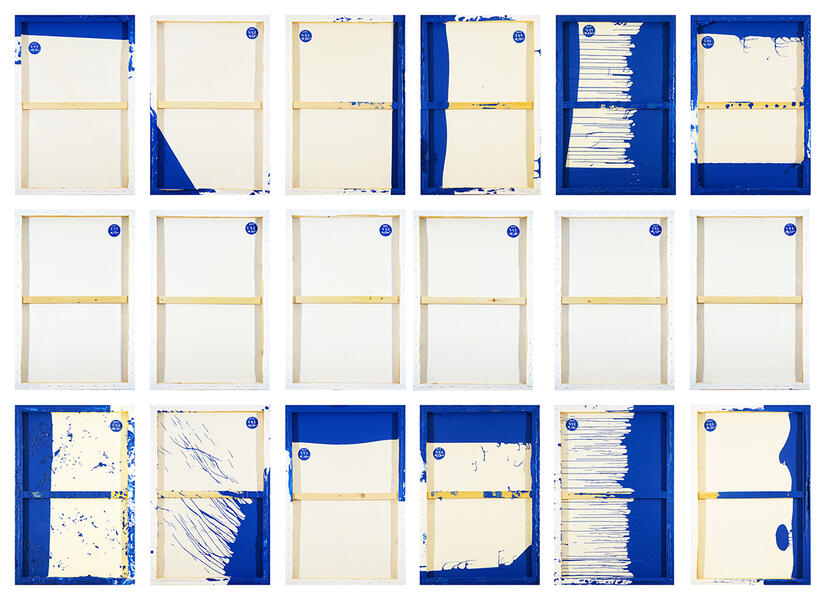 Dip and Drip Painting Series in International Klein Blue 01-18 BackNorth Korean Dream Sequence Project 2 Dip and Drip Painting Series in International Klein Blue 01-18, 2017 Acrylic on canvas, 36 x 24 x 1 inches each All 18 pieces back
Dip and Drip Painting Series in International Klein Blue 01-18 BackNorth Korean Dream Sequence Project 2 Dip and Drip Painting Series in International Klein Blue 01-18, 2017 Acrylic on canvas, 36 x 24 x 1 inches each All 18 pieces back
Dream Sequence and DPRK Polipop
The latest body of Mina Cheon aka Kim Il Soon paintings are her Dream Sequence painting series where she is painting hot pink drip, Western style abstract expressionist, paintings in her dreams. Due to the regimented military life under governmental control in North Korea, only in her dreams is this character Kim Il Soon allowed to paint this type of work and is unconsciously liberating herself artistically as well as from the regime.
Assuming different artistic pseudonyms and pen names during the past twenty years such as Minaliza1000 and M-1000 was nothing new, but Cheon’s latest artistic persona named Kim Il Soon, who is a North Korean social realist painter is an important political statement. Since Korea has been divided into North and South Korea since the Korean War, and as a relic of the Cold War, Cheon advocates that the practicing Korean artist should also be split and therefore, Cheon has been working simultaneously as both a “South Korean Mina Cheon” and “North Korean Kim Il Soon.” Her North Korean artwork is called DPRK Polipop, short for Democratic People’s Republic of Korea Political Pop Art, or Kim Il Soon’s “Sweet Revolution.” The goal and political campaign of this branch of work is for the sake of global peace and Korean unification. Assuming different artistic personae in photography, new media, and performance such as works of Coco Fusco, Cindy Sherman, Yasumasa Morimura, and Nikki Lee, to name a few, contributed to the themes of postmodern identity. Cheon’s North Korean artistic persona Kim Il Soon is a deliberate political move, social activism and performance, and will be ongoing until Korean unification.
2015 includes the works of an art book cataloging the DPRK Polipop art series as well as finishing up three more social realist paintings and the new hot pink drip paintings.
The DPRK Polipop: Sweet Revolution art book was published in May 2015 through the Mina Cheon Studio and available at http://www.blurb.com/b/6219321-dprk-polipop
DPRK POLIPOP : SWEET REVOLUTION is an art book by political pop and new media artist MINA CHEON who has taken on the artistic persona of a North Korean social realist painter "Kim Il Soon" for the sake of promoting Korean unification and global peace. The book highlights the collection of Cheon’s artwork, which she calls “DPRK Polipop,” a new branch of her Polipop: Political Pop Art series. The book also showcases 2014 exhibitions at the Ethan Cohen New York gallery and Trunk Gallery Seoul, Korea, as well as including texts by Cheon, art critic Jonathan Goodman, curator Jin Kwon, and reporter Iris Jang of Voice of America. The book is published by Mina Cheon Studio at K-Town Studios in Baltimore, Maryland, 2015. Mina Cheon Studio is dedicated to scholarly work and art production of contemporary and global, new media political pop art projects.
DPRK POLIPOP : SWEET REVOLUTION BY MINA CHEON
ISBN: 9781320695909 PAGES: 66
© Copyright 2015 Mina Cheon, all rights reserved
Published by MINA CHEON STUDIO
MINA CHEON STUDIO @ K-TOWN STUDIOS
100 West 22nd Street, Baltimore MD 21218
Book design by Travis Levasseur and Leslie E. Chung of MINA CHEON STUDIO
Assuming different artistic pseudonyms and pen names during the past twenty years such as Minaliza1000 and M-1000 was nothing new, but Cheon’s latest artistic persona named Kim Il Soon, who is a North Korean social realist painter is an important political statement. Since Korea has been divided into North and South Korea since the Korean War, and as a relic of the Cold War, Cheon advocates that the practicing Korean artist should also be split and therefore, Cheon has been working simultaneously as both a “South Korean Mina Cheon” and “North Korean Kim Il Soon.” Her North Korean artwork is called DPRK Polipop, short for Democratic People’s Republic of Korea Political Pop Art, or Kim Il Soon’s “Sweet Revolution.” The goal and political campaign of this branch of work is for the sake of global peace and Korean unification. Assuming different artistic personae in photography, new media, and performance such as works of Coco Fusco, Cindy Sherman, Yasumasa Morimura, and Nikki Lee, to name a few, contributed to the themes of postmodern identity. Cheon’s North Korean artistic persona Kim Il Soon is a deliberate political move, social activism and performance, and will be ongoing until Korean unification.
2015 includes the works of an art book cataloging the DPRK Polipop art series as well as finishing up three more social realist paintings and the new hot pink drip paintings.
The DPRK Polipop: Sweet Revolution art book was published in May 2015 through the Mina Cheon Studio and available at http://www.blurb.com/b/6219321-dprk-polipop
DPRK POLIPOP : SWEET REVOLUTION is an art book by political pop and new media artist MINA CHEON who has taken on the artistic persona of a North Korean social realist painter "Kim Il Soon" for the sake of promoting Korean unification and global peace. The book highlights the collection of Cheon’s artwork, which she calls “DPRK Polipop,” a new branch of her Polipop: Political Pop Art series. The book also showcases 2014 exhibitions at the Ethan Cohen New York gallery and Trunk Gallery Seoul, Korea, as well as including texts by Cheon, art critic Jonathan Goodman, curator Jin Kwon, and reporter Iris Jang of Voice of America. The book is published by Mina Cheon Studio at K-Town Studios in Baltimore, Maryland, 2015. Mina Cheon Studio is dedicated to scholarly work and art production of contemporary and global, new media political pop art projects.
DPRK POLIPOP : SWEET REVOLUTION BY MINA CHEON
ISBN: 9781320695909 PAGES: 66
© Copyright 2015 Mina Cheon, all rights reserved
Published by MINA CHEON STUDIO
MINA CHEON STUDIO @ K-TOWN STUDIOS
100 West 22nd Street, Baltimore MD 21218
Book design by Travis Levasseur and Leslie E. Chung of MINA CHEON STUDIO
-
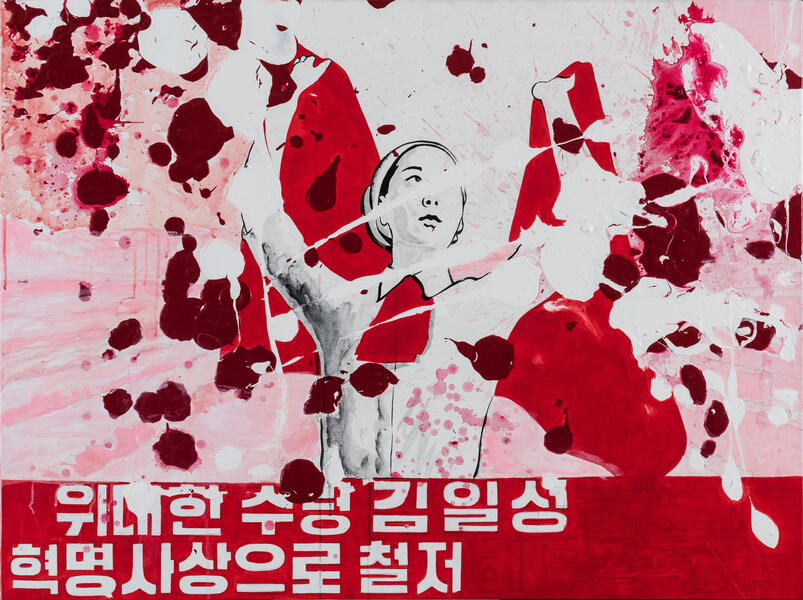 Dream Sequence: Hot Pink Drip Painting 03Date Work Completed: 2015-6 Medium: acrylic on canvas Size: 36 x 48 x 1.5 inches Description: The latest body of Mina Cheon aka Kim Il Soon paintings are her Dream Sequence painting series where she is painting hot pink drip, Western style abstract expressionist paintings in her dreams. Due to the regimented military life under governmental control in North Korea, only in her dreams is this character Kim Il Soon allowed to paint this type of work and is unconsciously liberating herself artistically as well as from the regime. Here Kim Il Soon is raising the red flags in honor of the communist state of North Korea.
Dream Sequence: Hot Pink Drip Painting 03Date Work Completed: 2015-6 Medium: acrylic on canvas Size: 36 x 48 x 1.5 inches Description: The latest body of Mina Cheon aka Kim Il Soon paintings are her Dream Sequence painting series where she is painting hot pink drip, Western style abstract expressionist paintings in her dreams. Due to the regimented military life under governmental control in North Korea, only in her dreams is this character Kim Il Soon allowed to paint this type of work and is unconsciously liberating herself artistically as well as from the regime. Here Kim Il Soon is raising the red flags in honor of the communist state of North Korea. -
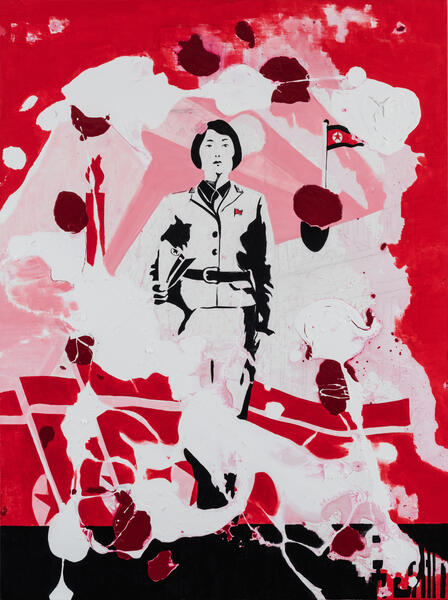 Dream Sequence: Hot Pink Drip Painting 01Date Work Completed: 2015-6 Medium: acrylic on canvas Size: 48 x 36 x 1.5 inches Description: Here Kim Il Soon appears from a flog like cloudy mists, in a very dream like landscape and under the banner of North Korean flags.
Dream Sequence: Hot Pink Drip Painting 01Date Work Completed: 2015-6 Medium: acrylic on canvas Size: 48 x 36 x 1.5 inches Description: Here Kim Il Soon appears from a flog like cloudy mists, in a very dream like landscape and under the banner of North Korean flags. -
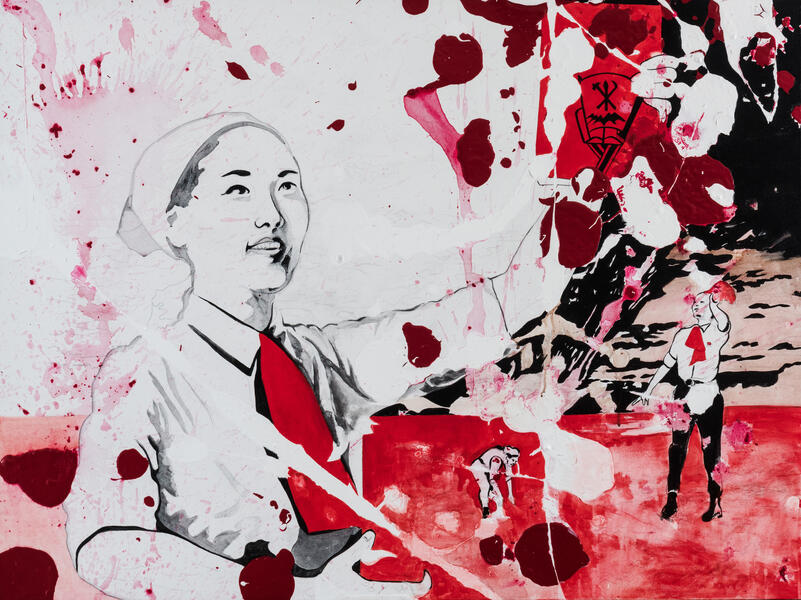 Dream Sequence: Hot Pink Drip Painting 04Date Work Completed: 2015-6 Medium: acrylic on canvas Size: 36 x 48 x 1.5 inches Description: The latest body of Mina Cheon aka Kim Il Soon paintings are her Dream Sequence painting series, where she is painting hot pink drip Western style abstract expressionist paintings. Due to the regimented military life under the North Korean governmental control, social realist painter Kim Il Soon is artistically liberating herself as well as from the regime in her dreams. The tribal unconsciousness for desiring abstract expression as a way of freedom of expression came to her as dreams. Here Kim Il Soon is holding up the communist Red Book while farming and working hard out in the fields.
Dream Sequence: Hot Pink Drip Painting 04Date Work Completed: 2015-6 Medium: acrylic on canvas Size: 36 x 48 x 1.5 inches Description: The latest body of Mina Cheon aka Kim Il Soon paintings are her Dream Sequence painting series, where she is painting hot pink drip Western style abstract expressionist paintings. Due to the regimented military life under the North Korean governmental control, social realist painter Kim Il Soon is artistically liberating herself as well as from the regime in her dreams. The tribal unconsciousness for desiring abstract expression as a way of freedom of expression came to her as dreams. Here Kim Il Soon is holding up the communist Red Book while farming and working hard out in the fields. -
 Dream Sequence: Hot Pink Drip Painting 05Date Work Completed: 2015-6 Medium: acrylic on canvas Size: 36 x 24 x 1.5 inches Description: Here Kim Il Soon is dreaming of peaceful gathering of herself and her children as she is married to the state and the dear leader.
Dream Sequence: Hot Pink Drip Painting 05Date Work Completed: 2015-6 Medium: acrylic on canvas Size: 36 x 24 x 1.5 inches Description: Here Kim Il Soon is dreaming of peaceful gathering of herself and her children as she is married to the state and the dear leader. -
 Dream Sequence: Hot Pink Drip Painting 02Date Work Completed: 2015-6 Medium: acrylic on canvas Size: 36 x 36 x 1.5 inches Description: In Kim Il Soon's dream, her daughter Kim Sia appears as the happiest North Korean girl, playing in the park with a balloon and singing songs of joy.
Dream Sequence: Hot Pink Drip Painting 02Date Work Completed: 2015-6 Medium: acrylic on canvas Size: 36 x 36 x 1.5 inches Description: In Kim Il Soon's dream, her daughter Kim Sia appears as the happiest North Korean girl, playing in the park with a balloon and singing songs of joy. -
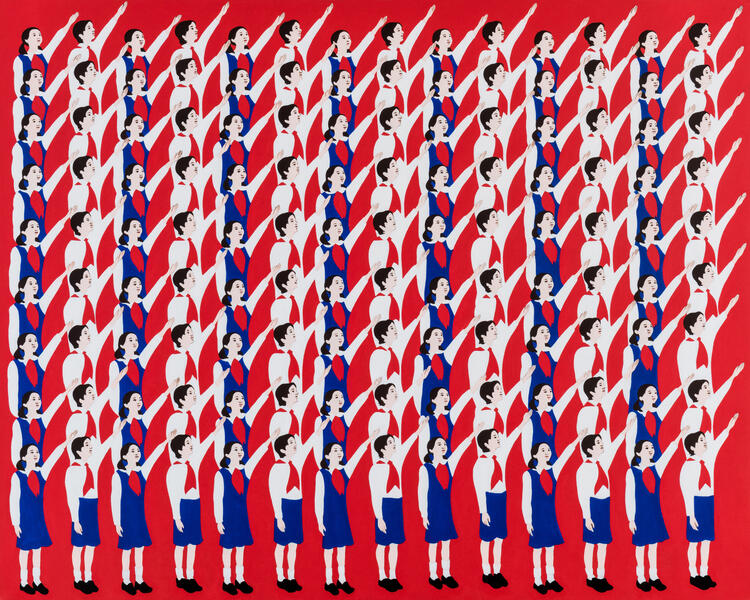 Happy North Korean Children IDate Work Completed: 2015 Medium: acrylic on canvas Size: 48 x 60 x 1.5 inches Description: The painting shows an abstract and imaginary field of happy North Korean children, posed by the artist’s own children Gerson and Sasha as “Kim Siun” and “Kim Sia,” characters who multiply, assuming the identities of many happy children similarly portrayed in North Korean propaganda imagery.
Happy North Korean Children IDate Work Completed: 2015 Medium: acrylic on canvas Size: 48 x 60 x 1.5 inches Description: The painting shows an abstract and imaginary field of happy North Korean children, posed by the artist’s own children Gerson and Sasha as “Kim Siun” and “Kim Sia,” characters who multiply, assuming the identities of many happy children similarly portrayed in North Korean propaganda imagery. -
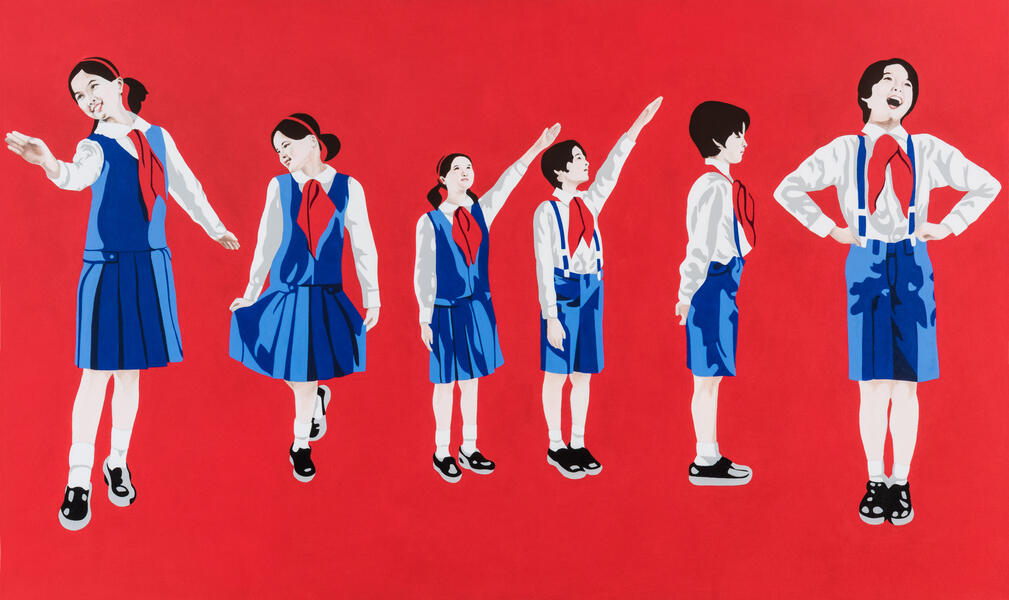 Happy North Korean Children IIDate Work Completed: 2015 Medium: acrylic on canvas Size: 60 x 36 x 1.5 inches Description: North Korean Children are happy because the North Korean government presents their “Juche” ideology, blissfulness that comes from social collectiveness. As a part of her social activism, the artist created North Korean political pop art, promoting Korean unification and global peace.
Happy North Korean Children IIDate Work Completed: 2015 Medium: acrylic on canvas Size: 60 x 36 x 1.5 inches Description: North Korean Children are happy because the North Korean government presents their “Juche” ideology, blissfulness that comes from social collectiveness. As a part of her social activism, the artist created North Korean political pop art, promoting Korean unification and global peace. -
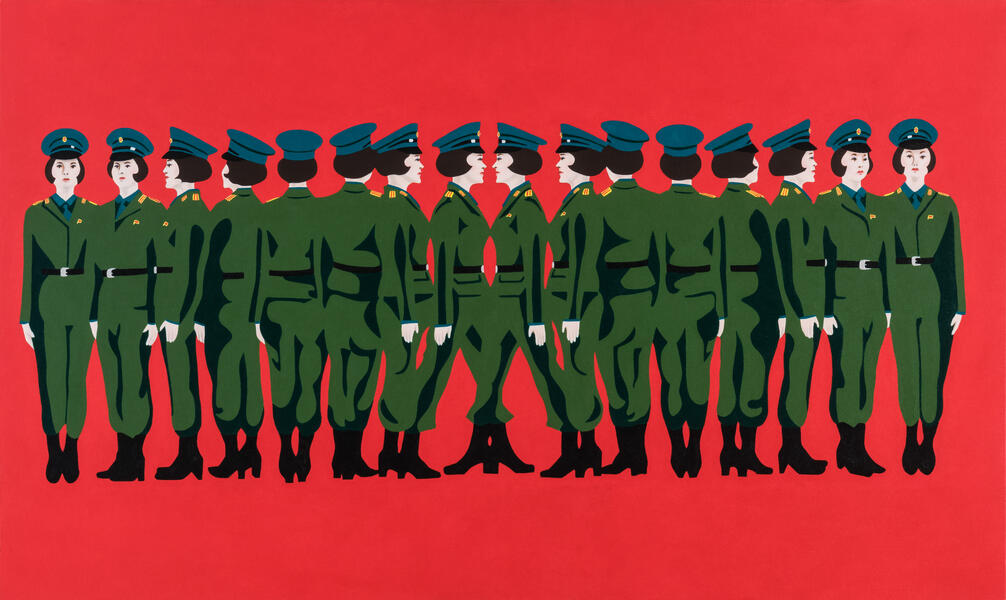 Line up Kim Il Soon IIDate Work Completed: 2015 Medium: acrylic on canvas Size: 36 x 60 x 1.5 inches Description: “Kim Il Soon” is the North Korean art persona created by the artist Cheon, and she is currently lined up and appears in multiple and throughout many of this North Korean painting series. The national identity and propaganda of North Korea is portrayed through the military unity.
Line up Kim Il Soon IIDate Work Completed: 2015 Medium: acrylic on canvas Size: 36 x 60 x 1.5 inches Description: “Kim Il Soon” is the North Korean art persona created by the artist Cheon, and she is currently lined up and appears in multiple and throughout many of this North Korean painting series. The national identity and propaganda of North Korea is portrayed through the military unity. -
 Line up Kim Il SoonDate Work Completed: 2013-2014 Medium: acrylic on canvas Size: 36 x 60 x 1.5 inches Description: Kim Il Soon is lined up and appears in multiple. In North Korean military, all that matters is collectivity over individuality, unity over plurality. The piece is a series with Position I and Position II or it can be a single piece. The national identity of a North Korean is similar in this way in that there is no real individual identity rather collective, one is the same as all and all is the same as one, found in the “Juche” ideology.
Line up Kim Il SoonDate Work Completed: 2013-2014 Medium: acrylic on canvas Size: 36 x 60 x 1.5 inches Description: Kim Il Soon is lined up and appears in multiple. In North Korean military, all that matters is collectivity over individuality, unity over plurality. The piece is a series with Position I and Position II or it can be a single piece. The national identity of a North Korean is similar in this way in that there is no real individual identity rather collective, one is the same as all and all is the same as one, found in the “Juche” ideology. -
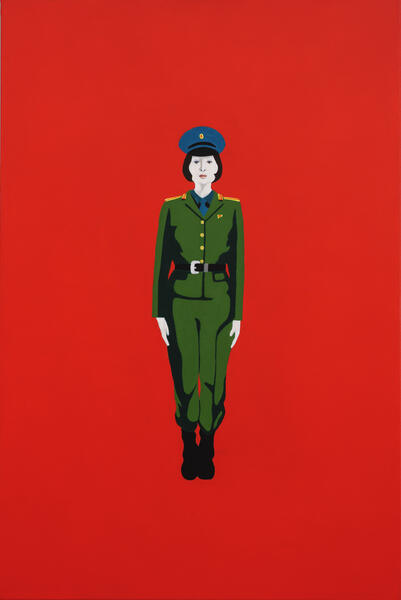 Position IDate Work Completed: 2013-2014 Medium: acrylic on canvas Size: 36 x 24 x 1.5 inches Description: The piece is a series with Line Up and Position II but can also be considered a single piece or diptych with Position II. The national identity of a North Korean is similar to this in that there is no real individual identity rather collective, one is the same as all and all is the same as one, found in the “Juche” ideology.
Position IDate Work Completed: 2013-2014 Medium: acrylic on canvas Size: 36 x 24 x 1.5 inches Description: The piece is a series with Line Up and Position II but can also be considered a single piece or diptych with Position II. The national identity of a North Korean is similar to this in that there is no real individual identity rather collective, one is the same as all and all is the same as one, found in the “Juche” ideology.
DPRK POLIPOP
DPRK POLIPOP (Democratic People's Republic of Korea Political Pop Art)
by Mina Cheon
In 2012, new media artist Mina Cheon launched a new artistic persona and alter ego / avatar named Kim Il Soon, who is a North Korean social realist painter. This is a deliberate political move by the artist to bring awareness about North Korea. She will resume painting until Korean reunification. Her name Kim Il Soon was bequest to her by the supposed Dear Leader. She is a nationally recognized painter of the Democratic People’s Republic of Korea, as well as a Lieutenant Colonel Navel Commander, scholar, devout citizen, hardworking farmer, a mother of two, and most importantly, a human being.
Kim Il Soon appeared publicly for the first time during the Pulse Art Fair in New York in 2013 and this painting “Sons of Joseon: Squirt Water Not Bullets” was exhibited alongside her performance, as she passed out political and peace buttons “Make Art Not Missiles.” The painting is one out of a larger series of work, which are elaborations of Kim Il Soon’s performance and political pop art campaign for global peace and Korean reunification. North Koreans call their nation “Joseon” but they do not directly relate themselves or acknowledge the history of Joseon Dynasty. The two boys in the painting is of her son Kim Si-un, the doubling of his appearance signifies the twin effect, a country split into two. “Sons of Joseon” was acquired by the Smith College Museum of Art, and housed in the contemporary art section.
SWEET REVOLUTION (Artist Statement)
Mina Cheon Dictation Kim Il Soon
January 17, 2014
On my mother’s birthday.
As a Korean, the idea of having two artistic identities, South Korean Mina Cheon and North Korean Kim Il Soon, is an obvious reflection on the country’s state of being divided. It makes all the sense in the world that if a country is split so should the artist in practice. As a political pop artist, I’ve created artworks that responded to the global political climate, using pop imagery that circulates on the Internet, news, and entertainment as the source of my work. As a South Korean new media artist Mina Cheon, the political pop art (Polipop) includes the perspective of a South Korean-American who travels between the East and West, bringing out things that usually go unnoticed or said in media culture. As a North Korean social realist painter, Kim Il Soon lacks access to technology and adheres strictly to the propaganda painting style of North Korea.
While the Korean peninsula may be demarcated by a 38th Parallel, the Demilitarized Zone (DMZ), the history and culture is nevertheless shared, the country is united by one country’s people and language. Moreover, Korea is ubiquitously tied by the never-ending heated debate on reunification and national identity, whether we are at war, armistice, trade, or peace. This is our business.
The world may find our country (countries) amusing, the radically divided, globally useful as separated communism and capitalism states, fanatically obsessing over sports or military or pop culture. Our history is made by other countries and cultures, the Western influence has been severe, whether through China, Japan or America, it makes sense that other worlds and countries deem to hold stake at what should remain – a country divided – and what shouldn’t happen – reunification. Who are those who dictate what should happen? Who are fit to lead the way towards unification, when cultural divides remain not only from South and North but also between East and West, and even between the left and right politics.
What does economy have to do with it? Probably everything. It benefits some for Korea to be separated; it benefits others for us to unite. Mostly, humanitarians would like to see Korean reunification for the purpose of global peace. We are those people, Kim Il Soon and Mina Cheon, and everyone else who support the cause of this political pop art campaign which include the slogans and ideas, “Eat Choco·Pie Together,” “Squirt Water Not Bullets,” and “Make Art Not Missiles.”
In 2004, I traveled to North Korea from South Korea, busing passed the DMZ with very large windows without curtains so that North Korean military soldiers can see us through the glass. The tour was to the glorious and mystical Mountain Kum Kang San, a place that is now forbidden ever since 2008, when a South Korean female tourist was shot twice by a North Korean officer for straying her path. With the same name as the number one Korean restaurant in New York City, the Kum Kang San Restaurant in K-town where you dine Korean BBQ over a massive faux mountain made out of Styrofoam and a mechanically pumped waterfall, the passing into North Korea was its own simulacra, a copy without an original since the sky seemed bluer, the mountains looking just like the images we are so familiar with through posters and calendars of hallmarking beauty of North Korea. Being at the actual site only reinforced the image of the place, it was all a reproductive moment. And the woman who got shot, could have been me, as I am told repeatedly.
While the tour was restrictive and highly programmed, my direct interactions with North Koreans were nothing like the axis of evil, uncle killing, actress raping, fan of Dennis Rodman, rogue enemy. Instead, they were warm. I felt akin, like being with my own family, they were like sisters, and like my mother, who after all was from the North and came down to the South at the brink of war.
Many of the North Korean female workers around the Kum Kang San’s Hyundai Resort, or even the security were friendly. They called me “unni” meaning older sister and even showed signs of affection by slightly holding my arm when speaking to me. I did not feel foreign in this country.
Soon after my trip, I started creating my first series of political pop art on North Korea with a series of 99 Miss Kim(s) doll installation of North Korean military femme bots that superseded American Barbie dolls in beauty and appearance, as well as an interactive media installation piece, Half Moon Eyes that archived all the videos from that trip, including footages that I had to retrieve back after confiscation. The term “half moon eyes” references the shape of North Korean female eyes that make them remarkably beautiful. The work I did then was dedicated to my mother whose maiden name is Kim, as well as all of the Kim names of North Korea. Miss Kim was also myself, as a Korean embodying North Korean history.
By 2012, it was no accident that meeting Ethan Cohen who also has a history with North Korea, encouraged me to elaborate further with Miss Kim, Ms. Kim Il Soon. Her name Kim Il Soon bequeath to her by the supposed Dear Leader, means “eternal purity” and sounds similar to Kim Il Sung, founder of the Democratic People’s Republic of Korea whose name means “eternal sun.” Kim Il Soon is a nationally recognized painter, which means she has a bit more artistic freedom than some. She is also a two-starred Lieutenant Commander, scholar, devout citizen, hardworking farmer, a mother of two, and most importantly, a human being.
The artwork created in this persona is a deliberate political move, the art is activism that brings awareness about North Korea and it is Kim Il Soon’s intention to resume painting until Korean reunification. She is my artistic persona, alter ego, a new media avatar, and this is our performance. With the work ethics of a good North Korean, Kim Il Soon spends a hundred hours with each painting. Since she is recognized as a national painter, she has assistants, but nevertheless labors over the work.
Kim Il Soon appeared publicly in the United States for the first time during the Pulse Art Fair in New York 2013 with Ethan Cohen New York, and the painting Sons of Joseon: Squirt Water Not Bullets was exhibited alongside her performance, as she passed out political peace buttons. North Koreans call their nation “Joseon” but they do not directly relate themselves or acknowledge the history of the Korean Joseon Dynasty. The two boys in the painting is her son Kim Si-un, and the doubling of his appearance signifies the twin effect, a country split into two. This painting was soon thereafter acquired by the Smith College Museum of Art, and housed in the contemporary art section, a fitting place for housing their very first North Korean female artist’s work.
So, here we are. Kim Il Soon’s very first solo exhibition at Ethan Cohen New York gallery opens. In varying sizes, her paintings resemble North Korean propaganda posters. In Happy North Korean Girl, she proudly poses in front of the DPRK flag. She is happy because she can serve her nation with pride. In 2011, the North Korean Chosun Central Television announced the results of a new global happiness index reported by the national research team, and it states that North Korea is the second happiest nation aside big China which is supposedly the happiest due to the mere number of people; South Korea being in the 152nd place and “the American Empire” in place 203, which would not be a surprise if it was dead last place.
The paintings of Happy North Korean Little Boy and Happy North Korean Little Girl show Kim Il Soon’s children, Kim Si-un (son) and Kim Si-a (daughter) who sing their hearts out for their country on stage. While blessed with two children, Kim Il Soon is only married to the state, and by default married to the Dear Leader, in perpetuity.
Another painting In Honor of The Great Dear Leader Father includes Kim Il Soon raising the red flag under the blazing sun of Kim Il Sung, and other Dear Leaders appear in other paintings such as in Strength and Military, where Kim Il Soon holds a North Korean rifle while embracing a portrait of dictator Kim Jong-il in front of an industrial complex. In the painting Lil’ Kim, the February 2012 Times Magazine’s front cover of Kim Jong-un is framed while Kim Il Soon is taking notes and sketching in her little red book.
From other paintings such as the Three Graces that reference Western beauty amidst a North Korean flag to Kim Il Soon as a farmer in The Seven Years Plan, the doubling and tripling image of self signifies the multiplication process in reproductive culture, lacking individuality and promoting collectivity and succinctness in unity repeated in North Korean imagery. Whether lining up in painting Line Up or spiraling in 007, Kim Il Soon includes herself into North Korean military iconography that includes the “Juche” ideology that one is all and all is one.
And, whose Choco·Pie is it?
The installation of 10,000 Choco·Pie for the audience to eat was kindly donated by Orion Co. in support of the installation Eat Choco·Pie Together that promotes Korean reunification and global peace. Kim Il Soon unconsciously exposed to the outside world, had her Duchampian moment of making a good decision. Duchamp selects a toilet and she selects a relevant intercultural consumer object of our time, the Choco·Pie.
This South Korean moon pie-like confectionary has become an overnight sensation in North Korea as a smuggled favorite snack and is worth three bowls of rice, and favored especially by the elite class North Korean women. Comparable to the American Twinkie, Choco·Pie has been sought after in North Korea, ever since South Koreans gifted Choco·Pie to the North Korean laborers at the Kaesong Industrial Complex as a token of appreciation. Symbolically, the Choco·Pie has opened up North Korea and formed a loving exchange between the North and South, something that even the Korean governments have failed to do. Truly this is a postmodern co-national co-operation, one that is a viral and an addictive kind.
The Chinese character “Jung” on the packaging means love and friendship. Choco·Pie is ours to eat, for North and South Korea, and for America – Let’s Eat Choco·Pie Together – for “Han guk” means “one country,” not Republic of Korea, not Democratic People’s Republic of Korea. This is a “Sweet Revolution.”
The exhibition “CHOCO·PIE PROPAGANDA: From North Korea with Love” by Mina Cheon aka Kim Il Soon was shown at Ethan Cohen New York (ECNY), January 28 - March 1, 2014. ECNY is located on 251 W. 19th St, between 7 and 8th Ave, New York, NY 10011. http://www.ecfa.com/
by Mina Cheon
In 2012, new media artist Mina Cheon launched a new artistic persona and alter ego / avatar named Kim Il Soon, who is a North Korean social realist painter. This is a deliberate political move by the artist to bring awareness about North Korea. She will resume painting until Korean reunification. Her name Kim Il Soon was bequest to her by the supposed Dear Leader. She is a nationally recognized painter of the Democratic People’s Republic of Korea, as well as a Lieutenant Colonel Navel Commander, scholar, devout citizen, hardworking farmer, a mother of two, and most importantly, a human being.
Kim Il Soon appeared publicly for the first time during the Pulse Art Fair in New York in 2013 and this painting “Sons of Joseon: Squirt Water Not Bullets” was exhibited alongside her performance, as she passed out political and peace buttons “Make Art Not Missiles.” The painting is one out of a larger series of work, which are elaborations of Kim Il Soon’s performance and political pop art campaign for global peace and Korean reunification. North Koreans call their nation “Joseon” but they do not directly relate themselves or acknowledge the history of Joseon Dynasty. The two boys in the painting is of her son Kim Si-un, the doubling of his appearance signifies the twin effect, a country split into two. “Sons of Joseon” was acquired by the Smith College Museum of Art, and housed in the contemporary art section.
SWEET REVOLUTION (Artist Statement)
Mina Cheon Dictation Kim Il Soon
January 17, 2014
On my mother’s birthday.
As a Korean, the idea of having two artistic identities, South Korean Mina Cheon and North Korean Kim Il Soon, is an obvious reflection on the country’s state of being divided. It makes all the sense in the world that if a country is split so should the artist in practice. As a political pop artist, I’ve created artworks that responded to the global political climate, using pop imagery that circulates on the Internet, news, and entertainment as the source of my work. As a South Korean new media artist Mina Cheon, the political pop art (Polipop) includes the perspective of a South Korean-American who travels between the East and West, bringing out things that usually go unnoticed or said in media culture. As a North Korean social realist painter, Kim Il Soon lacks access to technology and adheres strictly to the propaganda painting style of North Korea.
While the Korean peninsula may be demarcated by a 38th Parallel, the Demilitarized Zone (DMZ), the history and culture is nevertheless shared, the country is united by one country’s people and language. Moreover, Korea is ubiquitously tied by the never-ending heated debate on reunification and national identity, whether we are at war, armistice, trade, or peace. This is our business.
The world may find our country (countries) amusing, the radically divided, globally useful as separated communism and capitalism states, fanatically obsessing over sports or military or pop culture. Our history is made by other countries and cultures, the Western influence has been severe, whether through China, Japan or America, it makes sense that other worlds and countries deem to hold stake at what should remain – a country divided – and what shouldn’t happen – reunification. Who are those who dictate what should happen? Who are fit to lead the way towards unification, when cultural divides remain not only from South and North but also between East and West, and even between the left and right politics.
What does economy have to do with it? Probably everything. It benefits some for Korea to be separated; it benefits others for us to unite. Mostly, humanitarians would like to see Korean reunification for the purpose of global peace. We are those people, Kim Il Soon and Mina Cheon, and everyone else who support the cause of this political pop art campaign which include the slogans and ideas, “Eat Choco·Pie Together,” “Squirt Water Not Bullets,” and “Make Art Not Missiles.”
In 2004, I traveled to North Korea from South Korea, busing passed the DMZ with very large windows without curtains so that North Korean military soldiers can see us through the glass. The tour was to the glorious and mystical Mountain Kum Kang San, a place that is now forbidden ever since 2008, when a South Korean female tourist was shot twice by a North Korean officer for straying her path. With the same name as the number one Korean restaurant in New York City, the Kum Kang San Restaurant in K-town where you dine Korean BBQ over a massive faux mountain made out of Styrofoam and a mechanically pumped waterfall, the passing into North Korea was its own simulacra, a copy without an original since the sky seemed bluer, the mountains looking just like the images we are so familiar with through posters and calendars of hallmarking beauty of North Korea. Being at the actual site only reinforced the image of the place, it was all a reproductive moment. And the woman who got shot, could have been me, as I am told repeatedly.
While the tour was restrictive and highly programmed, my direct interactions with North Koreans were nothing like the axis of evil, uncle killing, actress raping, fan of Dennis Rodman, rogue enemy. Instead, they were warm. I felt akin, like being with my own family, they were like sisters, and like my mother, who after all was from the North and came down to the South at the brink of war.
Many of the North Korean female workers around the Kum Kang San’s Hyundai Resort, or even the security were friendly. They called me “unni” meaning older sister and even showed signs of affection by slightly holding my arm when speaking to me. I did not feel foreign in this country.
Soon after my trip, I started creating my first series of political pop art on North Korea with a series of 99 Miss Kim(s) doll installation of North Korean military femme bots that superseded American Barbie dolls in beauty and appearance, as well as an interactive media installation piece, Half Moon Eyes that archived all the videos from that trip, including footages that I had to retrieve back after confiscation. The term “half moon eyes” references the shape of North Korean female eyes that make them remarkably beautiful. The work I did then was dedicated to my mother whose maiden name is Kim, as well as all of the Kim names of North Korea. Miss Kim was also myself, as a Korean embodying North Korean history.
By 2012, it was no accident that meeting Ethan Cohen who also has a history with North Korea, encouraged me to elaborate further with Miss Kim, Ms. Kim Il Soon. Her name Kim Il Soon bequeath to her by the supposed Dear Leader, means “eternal purity” and sounds similar to Kim Il Sung, founder of the Democratic People’s Republic of Korea whose name means “eternal sun.” Kim Il Soon is a nationally recognized painter, which means she has a bit more artistic freedom than some. She is also a two-starred Lieutenant Commander, scholar, devout citizen, hardworking farmer, a mother of two, and most importantly, a human being.
The artwork created in this persona is a deliberate political move, the art is activism that brings awareness about North Korea and it is Kim Il Soon’s intention to resume painting until Korean reunification. She is my artistic persona, alter ego, a new media avatar, and this is our performance. With the work ethics of a good North Korean, Kim Il Soon spends a hundred hours with each painting. Since she is recognized as a national painter, she has assistants, but nevertheless labors over the work.
Kim Il Soon appeared publicly in the United States for the first time during the Pulse Art Fair in New York 2013 with Ethan Cohen New York, and the painting Sons of Joseon: Squirt Water Not Bullets was exhibited alongside her performance, as she passed out political peace buttons. North Koreans call their nation “Joseon” but they do not directly relate themselves or acknowledge the history of the Korean Joseon Dynasty. The two boys in the painting is her son Kim Si-un, and the doubling of his appearance signifies the twin effect, a country split into two. This painting was soon thereafter acquired by the Smith College Museum of Art, and housed in the contemporary art section, a fitting place for housing their very first North Korean female artist’s work.
So, here we are. Kim Il Soon’s very first solo exhibition at Ethan Cohen New York gallery opens. In varying sizes, her paintings resemble North Korean propaganda posters. In Happy North Korean Girl, she proudly poses in front of the DPRK flag. She is happy because she can serve her nation with pride. In 2011, the North Korean Chosun Central Television announced the results of a new global happiness index reported by the national research team, and it states that North Korea is the second happiest nation aside big China which is supposedly the happiest due to the mere number of people; South Korea being in the 152nd place and “the American Empire” in place 203, which would not be a surprise if it was dead last place.
The paintings of Happy North Korean Little Boy and Happy North Korean Little Girl show Kim Il Soon’s children, Kim Si-un (son) and Kim Si-a (daughter) who sing their hearts out for their country on stage. While blessed with two children, Kim Il Soon is only married to the state, and by default married to the Dear Leader, in perpetuity.
Another painting In Honor of The Great Dear Leader Father includes Kim Il Soon raising the red flag under the blazing sun of Kim Il Sung, and other Dear Leaders appear in other paintings such as in Strength and Military, where Kim Il Soon holds a North Korean rifle while embracing a portrait of dictator Kim Jong-il in front of an industrial complex. In the painting Lil’ Kim, the February 2012 Times Magazine’s front cover of Kim Jong-un is framed while Kim Il Soon is taking notes and sketching in her little red book.
From other paintings such as the Three Graces that reference Western beauty amidst a North Korean flag to Kim Il Soon as a farmer in The Seven Years Plan, the doubling and tripling image of self signifies the multiplication process in reproductive culture, lacking individuality and promoting collectivity and succinctness in unity repeated in North Korean imagery. Whether lining up in painting Line Up or spiraling in 007, Kim Il Soon includes herself into North Korean military iconography that includes the “Juche” ideology that one is all and all is one.
And, whose Choco·Pie is it?
The installation of 10,000 Choco·Pie for the audience to eat was kindly donated by Orion Co. in support of the installation Eat Choco·Pie Together that promotes Korean reunification and global peace. Kim Il Soon unconsciously exposed to the outside world, had her Duchampian moment of making a good decision. Duchamp selects a toilet and she selects a relevant intercultural consumer object of our time, the Choco·Pie.
This South Korean moon pie-like confectionary has become an overnight sensation in North Korea as a smuggled favorite snack and is worth three bowls of rice, and favored especially by the elite class North Korean women. Comparable to the American Twinkie, Choco·Pie has been sought after in North Korea, ever since South Koreans gifted Choco·Pie to the North Korean laborers at the Kaesong Industrial Complex as a token of appreciation. Symbolically, the Choco·Pie has opened up North Korea and formed a loving exchange between the North and South, something that even the Korean governments have failed to do. Truly this is a postmodern co-national co-operation, one that is a viral and an addictive kind.
The Chinese character “Jung” on the packaging means love and friendship. Choco·Pie is ours to eat, for North and South Korea, and for America – Let’s Eat Choco·Pie Together – for “Han guk” means “one country,” not Republic of Korea, not Democratic People’s Republic of Korea. This is a “Sweet Revolution.”
The exhibition “CHOCO·PIE PROPAGANDA: From North Korea with Love” by Mina Cheon aka Kim Il Soon was shown at Ethan Cohen New York (ECNY), January 28 - March 1, 2014. ECNY is located on 251 W. 19th St, between 7 and 8th Ave, New York, NY 10011. http://www.ecfa.com/
-
 Sons of Joseon: Squirt Water Not BulletsDate Work Completed: 2013 Medium: acrylic on canvas Size: 48 x 60 x 1.5 inches Description: North Koreans call their nation “Joseon” but they do not directly relate themselves or acknowledge the history of Joseon Dynasty. The two boys in the painting is of Kim Il Soon’s character son Kim Siun, the doubling of his appearance signifies the twin effect, a country split into two. Kim Il Soon appeared publicly for the first time during the Pulse Art Fair in New York in 2013 and this painting “Sons of Joseon: Squirt Water Not Bullets” was exhibited alongside her performance, as she passed out political and peace buttons “Make Art Not Missiles.” The painting is one out of a larger series of work, which are elaborations of Kim Il Soon’s performance and political pop art campaign for global peace and Korean reunification. North Koreans call their nation “Joseon” but they do not directly relate themselves or acknowledge the history of Joseon Dynasty. The two boys in the painting is of her son Kim Si-un, the doubling of his appearance signifies the twin effect, a country split into two. “Sons of Joseon” was acquired by the Smith College Museum of Art, and housed in the contemporary art section. The North Korean Political Pop Art Campaign “SQUIRT WATER NOT BULLETS” “MAKE ART NOT MISSILES” accompanied the work during Pulse NY Contemporary Art Fair, May 9 – 12, 2013 in Booth C-2, The Metropolitan Pavilion. Honoring the 101st birthday of North Korean founder Kim Il Sung on April 15 and celebrating the upcoming 65th Anniversary of DPRK National Independence Day on September 9, Kim Il Soon makes her appearance during Pulse NY VIP Opening reception. Her presence makes diplomatic gestures of friendship, overcomes past misunderstandings between North Korea, South Korea, and the United States, and promotes “Art Not War.”
Sons of Joseon: Squirt Water Not BulletsDate Work Completed: 2013 Medium: acrylic on canvas Size: 48 x 60 x 1.5 inches Description: North Koreans call their nation “Joseon” but they do not directly relate themselves or acknowledge the history of Joseon Dynasty. The two boys in the painting is of Kim Il Soon’s character son Kim Siun, the doubling of his appearance signifies the twin effect, a country split into two. Kim Il Soon appeared publicly for the first time during the Pulse Art Fair in New York in 2013 and this painting “Sons of Joseon: Squirt Water Not Bullets” was exhibited alongside her performance, as she passed out political and peace buttons “Make Art Not Missiles.” The painting is one out of a larger series of work, which are elaborations of Kim Il Soon’s performance and political pop art campaign for global peace and Korean reunification. North Koreans call their nation “Joseon” but they do not directly relate themselves or acknowledge the history of Joseon Dynasty. The two boys in the painting is of her son Kim Si-un, the doubling of his appearance signifies the twin effect, a country split into two. “Sons of Joseon” was acquired by the Smith College Museum of Art, and housed in the contemporary art section. The North Korean Political Pop Art Campaign “SQUIRT WATER NOT BULLETS” “MAKE ART NOT MISSILES” accompanied the work during Pulse NY Contemporary Art Fair, May 9 – 12, 2013 in Booth C-2, The Metropolitan Pavilion. Honoring the 101st birthday of North Korean founder Kim Il Sung on April 15 and celebrating the upcoming 65th Anniversary of DPRK National Independence Day on September 9, Kim Il Soon makes her appearance during Pulse NY VIP Opening reception. Her presence makes diplomatic gestures of friendship, overcomes past misunderstandings between North Korea, South Korea, and the United States, and promotes “Art Not War.” -
 Space Composite #3Ink on Layered Durlar on Paper Summer/Fall 2010
Space Composite #3Ink on Layered Durlar on Paper Summer/Fall 2010 -
 In Honor of The Great Dear Leader FatherDate Work Completed: 2012 Medium: acrylic on canvas Size: 24 x 36 x 1.5 inches Description: This painting includes Kim Il Soon raising the red flag under the blazing sun of Kim Il Sung, the founder of Democratic People’s Republic of Korea. The name Kim Il Sung, means eternal sunshine, and Kim Il Soon, the name bequeathed by the Dear Leader means “eternal purity.” Other: This is one of the very first two Kim Il Soon paintings.
In Honor of The Great Dear Leader FatherDate Work Completed: 2012 Medium: acrylic on canvas Size: 24 x 36 x 1.5 inches Description: This painting includes Kim Il Soon raising the red flag under the blazing sun of Kim Il Sung, the founder of Democratic People’s Republic of Korea. The name Kim Il Sung, means eternal sunshine, and Kim Il Soon, the name bequeathed by the Dear Leader means “eternal purity.” Other: This is one of the very first two Kim Il Soon paintings. -
 007 Ms. Kim (Small)Date Work Completed: 2013 Medium: acrylic on canvas Size: 36 x 36 x 1.5 inches Description: Global pop culture and cinema is a huge hit in North Korean elite class. Kim Il Soon mimics the 007 style with North Korean military propaganda. Other: This painting was created for the promotional image of “Choco·Pie Propaganda” exhibition.
007 Ms. Kim (Small)Date Work Completed: 2013 Medium: acrylic on canvas Size: 36 x 36 x 1.5 inches Description: Global pop culture and cinema is a huge hit in North Korean elite class. Kim Il Soon mimics the 007 style with North Korean military propaganda. Other: This painting was created for the promotional image of “Choco·Pie Propaganda” exhibition. -
 007 Ms. Kim (Large)Date Work Completed: 2013 Medium: acrylic on canvas Size: 36 x 48 x 1.5 inches Description: Global pop culture and cinema is a huge hit in North Korean elite class. Kim Il Soon mimics the 007 style with North Korean military propaganda. Other: This painting is the larger of the two 007 paintings.
007 Ms. Kim (Large)Date Work Completed: 2013 Medium: acrylic on canvas Size: 36 x 48 x 1.5 inches Description: Global pop culture and cinema is a huge hit in North Korean elite class. Kim Il Soon mimics the 007 style with North Korean military propaganda. Other: This painting is the larger of the two 007 paintings. -
 The Seven Years PlanDate Work Completed: 2013-2014 Medium: acrylic on canvas Size: 40 x 30 x 1.5 inches Description: Kim Il Soon is also a farmer. She is holding the national manual for the seven years plan of good agriculture and appears in double to amplify the power of the twin effect that reoccurs in Kim Il Soon’s paintings, and connotes the splitting of a nation as North and South Korea. Other: Large Korean text: “The Seven Years Plan”
The Seven Years PlanDate Work Completed: 2013-2014 Medium: acrylic on canvas Size: 40 x 30 x 1.5 inches Description: Kim Il Soon is also a farmer. She is holding the national manual for the seven years plan of good agriculture and appears in double to amplify the power of the twin effect that reoccurs in Kim Il Soon’s paintings, and connotes the splitting of a nation as North and South Korea. Other: Large Korean text: “The Seven Years Plan” -
 Strength and MilitaryDate Work Completed: 2013-2014 Medium: acrylic on canvas Size: 48 x 48 x 1.5 inches Description: Kim Il Soon holds a North Korean rifle while embracing a portrait of dictator Kim Jong-il (son of Kim Il Sung and father of Kim Jong-un) in front of an industrial complex. The painting is both futuristic and apocalyptic with the Korean saying of “Let’s Strengthen our Military and Armed Forces.” Other: Korean text: “Let’s Strength our Military and Armed Forces.”
Strength and MilitaryDate Work Completed: 2013-2014 Medium: acrylic on canvas Size: 48 x 48 x 1.5 inches Description: Kim Il Soon holds a North Korean rifle while embracing a portrait of dictator Kim Jong-il (son of Kim Il Sung and father of Kim Jong-un) in front of an industrial complex. The painting is both futuristic and apocalyptic with the Korean saying of “Let’s Strengthen our Military and Armed Forces.” Other: Korean text: “Let’s Strength our Military and Armed Forces.” -
 Lil’ KimDate Work Completed: 2013-2014 Medium: acrylic on canvas Size: 48 x 48 x 1.5 inches Description: In February 2012, the Times Magazine’s front cover was of Kim Jong-un with the title Lil’ Kim as he recently assumed power and position as the new dictator of North Korea. Here Kim Il Soon poses in front of his portrait to take notes and sketch in her little red book.
Lil’ KimDate Work Completed: 2013-2014 Medium: acrylic on canvas Size: 48 x 48 x 1.5 inches Description: In February 2012, the Times Magazine’s front cover was of Kim Jong-un with the title Lil’ Kim as he recently assumed power and position as the new dictator of North Korea. Here Kim Il Soon poses in front of his portrait to take notes and sketch in her little red book. -
 Three GracesDate Work Completed: 2013-2014 Medium: acrylic on canvas Size: 48 x 60 x 1.5 inches Description: The famous Western art history poses of the three graces that signify beauty has found its way in Kim Il Soon’s painting with a North Korean flag as the backdrop.
Three GracesDate Work Completed: 2013-2014 Medium: acrylic on canvas Size: 48 x 60 x 1.5 inches Description: The famous Western art history poses of the three graces that signify beauty has found its way in Kim Il Soon’s painting with a North Korean flag as the backdrop. -
 11
11
HAPPY NORTH KOREAN CHILDREN
Happy North Korean Children
Solo Exhibition by Mina Cheon
June 26 – July 29, 2014
Reception Thursday, July 3, 6-8 PM
The Trunk Gallery proudly presents Mina Cheon’s Polipop (Political Pop Art) exhibition “Happy North Korean Children” from June 26 to July 29.
This exhibition shows an abstract and imaginary field of happy North Korean children, posed by Cheon’s own children Gerson and Sasha as “Kim Siun” and “Kim Sia,” characters who multiply in the digital world, assuming the identities of many happy North Korean children similarly portrayed in North Korean propaganda imagery. They are happy because of the ways in which the North Korean government presents their “Juche” ideology, blissfulness that comes from favoring social collectiveness over individuality.
In 2011, the North Korean Chosun Central Television announced the results of a new Global Happiness Index compiled by the national research team. In the report, North Korea is announced as the second happiest nation aside from big China which is supposedly the happiest due to the mere number of people; South Korea being in the 152nd place and “the American Empire” in place 203, which would not be a surprise if it was in dead last place. This world news funneled by Chinese press and media influenced the new body of work of happy North Korean children to be exhibited at the Trunk Gallery.
The theme of happy North Korean children is an extension of Cheon’s artistic persona, “Kim Il Soon,” who is a North Korean social realist painter, naval commander, farmer, scholar, and mother of two. While the Kim Il Soon character came to full life in a series of paintings in her solo exhibition “Choco·Pie Propaganda” at the Ethan Cohen New York gallery early this year, by highlighting just her children at the Trunk Gallery, Cheon animates these characters into real life, staging them in digital prints, which is the medium of our computer age. The exhibition is intended to bring awareness of the beautiful Korean children, may they be from the North or South. It is a celebration of the future of Korea and for the artist Cheon, a part of her social activism and political campaign, expressed in pop art and Polipop exhibition, promoting Korean unification and global peace.
Mina Cheon’s “Polipop: Political Pop Art” was first showcased at the Sungkok Art Museum in 2012 and looked at geopolitical issues between countries through pop art. The inspiration of the work was to bring out things often unsaid about people, lives, and places in global media culture, giving voice to those things often skewed by media such as the way North Koreans are portrayed as evil and backwards in the West. Cheon has focused on looking at the relationship between the East and West, Korea and America, Korea and Japan and China, and North and South Korea, and has done projects that deals with North Korea, Dokdo, Olympics in Asia, political and sports figures and heroes, and global pop icons.
Assuming different artistic personae in photography and new media is nothing new, there has been a plethora of artists such as American Cindy Sherman, Japanese Yasumasa Morimura, and Korean Nikki Lee to name a few who are known as appropriation artists and who have created alter egos and multiple characters to portray the diversity in postmodern identity. Cheon however, creates her North Korean artistic persona Kim Il Soon as a deliberate political move, social activism and performance.
Solo Exhibition by Mina Cheon
June 26 – July 29, 2014
Reception Thursday, July 3, 6-8 PM
The Trunk Gallery proudly presents Mina Cheon’s Polipop (Political Pop Art) exhibition “Happy North Korean Children” from June 26 to July 29.
This exhibition shows an abstract and imaginary field of happy North Korean children, posed by Cheon’s own children Gerson and Sasha as “Kim Siun” and “Kim Sia,” characters who multiply in the digital world, assuming the identities of many happy North Korean children similarly portrayed in North Korean propaganda imagery. They are happy because of the ways in which the North Korean government presents their “Juche” ideology, blissfulness that comes from favoring social collectiveness over individuality.
In 2011, the North Korean Chosun Central Television announced the results of a new Global Happiness Index compiled by the national research team. In the report, North Korea is announced as the second happiest nation aside from big China which is supposedly the happiest due to the mere number of people; South Korea being in the 152nd place and “the American Empire” in place 203, which would not be a surprise if it was in dead last place. This world news funneled by Chinese press and media influenced the new body of work of happy North Korean children to be exhibited at the Trunk Gallery.
The theme of happy North Korean children is an extension of Cheon’s artistic persona, “Kim Il Soon,” who is a North Korean social realist painter, naval commander, farmer, scholar, and mother of two. While the Kim Il Soon character came to full life in a series of paintings in her solo exhibition “Choco·Pie Propaganda” at the Ethan Cohen New York gallery early this year, by highlighting just her children at the Trunk Gallery, Cheon animates these characters into real life, staging them in digital prints, which is the medium of our computer age. The exhibition is intended to bring awareness of the beautiful Korean children, may they be from the North or South. It is a celebration of the future of Korea and for the artist Cheon, a part of her social activism and political campaign, expressed in pop art and Polipop exhibition, promoting Korean unification and global peace.
Mina Cheon’s “Polipop: Political Pop Art” was first showcased at the Sungkok Art Museum in 2012 and looked at geopolitical issues between countries through pop art. The inspiration of the work was to bring out things often unsaid about people, lives, and places in global media culture, giving voice to those things often skewed by media such as the way North Koreans are portrayed as evil and backwards in the West. Cheon has focused on looking at the relationship between the East and West, Korea and America, Korea and Japan and China, and North and South Korea, and has done projects that deals with North Korea, Dokdo, Olympics in Asia, political and sports figures and heroes, and global pop icons.
Assuming different artistic personae in photography and new media is nothing new, there has been a plethora of artists such as American Cindy Sherman, Japanese Yasumasa Morimura, and Korean Nikki Lee to name a few who are known as appropriation artists and who have created alter egos and multiple characters to portray the diversity in postmodern identity. Cheon however, creates her North Korean artistic persona Kim Il Soon as a deliberate political move, social activism and performance.
-
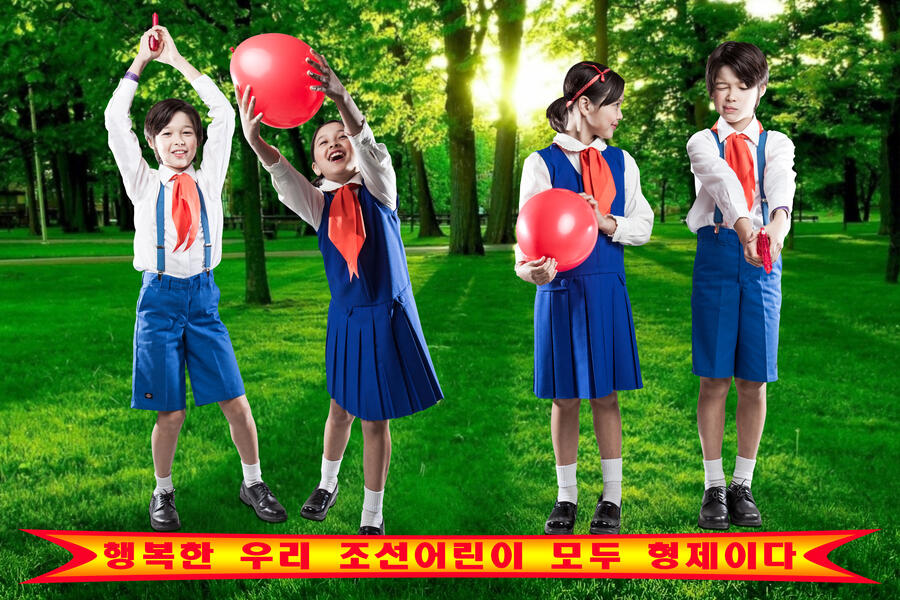 Happy Joseon SiblingsDate Work Completed: 2014 Medium: Archival digital print Size: 22 x 33 inches
Happy Joseon SiblingsDate Work Completed: 2014 Medium: Archival digital print Size: 22 x 33 inches -
 Happy North Korean Little GirlDate Work Completed: 2014 Medium: Archival digital print Size: 22 x 33 inches
Happy North Korean Little GirlDate Work Completed: 2014 Medium: Archival digital print Size: 22 x 33 inches -
 ArirangDate Work Completed: 2014 Medium: Archival digital print Size: 22 x 33 inches
ArirangDate Work Completed: 2014 Medium: Archival digital print Size: 22 x 33 inches -
 Radiant Kim SiunDate Work Completed: 2014 Medium: Archival digital print Size: 22 x 33 inches
Radiant Kim SiunDate Work Completed: 2014 Medium: Archival digital print Size: 22 x 33 inches -
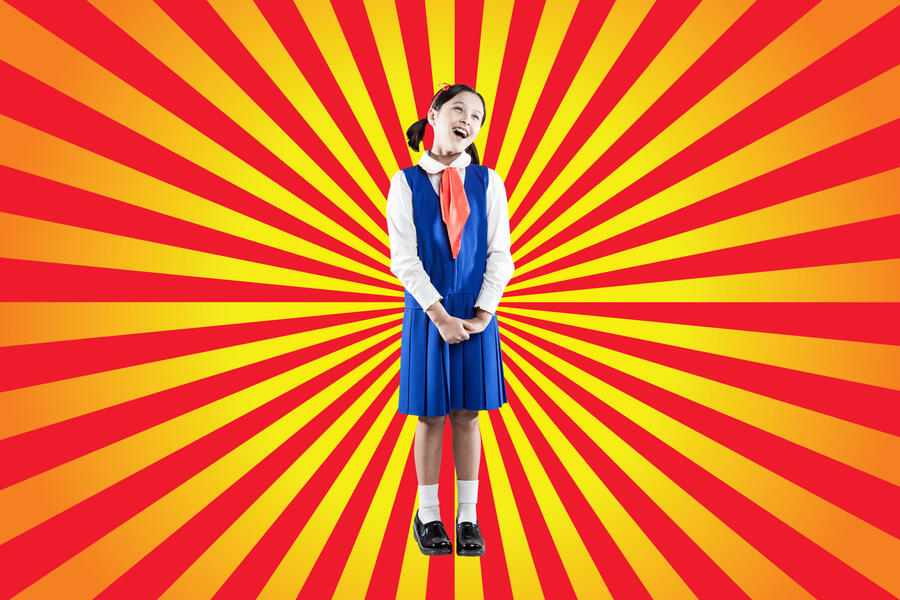 Radiant Kim SiaDate Work Completed: 2014 Medium: Archival digital print Size: 22 x 33 inches
Radiant Kim SiaDate Work Completed: 2014 Medium: Archival digital print Size: 22 x 33 inches -
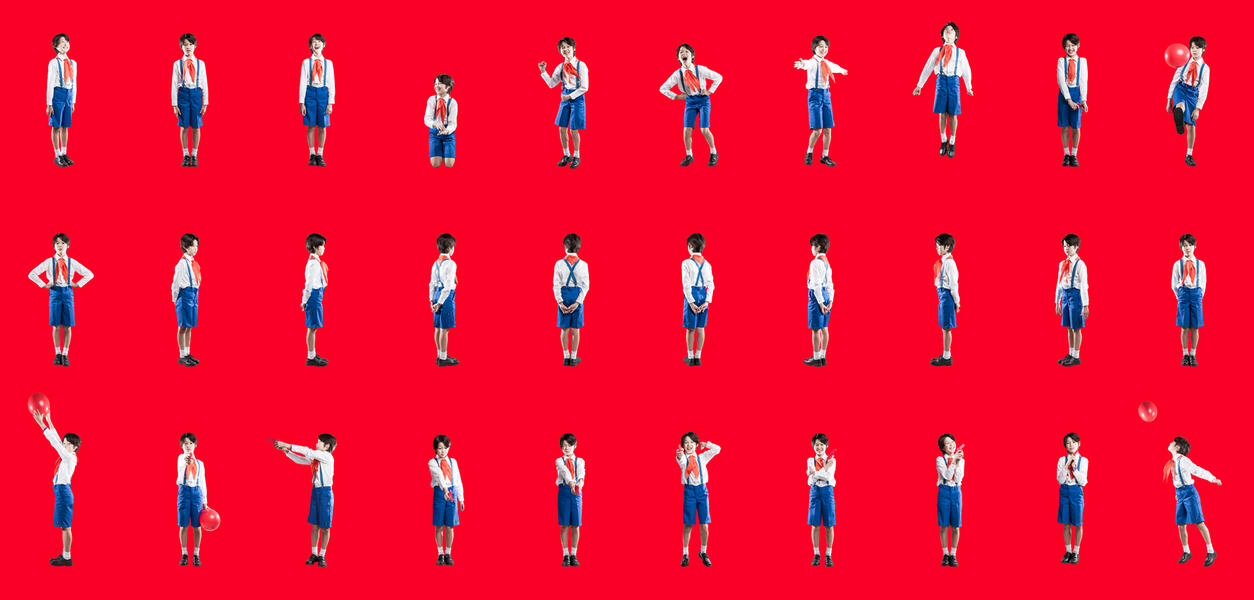 Happy North Korean Children 2-3Date Work Completed: 2014 Medium: Archival digital print Size: 44 x 91 inches
Happy North Korean Children 2-3Date Work Completed: 2014 Medium: Archival digital print Size: 44 x 91 inches -
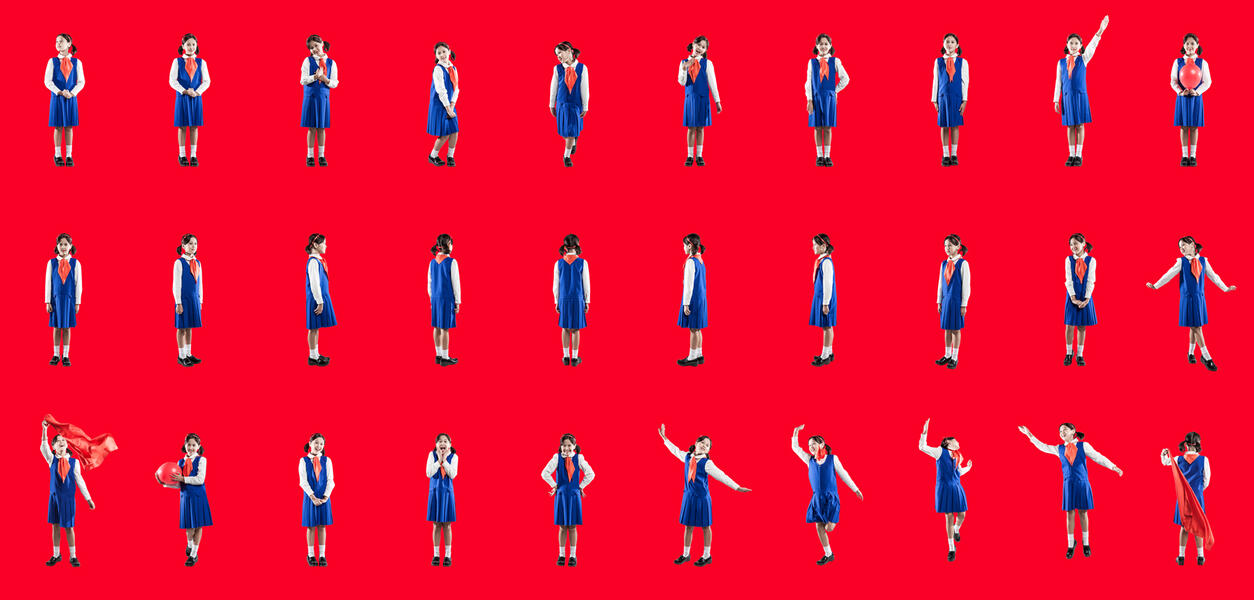 Happy North Korean Children 2-2Date Work Completed: 2014 Medium: Archival digital print Size: 44 x 91 inches
Happy North Korean Children 2-2Date Work Completed: 2014 Medium: Archival digital print Size: 44 x 91 inches -
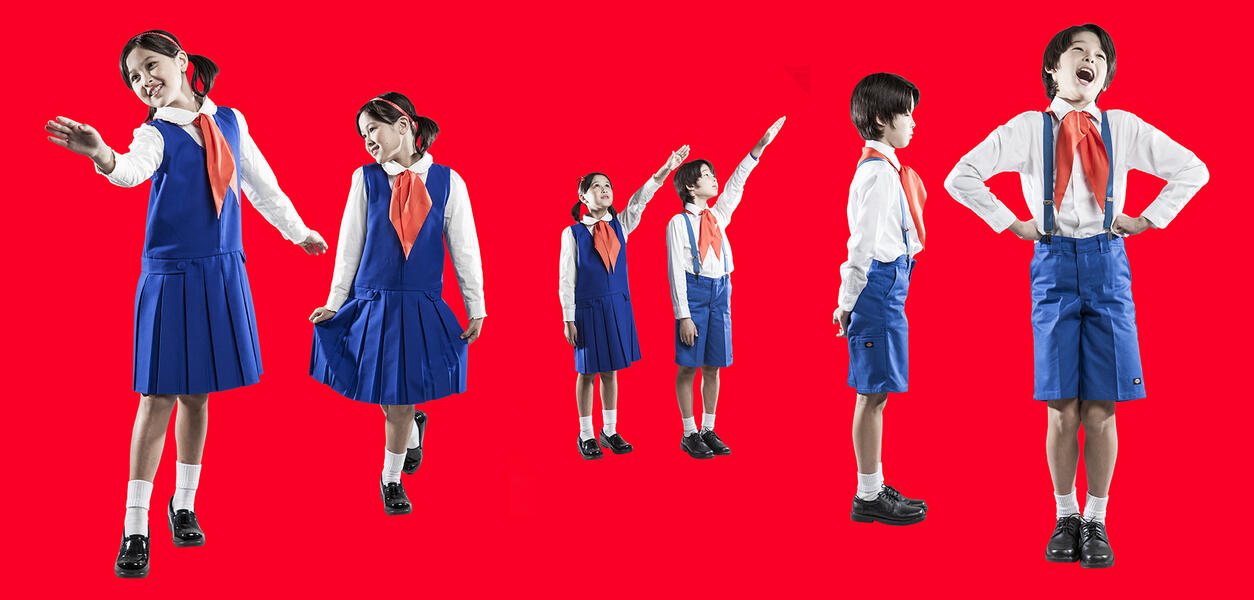 Happy North Korean Children 2-1Date Work Completed: 2014 Medium: Archival digital print Size: 44 x 91 inches
Happy North Korean Children 2-1Date Work Completed: 2014 Medium: Archival digital print Size: 44 x 91 inches -
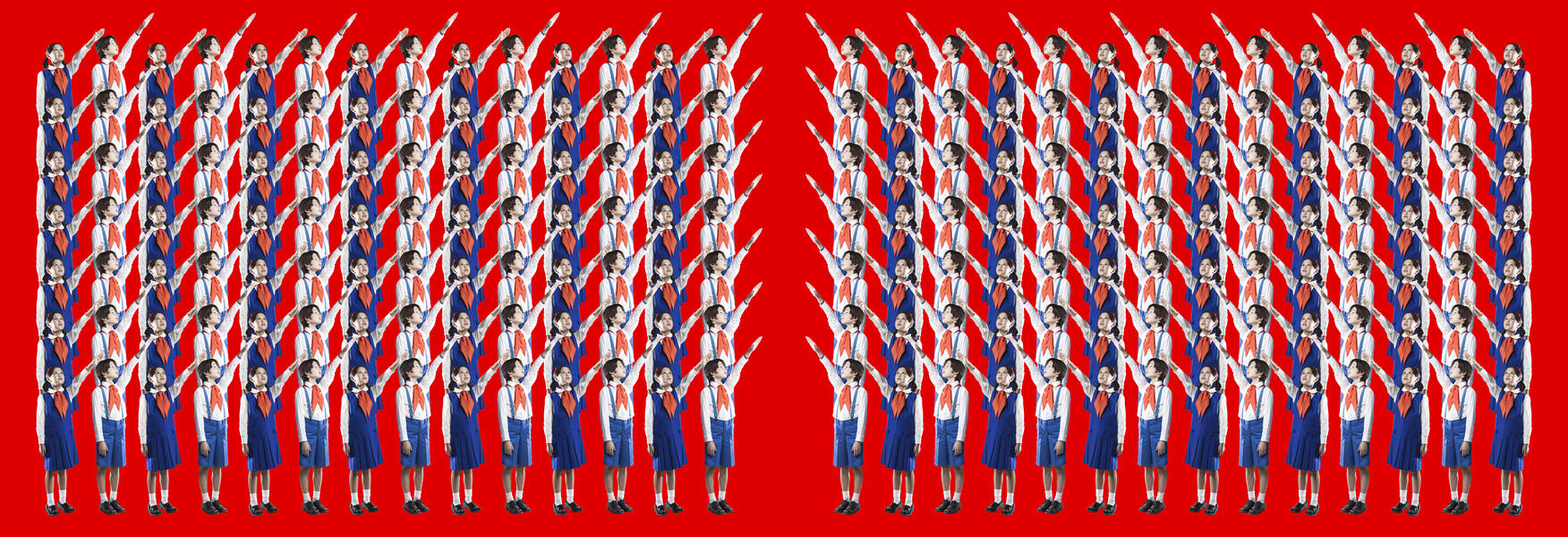 Happy North Korean Children (Diptych)Date Work Completed: 2014 Medium: Archival digital print Size: 44 x 64 inches each
Happy North Korean Children (Diptych)Date Work Completed: 2014 Medium: Archival digital print Size: 44 x 64 inches each -
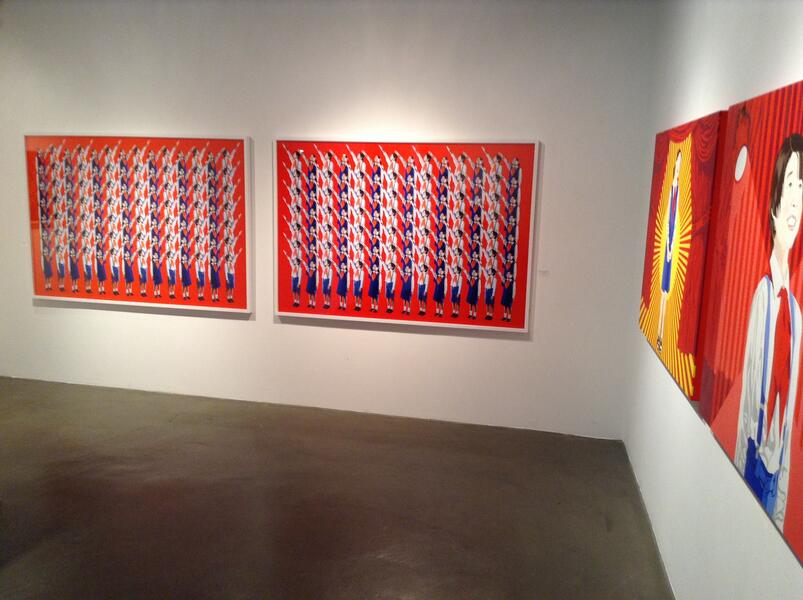 Happy North Korean ChildrenSolo Exhibition by Mina Cheon June 26 – July 29, 2014 Exhibition installation view at the Trunk Gallery, Seoul, Korea
Happy North Korean ChildrenSolo Exhibition by Mina Cheon June 26 – July 29, 2014 Exhibition installation view at the Trunk Gallery, Seoul, Korea
CHOCO·PIE PROPAGANDA
CHOCO·PIE PROPAGANDA
MINA CHEON AKA KIM IL SOON
From North Korea with Love
January 23 - March 1, 2014
Ethan Cohen New York
251 W. 19th St.
New York, NY 10011
Ethan Cohen New York proudly announces the solo exhibition by artist Mina Cheon aka "KIM IL SOON" in her North Korean artistic persona. Her paintings showcasing polipop (political pop art) and her installation "EAT CHOCO·PIE TOGETHER" open Thursday, January 23, 2014 at 6 pm at Ethan Cohen New York, 251 West 19th Street in New York City.
Kim Il Soon is a concept born of the necessity to promote global peace and Korean reunification. Her name purports to link her to the leadership of the Democratic People’s Republic of Korea. She claims to be a nationally recognized DPRK artist as well as a Lieutenant Commander, scholar, devout citizen, hardworking farmer, mother of two, and most importantly, a human being. She vows to continue her artistic propaganda campaign until Korean reunification, if not world peace.
The exhibition is comprised of Kim Il Soon’s North Korean social realist paintings and an installation that covers the entire lower level of the gallery with “Choco·Pie,” a South Korean moonpie-like confectionary manufactured by the company Orion. It has become an overnight sensation in North Korea as a smuggled snack. The Orion Corporation has sponsored this exhibition with 10,000 Choco·Pie in support of the idea that we must “Eat Choco·Pie Together” in order to take steps towards Korean reunification. Choco·Pie has become the most sought after consumer object in North Korea ever since South Koreans donated Choco·Pies to North Korean workers at the jointly managed Kaesong Industrial Complex. It has thus become a symbol of Korean cooperation.
The artist has selected Choco·Pie packaging which contains the traditional character “Jung”, a symbol of love and friendship. By eating Choco·Pie, the American audience can participate in building Korean friendship and awareness of North Korea.
The artist has produced a series of social realist paintings on canvas and watercolors on paper that promote the polipop campaign, which will be on view at the gallery. Additionally she has produced buttons with the slogans “Squirt Water, Not Bullets” and “Make Art, Not Missiles”.
Commentary on Artist Organized Art by Mina Cheon
Critical POLIPOP (Political Pop Art) of Our Mass Consumption Societies
IT IS A SWEET CHOCO·PIE REVOLUTION
Choco·Pie Propaganda: From North Korea with Love
At Ethan Cohen Fine Arts NYC
With the advent of recent UN documents exposures of North Korea’s human rights treatment, our attention to North Korea is more important now than ever. A controversial exhibition that has aroused a diverse range of patriotic sentiments from many Koreans & More, “Choco·Pie Propaganda: From North Korea with Love” is showing at Ethan Cohen Fine Arts, New York (251 W 19 St, NY 10011).
Come and participate in the North Korean political pop art campaign,“EAT CHOCO·PIE TOGETHER,” promoting Korean reunification and global peace.
Art in America: “If you liked Sots Art from Russia (with irony) and Political Pop from China, you’ll feel right at home with these paintings and watercolors, nearly all bright self-portrait parodies of the most propagandistic strain of Socialist Realism. The twist here is that Cheon, a Korean-American artist, has adopted the North Korean persona of Kim Il Soon-farmer, mother, scholar, soldier, artist and distant relative of the nation’s Beloved Leader. Downstairs is a spreading pile of Choco Pie treats, a highly prized form of contraband in the People’s Democratic Republic and a symbol, due to their South Korean origin, of potential reunification.” (Art in America, Lookout)
Post Minjoong Misool And Artist Mina Cheon
A new form of Post Minjoong feminist art has emerged by artist Mina Cheon, who’s practice, Polipop (political pop art) which is also art as activism, aligns with the strong lineage of Minjoong Misool, the politically charged art which emerged in the 1980's democratic movement of South Korea. Paying homage to famous South Korean Minjoong artists such as Lim Oksang and the plethora of primary feminist artists of this era, such as DjinSuk Kim, YunSuknam, Kim In Soon, and Park Youngsook, Mina Cheon (???) aka Kim Il Soon exposes her newest Polipop work, “Choco·Pie Propaganda” at Ethan Cohen New York (through February 28). Ms. Cheon’s Chelsea NYC gallery represents an international hot list of Asian contemporary political-pop artists. She is also exhibiting at South Korea’s Trunk Gallery in Seoul (June 26 – July 29), the leading photography and new media gallery directed by Park Youngsook.
In Cheon’s artist statement released on January 23rd, she writes, “As a Korean, the idea of having two artistic identities, South Korean Mina Cheon and North Korean Kim Il Soon, is an obvious reflection on the country’s state of being divided. It makes all the sense in the world that if a country is split so should be the artist in practice… …While the Korean peninsula may be demarcated by a 38th Parallel, the Demilitarized Zone (DMZ), the history and culture is nevertheless shared, the country is united by one country’s people and language. Moreover, Korea is ubiquitously tied by the never-ending heated debate on reunification and national identity, whether we are at war, armistice, trade, or peace. This is our business.”
The exhibition “Choco·Pie Propaganda” is comprised of Kim Il Soon’s North Korean social realist paintings and an installation that covers the entire lower level gallery with “Choco·Pie,” a South Korean moonpie-like confectionary manufactured by the company Orion. Choco·Pie is an overnight sensation in North Korea. It is smuggled in as a favorite snack. The Orion Corp. has kindly donated 10,000 individually wrapped Choco·Pie cakes in support of Cheon’s Choco·Pie installation, “Eat Choco·Pie Together,” and her call for Korean reunification. The January 23rd opening at Ethan Cohen New York included the artist’s recital of 55 special ways of saying Dear Leader in North Korea. In only three days a Choco·Pie sensation has gone viral, as reported in the Choco·Pie coverage of CNN.
Mina Cheon Studio would like to acknowledge the Orion Co. of South Korea with a special thank you for the kind donation of 10,000 Choco·Pies for the artist’s installation “Eat Choco·Pie Together” currently showing at the Ethan Cohen Gallery in New York.
MINA CHEON AKA KIM IL SOON
From North Korea with Love
January 23 - March 1, 2014
Ethan Cohen New York
251 W. 19th St.
New York, NY 10011
Ethan Cohen New York proudly announces the solo exhibition by artist Mina Cheon aka "KIM IL SOON" in her North Korean artistic persona. Her paintings showcasing polipop (political pop art) and her installation "EAT CHOCO·PIE TOGETHER" open Thursday, January 23, 2014 at 6 pm at Ethan Cohen New York, 251 West 19th Street in New York City.
Kim Il Soon is a concept born of the necessity to promote global peace and Korean reunification. Her name purports to link her to the leadership of the Democratic People’s Republic of Korea. She claims to be a nationally recognized DPRK artist as well as a Lieutenant Commander, scholar, devout citizen, hardworking farmer, mother of two, and most importantly, a human being. She vows to continue her artistic propaganda campaign until Korean reunification, if not world peace.
The exhibition is comprised of Kim Il Soon’s North Korean social realist paintings and an installation that covers the entire lower level of the gallery with “Choco·Pie,” a South Korean moonpie-like confectionary manufactured by the company Orion. It has become an overnight sensation in North Korea as a smuggled snack. The Orion Corporation has sponsored this exhibition with 10,000 Choco·Pie in support of the idea that we must “Eat Choco·Pie Together” in order to take steps towards Korean reunification. Choco·Pie has become the most sought after consumer object in North Korea ever since South Koreans donated Choco·Pies to North Korean workers at the jointly managed Kaesong Industrial Complex. It has thus become a symbol of Korean cooperation.
The artist has selected Choco·Pie packaging which contains the traditional character “Jung”, a symbol of love and friendship. By eating Choco·Pie, the American audience can participate in building Korean friendship and awareness of North Korea.
The artist has produced a series of social realist paintings on canvas and watercolors on paper that promote the polipop campaign, which will be on view at the gallery. Additionally she has produced buttons with the slogans “Squirt Water, Not Bullets” and “Make Art, Not Missiles”.
Commentary on Artist Organized Art by Mina Cheon
Critical POLIPOP (Political Pop Art) of Our Mass Consumption Societies
IT IS A SWEET CHOCO·PIE REVOLUTION
Choco·Pie Propaganda: From North Korea with Love
At Ethan Cohen Fine Arts NYC
With the advent of recent UN documents exposures of North Korea’s human rights treatment, our attention to North Korea is more important now than ever. A controversial exhibition that has aroused a diverse range of patriotic sentiments from many Koreans & More, “Choco·Pie Propaganda: From North Korea with Love” is showing at Ethan Cohen Fine Arts, New York (251 W 19 St, NY 10011).
Come and participate in the North Korean political pop art campaign,“EAT CHOCO·PIE TOGETHER,” promoting Korean reunification and global peace.
Art in America: “If you liked Sots Art from Russia (with irony) and Political Pop from China, you’ll feel right at home with these paintings and watercolors, nearly all bright self-portrait parodies of the most propagandistic strain of Socialist Realism. The twist here is that Cheon, a Korean-American artist, has adopted the North Korean persona of Kim Il Soon-farmer, mother, scholar, soldier, artist and distant relative of the nation’s Beloved Leader. Downstairs is a spreading pile of Choco Pie treats, a highly prized form of contraband in the People’s Democratic Republic and a symbol, due to their South Korean origin, of potential reunification.” (Art in America, Lookout)
Post Minjoong Misool And Artist Mina Cheon
A new form of Post Minjoong feminist art has emerged by artist Mina Cheon, who’s practice, Polipop (political pop art) which is also art as activism, aligns with the strong lineage of Minjoong Misool, the politically charged art which emerged in the 1980's democratic movement of South Korea. Paying homage to famous South Korean Minjoong artists such as Lim Oksang and the plethora of primary feminist artists of this era, such as DjinSuk Kim, YunSuknam, Kim In Soon, and Park Youngsook, Mina Cheon (???) aka Kim Il Soon exposes her newest Polipop work, “Choco·Pie Propaganda” at Ethan Cohen New York (through February 28). Ms. Cheon’s Chelsea NYC gallery represents an international hot list of Asian contemporary political-pop artists. She is also exhibiting at South Korea’s Trunk Gallery in Seoul (June 26 – July 29), the leading photography and new media gallery directed by Park Youngsook.
In Cheon’s artist statement released on January 23rd, she writes, “As a Korean, the idea of having two artistic identities, South Korean Mina Cheon and North Korean Kim Il Soon, is an obvious reflection on the country’s state of being divided. It makes all the sense in the world that if a country is split so should be the artist in practice… …While the Korean peninsula may be demarcated by a 38th Parallel, the Demilitarized Zone (DMZ), the history and culture is nevertheless shared, the country is united by one country’s people and language. Moreover, Korea is ubiquitously tied by the never-ending heated debate on reunification and national identity, whether we are at war, armistice, trade, or peace. This is our business.”
The exhibition “Choco·Pie Propaganda” is comprised of Kim Il Soon’s North Korean social realist paintings and an installation that covers the entire lower level gallery with “Choco·Pie,” a South Korean moonpie-like confectionary manufactured by the company Orion. Choco·Pie is an overnight sensation in North Korea. It is smuggled in as a favorite snack. The Orion Corp. has kindly donated 10,000 individually wrapped Choco·Pie cakes in support of Cheon’s Choco·Pie installation, “Eat Choco·Pie Together,” and her call for Korean reunification. The January 23rd opening at Ethan Cohen New York included the artist’s recital of 55 special ways of saying Dear Leader in North Korea. In only three days a Choco·Pie sensation has gone viral, as reported in the Choco·Pie coverage of CNN.
Mina Cheon Studio would like to acknowledge the Orion Co. of South Korea with a special thank you for the kind donation of 10,000 Choco·Pies for the artist’s installation “Eat Choco·Pie Together” currently showing at the Ethan Cohen Gallery in New York.
-
 Eat Choco-Pie Together10,000 Choco-Pie Installation (with pose by Mina Cheon aka Kim Il Soon) 153 x 159 x 5 inches Site specific, interactive, audience participation installation Sponsored by Orion Co., Korea And, whose Choco·Pie is it? The installation of 10,000 Choco·Pie for the audience to eat was kindly donated by Orion Co. in support of the installation Eat Choco·Pie Together that promotes Korean reunification and global peace. Kim Il Soon unconsciously exposed to the outside world, had her Duchampian moment of making a good decision. Duchamp selects a toilet and she selects a relevant intercultural consumer object of our time, the Choco·Pie. This South Korean moon pie-like confectionary has become an overnight sensation in North Korea as a smuggled favorite snack and is worth three bowls of rice, and favored especially by the elite class North Korean women. Comparable to the American Twinkie, Choco·Pie has been sought after in North Korea, ever since South Koreans gifted Choco·Pie to the North Korean laborers at the Kaesong Industrial Complex as a token of appreciation. Symbolically, the Choco·Pie has opened up North Korea and formed a loving exchange between the North and South, something that even the Korean governments have failed to do. Truly this is a postmodern co-national co-operation, one that is a viral and an addictive kind. The Chinese character “Jung” on the packaging means love and friendship. Choco·Pie is ours to eat, for North and South Korea, and for America – Let’s Eat Choco·Pie Together – for “Han guk” means “one country,” not Republic of Korea, not Democratic People’s Republic of Korea. This is a “Sweet Revolution.” The exhibition “CHOCO·PIE PROPAGANDA: From North Korea with Love” by Mina Cheon aka Kim Il Soon was shown at Ethan Cohen New York (ECNY), January 28 - March 1, 2014. ECNY is located on 251 W. 19th St, between 7 and 8th Ave, New York, NY 10011. http://www.ecfa.com/
Eat Choco-Pie Together10,000 Choco-Pie Installation (with pose by Mina Cheon aka Kim Il Soon) 153 x 159 x 5 inches Site specific, interactive, audience participation installation Sponsored by Orion Co., Korea And, whose Choco·Pie is it? The installation of 10,000 Choco·Pie for the audience to eat was kindly donated by Orion Co. in support of the installation Eat Choco·Pie Together that promotes Korean reunification and global peace. Kim Il Soon unconsciously exposed to the outside world, had her Duchampian moment of making a good decision. Duchamp selects a toilet and she selects a relevant intercultural consumer object of our time, the Choco·Pie. This South Korean moon pie-like confectionary has become an overnight sensation in North Korea as a smuggled favorite snack and is worth three bowls of rice, and favored especially by the elite class North Korean women. Comparable to the American Twinkie, Choco·Pie has been sought after in North Korea, ever since South Koreans gifted Choco·Pie to the North Korean laborers at the Kaesong Industrial Complex as a token of appreciation. Symbolically, the Choco·Pie has opened up North Korea and formed a loving exchange between the North and South, something that even the Korean governments have failed to do. Truly this is a postmodern co-national co-operation, one that is a viral and an addictive kind. The Chinese character “Jung” on the packaging means love and friendship. Choco·Pie is ours to eat, for North and South Korea, and for America – Let’s Eat Choco·Pie Together – for “Han guk” means “one country,” not Republic of Korea, not Democratic People’s Republic of Korea. This is a “Sweet Revolution.” The exhibition “CHOCO·PIE PROPAGANDA: From North Korea with Love” by Mina Cheon aka Kim Il Soon was shown at Ethan Cohen New York (ECNY), January 28 - March 1, 2014. ECNY is located on 251 W. 19th St, between 7 and 8th Ave, New York, NY 10011. http://www.ecfa.com/ -
 1.5
1.5 -
 Happy North Korean Little BoyDate Work Completed: 2013-2014 Medium: acrylic on canvas Size: 36 x 48 x 1.5 inches Description: This is Kim Il Soon’s son Kim Siun, the first of the two siblings, singing on stage as a devoted happy North Korean little boy.
Happy North Korean Little BoyDate Work Completed: 2013-2014 Medium: acrylic on canvas Size: 36 x 48 x 1.5 inches Description: This is Kim Il Soon’s son Kim Siun, the first of the two siblings, singing on stage as a devoted happy North Korean little boy. -
 Happy North Korean Little GirlDate Work Completed: 2013-2014 Medium: acrylic on canvas Size: 36 x 48 x 1.5 inches Description: Kim Il Soon is blessed with two children, daughter Kim Sia and son Kim Siun. She does not have a husband since she is married to the nation, and by default married to the Dear Leader. This is her daughter Kim Si-a, singing on stage as a devoted happy North Korean little girl.
Happy North Korean Little GirlDate Work Completed: 2013-2014 Medium: acrylic on canvas Size: 36 x 48 x 1.5 inches Description: Kim Il Soon is blessed with two children, daughter Kim Sia and son Kim Siun. She does not have a husband since she is married to the nation, and by default married to the Dear Leader. This is her daughter Kim Si-a, singing on stage as a devoted happy North Korean little girl. -
 1784 Chateau Lafite Bordeaux detail
1784 Chateau Lafite Bordeaux detail -
 CHOCO·PIE PROPAGANDAExhibition images at Ethan Cohen New York Gallery, January 28 - March 1, 2014 Stacks of boxes that housed the 10,000 Choco-Pies that came from Orion Co. Korea. Reference: Andy Warhol Brillo Boxes
CHOCO·PIE PROPAGANDAExhibition images at Ethan Cohen New York Gallery, January 28 - March 1, 2014 Stacks of boxes that housed the 10,000 Choco-Pies that came from Orion Co. Korea. Reference: Andy Warhol Brillo Boxes -
 Eat Choco-Pie Together10,000 Choco-Pie Installation (gallery installation shot at Ethan Cohen New York Gallery) 153 x 159 x 5 inches Site specific, interactive, audience participation installation Sponsored by Orion Co., Korea
Eat Choco-Pie Together10,000 Choco-Pie Installation (gallery installation shot at Ethan Cohen New York Gallery) 153 x 159 x 5 inches Site specific, interactive, audience participation installation Sponsored by Orion Co., Korea -
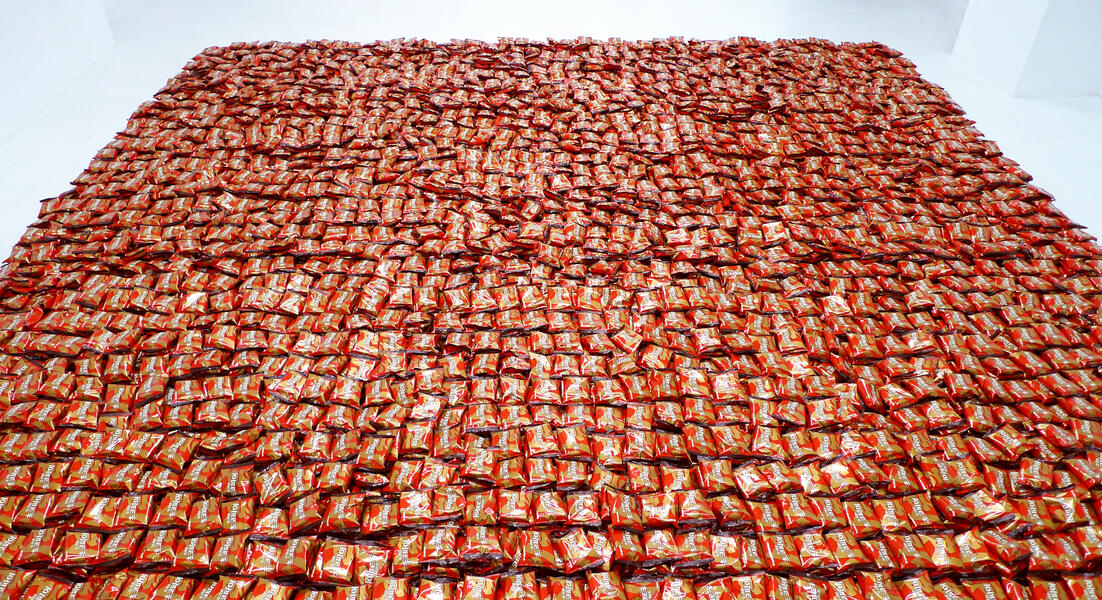 Eat Choco-Pie TogetherAt the Ethan Cohen New York gallery, Alongside paintings hung on the walls, the installation of Choco·Pies for the audience to eat promotes Korean unification and global peace through a Gonzalez-Torres style floor piece. The food is a South Korean confectionary has become an overnight sensation in North Korea as a smuggled good. 10,000 Choco-Pie Installation (gallery installation shot at Ethan Cohen New York Gallery) 153 x 159 x 5 inches Site specific, interactive, audience participation installation Sponsored by Orion Co., Korea
Eat Choco-Pie TogetherAt the Ethan Cohen New York gallery, Alongside paintings hung on the walls, the installation of Choco·Pies for the audience to eat promotes Korean unification and global peace through a Gonzalez-Torres style floor piece. The food is a South Korean confectionary has become an overnight sensation in North Korea as a smuggled good. 10,000 Choco-Pie Installation (gallery installation shot at Ethan Cohen New York Gallery) 153 x 159 x 5 inches Site specific, interactive, audience participation installation Sponsored by Orion Co., Korea -
 Eat Choco-Pie TogetherDate Work Completed: 2014 Medium: 10,000 Choco-Pie Installation Site specific, interactive, audience participation installation Size: 153 x 159 x 5 inches Description: At the Ethan Cohen New York gallery, Alongside paintings hung on the walls, the installation of Choco·Pies for the audience to eat promotes Korean unification and global peace through a Gonzalez-Torres style floor piece. The food is a South Korean confectionary has become an overnight sensation in North Korea as a smuggled good. Other: Choco-Pies were kindly donated by the South Korean manufacturing company Orion Co.
Eat Choco-Pie TogetherDate Work Completed: 2014 Medium: 10,000 Choco-Pie Installation Site specific, interactive, audience participation installation Size: 153 x 159 x 5 inches Description: At the Ethan Cohen New York gallery, Alongside paintings hung on the walls, the installation of Choco·Pies for the audience to eat promotes Korean unification and global peace through a Gonzalez-Torres style floor piece. The food is a South Korean confectionary has become an overnight sensation in North Korea as a smuggled good. Other: Choco-Pies were kindly donated by the South Korean manufacturing company Orion Co. -
Kim Il Soon RecitalPerformance reciting at least 55 ways to say Dear Leader in North Korea by Mina Cheon aka Kim Il Soon, at Ethan Cohen New York Gallery, 2014. Alongside the paintings, the artist appears as Kim Il Soon to perform a mixture of Fluxus type score and political art campaign for global peace and Korean unification. The first time was during the Pulse Art Fair NY 2013, passing out peace buttons, and appeared in public spaces many times after.
POLIPOP AND PAINTINGS
Polipop & Paintings
Mina Cheon's Solo Exhibition at Maryland Art Place, Baltimore, Maryland
May 3 – June 30, 2012
Maryland Art Place (MAP) proudly announces Mina Cheon’s solo exhibition Polipop & Paintings, May 3 - June 30, 2012. The exhibition includes a series of digital paintings (8x5 feet each) coming from her mid-career solo exhibit Polipop (Political Pop Art) at the Sungkok Art Museum in Seoul, Korea; works that became an instant media sensation in Korea early this year.
After many years working as an installation and new media artist, the MAP solo exhibition illuminates Cheon’s background as a painter by combining her new Polipop digital paintings with her last hand-painted masterpiece, 15 Billion Years Painting. This mammoth 72x8 foot painting was created for the renowned abstract-expressionist painter Grace Hartigan between 1997 -1998 while Cheon worked with her at the Hoffberger School of Painting at the Maryland Institute College of Art (MICA). Produced through the use of florescent acrylic on canvas, and lit under black light, MAP is showcasing this work for the first time under natural light. The 15 Billion Years painting is a celebration of popular science and a cosmic portrayal of the Universe. The painting was also the starting point of her artistic development. Cheon’s career communicates the relevance of working relationships between artist, institution and instructor over time, and the significance thereof.
Polipop is an art world that intersects politics and pop art. It takes serious discussions surrounding geopolitics of global, media culture and livens them up as accessible, eye-catching, fun pop art. With the use of strong primary colors and bold outlines, Cheon’s large scaled digital paintings mimic the language of advertisements, political posters, and propaganda banners. Each unique digital painting is collaged with images from the Internet, rescaled on the computer, and printed on canvas.
Some History:
In 2004, Cheon showed at the first Athena’s Daughters exhibition curated by Grace Hartigan for Maryland Art Place, where Cheon’s very first “political pop art” Half Moon Eyes documented her visitation to North Korea. This visit highlighted Cheon’s interest in political construction on beauty, and the triangular relationship between America and North and South Korea.
By 2008, Cheon’s Addressing Dolls exhibition at the C.Grimaldis Gallery in Baltimore portrayed the stark contrast between communist North Korea and capitalist South Korea through girls’ playthings; Cheon exhibited her North Korean doll installation 99 Miss Kim(s) on one side and a series of South Korean life-size paper doll dresses Dresses for Different Events on the other.
Since Cheon’s visit to North Korea in 2004, she traveled to places she considered ‘contested spaces,’ where geo-political anxieties demonstrated conflicts between neighboring, yet rivalry Asian countries. Cheon went to Japan during the 2008 Summer Olympics in China specifically to interview Japanese people about their thoughts of the Olympics in Beijing. Cheon also traveled to Dokdo in 2009, a contested island that sits between Korea and Japan, an island that is still territorially fought over today. The documents of these trips are included in her new body of work that constantly questions the relationship between the East and West, as well as the relationship between Asian countries such as South and North Korea, Japan, and China.
Today Cheon uses the plethora of images of President Barack Obama as Polipop. Drawing comparisons to Chairman Mao in China, Cheon refers to Obama as the Polipop icon of our time. From the iconic American President and the war in the Middle East, to the rise of the Asian Century and circulation of global media, the exhibition includes digital paintings on Obama, race, pop culture, technology, capitalism, and Asia.
Unlike many Asian students coming to and leaving Baltimore for study, Korean-American new media artist, Cheon stayed in Baltimore becoming part of the faculty at MICA; living between Baltimore, New York, and Seoul – three cities, which she considers home. This year, Cheon presents three consecutive solo exhibitions in these cities; MAP being the second installment after the Sungkok Art Museum exhibition earlier this year. Cheon will end 2012 this fall at the White Box in New York City. All three exhibitions include the Polipop title and theme, however Cheon keeps a sense of individuality between each.
From her time with Grace Hartigan to how Cheon situated herself in Baltimore; her course towards the creation of Polipop was charted. Cheon’s artistic history cannot go unnoticed and as Hartigan once said to Cheon in 1998, “if anything, it is because you are a painter first.”
Available at MAP: POLIPOP exhibition catalog from the Sungkok Art Musum (Seoul, Korea, 2012) that includes writings from the Sungkok Art Museum’s chief curator Tcheon-nahm Park; art historian and scholar on race and culture, Leslie King-Hammond; cyber-feminist scholar Irina Aristarkhova; and cultural critic Pamela Haag. The catalog includes full color pages of Cheon’s digital paintings and her other video and sculptural installation works and is 170-page artist catalog. The exhibition at the Sungkok Art Museum that is documented in this catalog was covered in many Korean daily news, the Internet, radio, and television broadcast news including Korean Broadcasting (KBS), Seoul Broadcasting Station (SBS), YTN Korean 24 Hours News Channel, TV Chosun (Korea), and the English channel Korea’s Global TV Arirang.
Maryland Art Place
8 Market Place #100, Baltimore, MD 21202
(410) 962-8565
Mina Cheon's Solo Exhibition at Maryland Art Place, Baltimore, Maryland
May 3 – June 30, 2012
Maryland Art Place (MAP) proudly announces Mina Cheon’s solo exhibition Polipop & Paintings, May 3 - June 30, 2012. The exhibition includes a series of digital paintings (8x5 feet each) coming from her mid-career solo exhibit Polipop (Political Pop Art) at the Sungkok Art Museum in Seoul, Korea; works that became an instant media sensation in Korea early this year.
After many years working as an installation and new media artist, the MAP solo exhibition illuminates Cheon’s background as a painter by combining her new Polipop digital paintings with her last hand-painted masterpiece, 15 Billion Years Painting. This mammoth 72x8 foot painting was created for the renowned abstract-expressionist painter Grace Hartigan between 1997 -1998 while Cheon worked with her at the Hoffberger School of Painting at the Maryland Institute College of Art (MICA). Produced through the use of florescent acrylic on canvas, and lit under black light, MAP is showcasing this work for the first time under natural light. The 15 Billion Years painting is a celebration of popular science and a cosmic portrayal of the Universe. The painting was also the starting point of her artistic development. Cheon’s career communicates the relevance of working relationships between artist, institution and instructor over time, and the significance thereof.
Polipop is an art world that intersects politics and pop art. It takes serious discussions surrounding geopolitics of global, media culture and livens them up as accessible, eye-catching, fun pop art. With the use of strong primary colors and bold outlines, Cheon’s large scaled digital paintings mimic the language of advertisements, political posters, and propaganda banners. Each unique digital painting is collaged with images from the Internet, rescaled on the computer, and printed on canvas.
Some History:
In 2004, Cheon showed at the first Athena’s Daughters exhibition curated by Grace Hartigan for Maryland Art Place, where Cheon’s very first “political pop art” Half Moon Eyes documented her visitation to North Korea. This visit highlighted Cheon’s interest in political construction on beauty, and the triangular relationship between America and North and South Korea.
By 2008, Cheon’s Addressing Dolls exhibition at the C.Grimaldis Gallery in Baltimore portrayed the stark contrast between communist North Korea and capitalist South Korea through girls’ playthings; Cheon exhibited her North Korean doll installation 99 Miss Kim(s) on one side and a series of South Korean life-size paper doll dresses Dresses for Different Events on the other.
Since Cheon’s visit to North Korea in 2004, she traveled to places she considered ‘contested spaces,’ where geo-political anxieties demonstrated conflicts between neighboring, yet rivalry Asian countries. Cheon went to Japan during the 2008 Summer Olympics in China specifically to interview Japanese people about their thoughts of the Olympics in Beijing. Cheon also traveled to Dokdo in 2009, a contested island that sits between Korea and Japan, an island that is still territorially fought over today. The documents of these trips are included in her new body of work that constantly questions the relationship between the East and West, as well as the relationship between Asian countries such as South and North Korea, Japan, and China.
Today Cheon uses the plethora of images of President Barack Obama as Polipop. Drawing comparisons to Chairman Mao in China, Cheon refers to Obama as the Polipop icon of our time. From the iconic American President and the war in the Middle East, to the rise of the Asian Century and circulation of global media, the exhibition includes digital paintings on Obama, race, pop culture, technology, capitalism, and Asia.
Unlike many Asian students coming to and leaving Baltimore for study, Korean-American new media artist, Cheon stayed in Baltimore becoming part of the faculty at MICA; living between Baltimore, New York, and Seoul – three cities, which she considers home. This year, Cheon presents three consecutive solo exhibitions in these cities; MAP being the second installment after the Sungkok Art Museum exhibition earlier this year. Cheon will end 2012 this fall at the White Box in New York City. All three exhibitions include the Polipop title and theme, however Cheon keeps a sense of individuality between each.
From her time with Grace Hartigan to how Cheon situated herself in Baltimore; her course towards the creation of Polipop was charted. Cheon’s artistic history cannot go unnoticed and as Hartigan once said to Cheon in 1998, “if anything, it is because you are a painter first.”
Available at MAP: POLIPOP exhibition catalog from the Sungkok Art Musum (Seoul, Korea, 2012) that includes writings from the Sungkok Art Museum’s chief curator Tcheon-nahm Park; art historian and scholar on race and culture, Leslie King-Hammond; cyber-feminist scholar Irina Aristarkhova; and cultural critic Pamela Haag. The catalog includes full color pages of Cheon’s digital paintings and her other video and sculptural installation works and is 170-page artist catalog. The exhibition at the Sungkok Art Museum that is documented in this catalog was covered in many Korean daily news, the Internet, radio, and television broadcast news including Korean Broadcasting (KBS), Seoul Broadcasting Station (SBS), YTN Korean 24 Hours News Channel, TV Chosun (Korea), and the English channel Korea’s Global TV Arirang.
Maryland Art Place
8 Market Place #100, Baltimore, MD 21202
(410) 962-8565
-
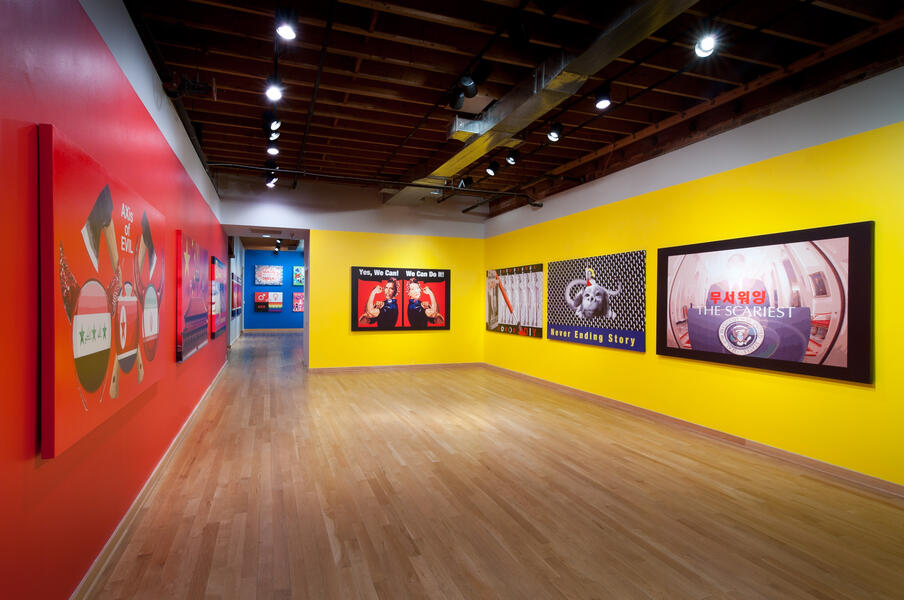 Polipop and Paintings15 of Mina Cheon's Polipop Digital Paintings (8x5 feet each) from Korea were shipped over for a newly curated Polipop exhibitions at Maryland Art Place, the second of the Polipop exhibition series. This exhibition highlights Cheon's background as a painter and includes selections of digital paintings along side her last hand painting 15 Billion Years of the Traveling Atom, 5 sections that culminate in a 72 x 8 feet long painting. This gallery shot shows, three primary colors and digital paintings in the themes of Obama and the war, relationship between East and West.
Polipop and Paintings15 of Mina Cheon's Polipop Digital Paintings (8x5 feet each) from Korea were shipped over for a newly curated Polipop exhibitions at Maryland Art Place, the second of the Polipop exhibition series. This exhibition highlights Cheon's background as a painter and includes selections of digital paintings along side her last hand painting 15 Billion Years of the Traveling Atom, 5 sections that culminate in a 72 x 8 feet long painting. This gallery shot shows, three primary colors and digital paintings in the themes of Obama and the war, relationship between East and West. -
 Polipop and Paintings15 of Mina Cheon's Polipop Digital Paintings (8x5 feet each) from Korea were shipped over for a newly curated Polipop exhibitions at Maryland Art Place, the second of the Polipop exhibition series. This exhibition highlights Cheon's background as a painter and includes selections of digital paintings along side her last hand painting 15 Billion Years of the Traveling Atom, 5 sections that culminate in a 72 x 8 feet long painting. This gallery shot shows digital paintings in the themes of Obama and the war.
Polipop and Paintings15 of Mina Cheon's Polipop Digital Paintings (8x5 feet each) from Korea were shipped over for a newly curated Polipop exhibitions at Maryland Art Place, the second of the Polipop exhibition series. This exhibition highlights Cheon's background as a painter and includes selections of digital paintings along side her last hand painting 15 Billion Years of the Traveling Atom, 5 sections that culminate in a 72 x 8 feet long painting. This gallery shot shows digital paintings in the themes of Obama and the war. -
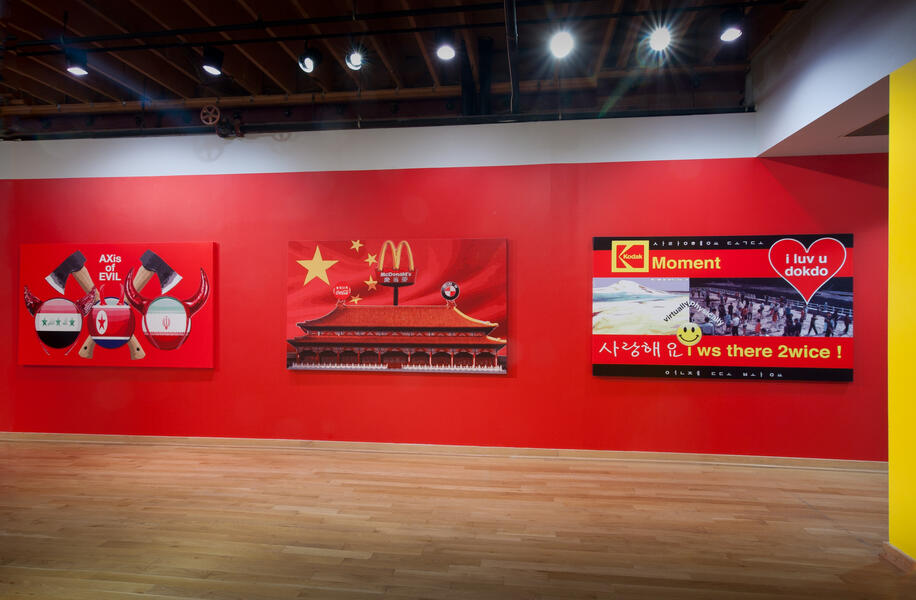 Polipop and Paintings15 of Mina Cheon's Polipop Digital Paintings (8x5 feet each) from Korea were shipped over for a newly curated Polipop exhibitions at Maryland Art Place, the second of the Polipop exhibition series. This exhibition highlights Cheon's background as a painter and includes selections of digital paintings along side her last hand painting 15 Billion Years of the Traveling Atom, 5 sections that culminate in a 72 x 8 feet long painting. This gallery shot shows digital paintings that looks at the relationship between East and West.
Polipop and Paintings15 of Mina Cheon's Polipop Digital Paintings (8x5 feet each) from Korea were shipped over for a newly curated Polipop exhibitions at Maryland Art Place, the second of the Polipop exhibition series. This exhibition highlights Cheon's background as a painter and includes selections of digital paintings along side her last hand painting 15 Billion Years of the Traveling Atom, 5 sections that culminate in a 72 x 8 feet long painting. This gallery shot shows digital paintings that looks at the relationship between East and West. -
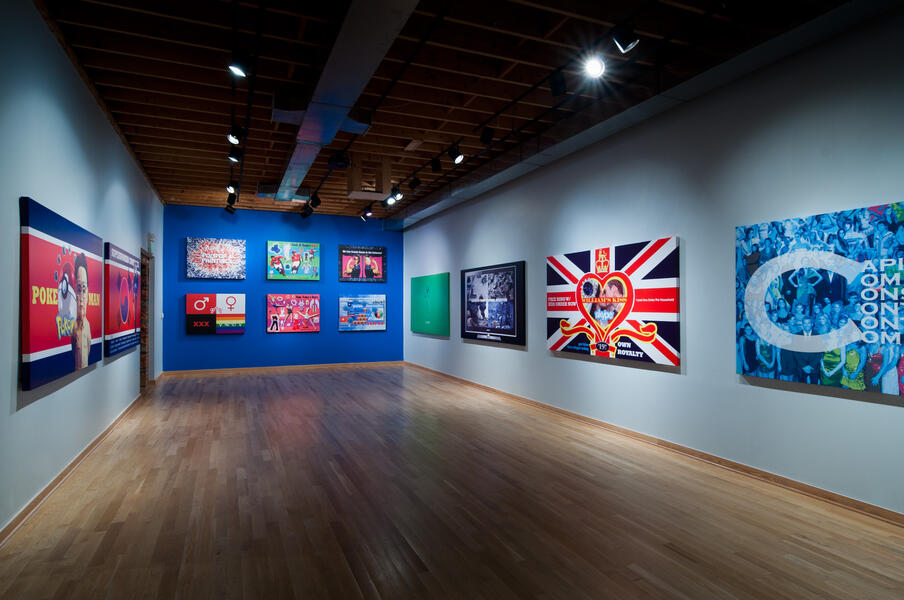 Polipop and Paintings15 of Mina Cheon's Polipop Digital Paintings (8x5 feet each) from Korea were shipped over for a newly curated Polipop exhibitions at Maryland Art Place, the second of the Polipop exhibition series. This exhibition highlights Cheon's background as a painter and includes selections of digital paintings along side her last hand painting 15 Billion Years of the Traveling Atom, 5 sections that culminate in a 72 x 8 feet long painting. This gallery shot shows, large digital paintings with the themes of capitalism and the environment, while a new series of six smaller Polipop digital paintings at the size of 4 x 3 feet were created just for the exhibition at MAP.
Polipop and Paintings15 of Mina Cheon's Polipop Digital Paintings (8x5 feet each) from Korea were shipped over for a newly curated Polipop exhibitions at Maryland Art Place, the second of the Polipop exhibition series. This exhibition highlights Cheon's background as a painter and includes selections of digital paintings along side her last hand painting 15 Billion Years of the Traveling Atom, 5 sections that culminate in a 72 x 8 feet long painting. This gallery shot shows, large digital paintings with the themes of capitalism and the environment, while a new series of six smaller Polipop digital paintings at the size of 4 x 3 feet were created just for the exhibition at MAP. -
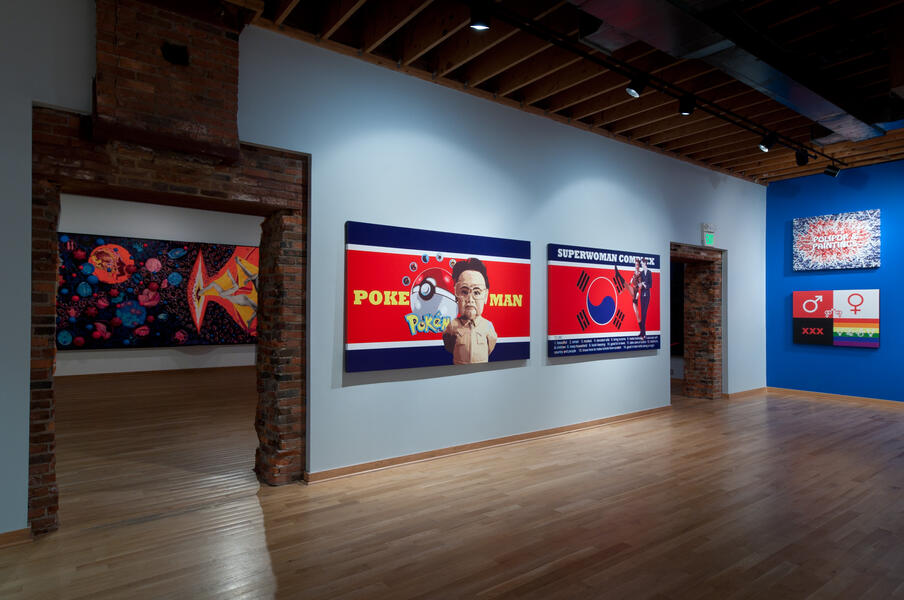 Polipop and PaintingsThis gallery shot shows, large digital paintings looking at the relationship between North and South Korea. This image shows the relationship between the rooms at Maryland Art Place and the entering point into the 15 Billion Years painting project.
Polipop and PaintingsThis gallery shot shows, large digital paintings looking at the relationship between North and South Korea. This image shows the relationship between the rooms at Maryland Art Place and the entering point into the 15 Billion Years painting project. -
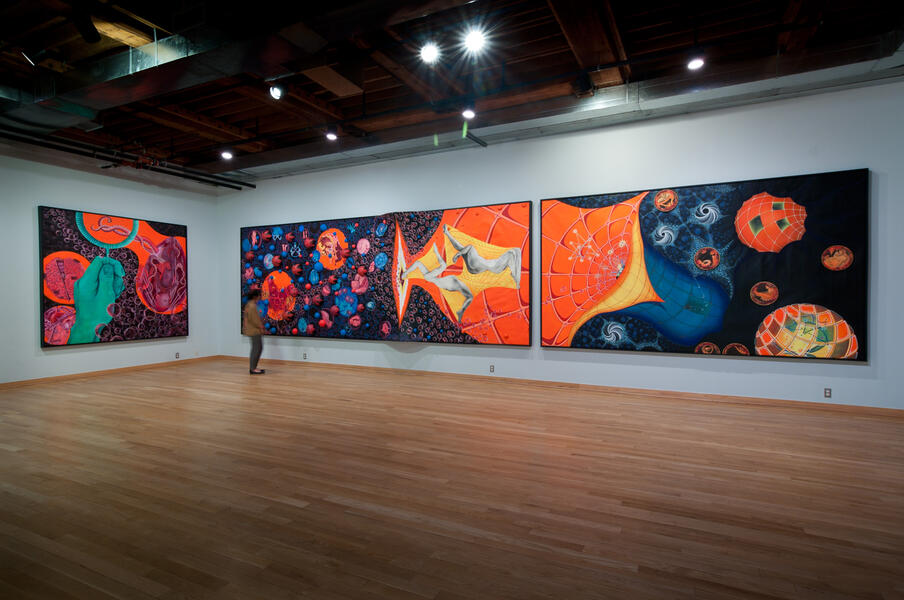 15 Billion Years of the Traveling AtomFull gallery shots of 15 Billion Years of the Traveling Atom painting, 72 x 8 feet, acrylic on canvas, originally painted in 1997-8, restored and newly installed and first time under daylight viewing without black light.
15 Billion Years of the Traveling AtomFull gallery shots of 15 Billion Years of the Traveling Atom painting, 72 x 8 feet, acrylic on canvas, originally painted in 1997-8, restored and newly installed and first time under daylight viewing without black light. -
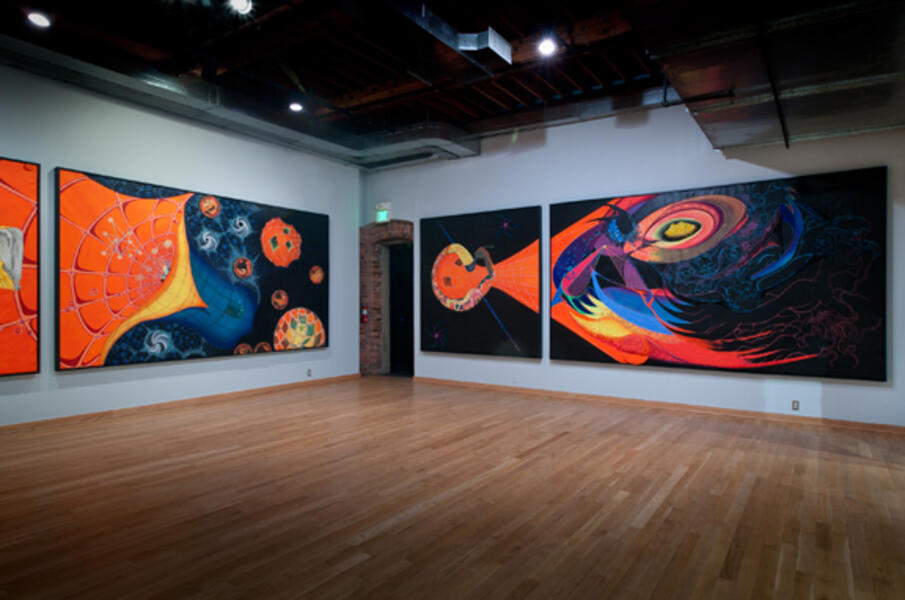 Polipop and Paintings, Maryland Art Place, gallery shot showing Mina Cheon's Painting 15 Billion Years of the Traveling AtomFull gallery shots of 15 Billion Years of the Traveling Atom painting, 72 x 8 feet, acrylic on canvas, originally painted in 1997-8, restored and newly installed and first time under daylight viewing without black light.
Polipop and Paintings, Maryland Art Place, gallery shot showing Mina Cheon's Painting 15 Billion Years of the Traveling AtomFull gallery shots of 15 Billion Years of the Traveling Atom painting, 72 x 8 feet, acrylic on canvas, originally painted in 1997-8, restored and newly installed and first time under daylight viewing without black light. -
 15 Billion Years of the Traveling Atom under Black LightMina Cheon's 15 Billion Years of the Traveling Atom under Black Light at Maryland Art Place, June 7, 2012 As part of Mina Cheon’s Polipop & Paintings exhibition, Maryland Art Place (MAP) will hold a one-day event, which will illuminate Mina Cheon’s last hand-painted masterpiece, 15 Billion Years of the Traveling Atom under black light. This mammoth 72x8 foot hand painting was created for the renowned abstract-expressionist painter Grace Hartigan between 1997 -1998 while Cheon worked with her at the Hoffberger School of Painting at the Maryland Institute College of Art (MICA). Produced through the use of florescent acrylic on canvas, the piece was originally lit under black light and was presented with the inclusion of performance art and bubbles. MAP is currently showcasing this work for the first time under natural light, but will host a one-day only homage to the paintings original presentation nearly 15 years ago. The 15 Billion Years painting is a celebration of popular science and a cosmic portrayal of the Universe. While at the gallery, viewers will also have the opportunity to spend time with Cheon’s current ‘Polipop’ works. Polipop is an art world that intersects politics and pop art. It takes serious discussions surrounding geopolitics of global, media culture and livens them up as accessible, eye - catching, provocative Pop Art. Cheon’s exhibition includes a series of digital paintings (8x5 feet each) coming from Cheon’s mid-career, solo exhibit at the Sungkok Art Museum in Seoul, Korea. When asked about North Korea, global media, and world politics, Cheon explains, “At the end of 2011, I was in Seoul, Korea when North Korean leader Kim Jong-il passed away. There was a great deal of sadness and empathy amongst the South Koreans about the passing of North Korean's great father. This sentiment did not get across into global media and especially Western and American media. As always, one's national grief is never the business of other nations, especially when there are imperial motives and political agendas at play, but as such, while many South Koreans remembers their family members who still reside in North Korea, the rest of the world seems to be amused at the failure of North Korea. As a Korean-American, I cannot neglect the sadness behind our country's division, and know that one cannot solely blame North Korea. Korea sits between capitalist Japan and communist China, it is already between two dividing westernized Asian countries. While, the split between North and South Korea can be seen as a relic of the cold war, there is also the more immediate neighboring geography that says it all. As a contemporary Asian artist working in global times, it is imperative to look at these co-national geo-politics and respond to how global media shapes or skews our perception on how a nation is (in)formed or disregarded.” Mina Cheon and Polipop and Paintings, have been featured in Voice of America (radio aired to North Korea on May 22), The Signal (WYPR, NPR) with Aaron Henkins, The Washington Korea Times, Artist Organized Art, Urbanite, The Sun Paper, and the Jewish Times. Maryland Art Place 8 Market Place #100, Baltimore, MD 21202 (410) 962-8565
15 Billion Years of the Traveling Atom under Black LightMina Cheon's 15 Billion Years of the Traveling Atom under Black Light at Maryland Art Place, June 7, 2012 As part of Mina Cheon’s Polipop & Paintings exhibition, Maryland Art Place (MAP) will hold a one-day event, which will illuminate Mina Cheon’s last hand-painted masterpiece, 15 Billion Years of the Traveling Atom under black light. This mammoth 72x8 foot hand painting was created for the renowned abstract-expressionist painter Grace Hartigan between 1997 -1998 while Cheon worked with her at the Hoffberger School of Painting at the Maryland Institute College of Art (MICA). Produced through the use of florescent acrylic on canvas, the piece was originally lit under black light and was presented with the inclusion of performance art and bubbles. MAP is currently showcasing this work for the first time under natural light, but will host a one-day only homage to the paintings original presentation nearly 15 years ago. The 15 Billion Years painting is a celebration of popular science and a cosmic portrayal of the Universe. While at the gallery, viewers will also have the opportunity to spend time with Cheon’s current ‘Polipop’ works. Polipop is an art world that intersects politics and pop art. It takes serious discussions surrounding geopolitics of global, media culture and livens them up as accessible, eye - catching, provocative Pop Art. Cheon’s exhibition includes a series of digital paintings (8x5 feet each) coming from Cheon’s mid-career, solo exhibit at the Sungkok Art Museum in Seoul, Korea. When asked about North Korea, global media, and world politics, Cheon explains, “At the end of 2011, I was in Seoul, Korea when North Korean leader Kim Jong-il passed away. There was a great deal of sadness and empathy amongst the South Koreans about the passing of North Korean's great father. This sentiment did not get across into global media and especially Western and American media. As always, one's national grief is never the business of other nations, especially when there are imperial motives and political agendas at play, but as such, while many South Koreans remembers their family members who still reside in North Korea, the rest of the world seems to be amused at the failure of North Korea. As a Korean-American, I cannot neglect the sadness behind our country's division, and know that one cannot solely blame North Korea. Korea sits between capitalist Japan and communist China, it is already between two dividing westernized Asian countries. While, the split between North and South Korea can be seen as a relic of the cold war, there is also the more immediate neighboring geography that says it all. As a contemporary Asian artist working in global times, it is imperative to look at these co-national geo-politics and respond to how global media shapes or skews our perception on how a nation is (in)formed or disregarded.” Mina Cheon and Polipop and Paintings, have been featured in Voice of America (radio aired to North Korea on May 22), The Signal (WYPR, NPR) with Aaron Henkins, The Washington Korea Times, Artist Organized Art, Urbanite, The Sun Paper, and the Jewish Times. Maryland Art Place 8 Market Place #100, Baltimore, MD 21202 (410) 962-8565 -
 Mina Cheon's 15 Billion Years of the Traveling Atom under Black Light at Maryland Art PlaceOne evening event: painting shown under black light to show the florescence in acrylic painting. June 7, 2012. The five sectioned painting totals 72 x 8 feet, it was originally painted in 1997-8 and brought out, restored, and newly installed at Maryland Art Place during Mina Cheon's exhibition Polipop and Paintings, May - June, 2012.
Mina Cheon's 15 Billion Years of the Traveling Atom under Black Light at Maryland Art PlaceOne evening event: painting shown under black light to show the florescence in acrylic painting. June 7, 2012. The five sectioned painting totals 72 x 8 feet, it was originally painted in 1997-8 and brought out, restored, and newly installed at Maryland Art Place during Mina Cheon's exhibition Polipop and Paintings, May - June, 2012. -
 Mina Cheon's 15 Billion Years of the Traveling Atom under Black Light at Maryland Art PlaceOne evening event: painting shown under black light to show the florescence in acrylic painting. June 7, 2012. The five sectioned painting totals 72 x 8 feet, it was originally painted in 1997-8 and brought out, restored, and newly installed at Maryland Art Place during Mina Cheon's exhibition Polipop and Paintings, May - June, 2012.
Mina Cheon's 15 Billion Years of the Traveling Atom under Black Light at Maryland Art PlaceOne evening event: painting shown under black light to show the florescence in acrylic painting. June 7, 2012. The five sectioned painting totals 72 x 8 feet, it was originally painted in 1997-8 and brought out, restored, and newly installed at Maryland Art Place during Mina Cheon's exhibition Polipop and Paintings, May - June, 2012.
POLIPOP: POLITICAL POP ART
POLIPOP (Political Pop Art)
Mina Cheon's Solo Exhibition at Sungkok Art Museum, Seoul, South Korea
January 12 – March 11, 2012
Korean-American new media artist Mina Cheon showcases POLIPOP (Political Pop Art) at the Sungkok Art Museum in Seoul, the first of three installments of Cheon’s consecutive solo-exhibitions to be held in 2012. After Seoul, Polipop projects will show at the Maryland Art Place in Baltimore and White Box in New York City.
Polipop is a compilation of artistic research that intersects politics and pop art that looks at contested spaces and geopolitics of global media culture. Through a postcolonial perspective, Cheon instigates the relationship between the East and West, as well as the relationship between Asian countries such as South and North Korea, and Korea, Japan, and China.
As once occurred with Chairman Mao, today’s plethora of images of President Barack Obama are political pop, hence Cheon highlights Obama as the polipop icon of our time. Cheon dedicates a gallery in the museum to him, thematically dividing the show into three large themes that reflect today’s political pop culture. The museum show includes the Obama Room, the Dokdo Room, and the Diamond Room. From the iconic American President and the War in the Middle East to the rise of the Asian Century and circulation of global media, the exhibition includes artworks on Obama, race, pop culture, technology, and capitalism.
Cheon’s Polipop includes more than 50 new pieces. There are over 40 new 8x5 feet digital paintings that look like propaganda banners gone pop art; animation of Obama dancing to Ally McBeal’s dancing baby “Ooga Chaka” song; video installation of traveling to Dokdo island, the contested island that sits between Korea and Japan, both physically by boat and virtually through Google Earth, Second Life, and Dokdo Internet virtual tours; and a mirrored room of massive light installation in the shape of diamonds. Image a Day: Occupy 2011 is an installation made of digital photo frames which rotates 365 images selected from the Internet (one image per day) to document global events all throughout 2011.In a glance, 2011 begins with the up rise in Egypt and ends with Occupy Demonstrations all over the world, with some other media worthy events such as the British Royal Wedding, Japan’s Tsunami and nuclear crisis, on-going global natural disasters, and the passing of Steve Jobs and Kim Jong-il.
The exhibition catalog includes writings from the Sungkok Art Museum’s chief curator Tcheon-nahm Park; art historian and scholar on race and culture, Leslie King-Hammond; cyber-feminist scholar Irina Aristarkhova; and cultural critic Pamela Haag.
Cheon’s interest in political pop art began in 2004 when she visited the North Korea’s Mt. Kumkangsan and made artwork about the Korean Demilitarized Zone, and continued as she traveled to Japan during the 2008 Summer Olympics in China specifically to interview Japanese people what they thought of the Olympics in Beijing, and highlighted while traveling to Doko in 2009, the contested island that sits between Korea and Japan.
Sungkok Art Museum
1-101 Shinmoon-ro 2ga, Jongro-gu, SEOUL 110-062, KOREA
T. +82 (0)2 737 7650
http://www.sungkokmuseum.com
"Polipop" (Artist Statement)
In my mind, a whole world of political pop art exists in the art world but has not yet been fully historicized. Political pop is a style of its own. It ranges from Andy Warhol’s Electric Chair to Barbara Kruger’s interplay between image and text to the array of contemporary Chinese artists and the abundant pop imagery of chairman Mao. It also describes Wang Guangyi, who is known as a “political pop artist,” as exemplified by Coca-Cola (1990-1993), part of The Great Criticism Series that responds to the westernization of communist China. Chinese contemporary artist Ai Weiwei himself has risen as a cultural political pop icon due to the controversy surrounding his arrest by the Chinese government, in turn, artists around the world created politically charged pop artwork to demonstrate for his release, hence bearing witness to unforeseen polipop culture in the making.
As once happened with chairman Mao however, today’s plethora of images of Obama are by far the most exceedingly political pop, making him and his image the polipop icon of our time. Certainly Shepard Farie’s Obama poster is the ultimate political pop image, but Joyce Scott’s Obama White, Obama Black is more important in bringing out the racial controversies and discussions surrounding Obama’s candidacy and presidency. Scott’s piece influenced my Obama series, where, pop elements aside, the racial and class politics, the subject and content, were drawn out to the forefront of the piece.
“Polipop,” my solo exhibition at the Sungkok Art Museum in Seoul (January 13 – March 11, 2012) showcases a variety of political pop artwork. Unhindered by one strict methodology, process, or medium, the work includes everything from digital paintings, video, sculpture, and installation, all categorized as new media art. Polipop is meant to be fun. Like pop art, it takes the serious into the realm of playful and uses the language of entertainment and the kitsch. My new body of work uses primary colors. Many of the pieces are strongly outlined like propaganda posters or banners, and each image, whether it is a digital painting or a video piece, is most successful when it can simply illustrate a clear point about politics and media, the message I want to get across.
The Sungkok Museum’s Main Building has three large galleries, all three spaces totaling around 5000 square feet, and each gallery consists of distinct themes related to political pop art. Gallery 1 is the “Obama Room,” celebrating the icon of polipop, President Barack Obama; Gallery 2 is the “Dokdo Room,” looking at national conflicts between neighboring Asian countries such as North and South Korea, Japan, and China; and Gallery 3 is the “Diamond Room,” displaying the height of capitalism or its downfall.
Each room is characterized by one distinct installation that addresses the themes of the room, surrounded by many works that I call “Polipop digital paintings” which are installed to coincide with each theme of the rooms. The Obama Room’s walls are primarily yellow; Dokdo Room is red and blue; Diamond Room is white. Each digital painting is a glicee print on stretched canvas that was collaged by various images on the Internet, and printed at large scale of 8 x 5 feet, totaling 46 pieces to the series, 42 shown at the museum.
Mina Cheon's Solo Exhibition at Sungkok Art Museum, Seoul, South Korea
January 12 – March 11, 2012
Korean-American new media artist Mina Cheon showcases POLIPOP (Political Pop Art) at the Sungkok Art Museum in Seoul, the first of three installments of Cheon’s consecutive solo-exhibitions to be held in 2012. After Seoul, Polipop projects will show at the Maryland Art Place in Baltimore and White Box in New York City.
Polipop is a compilation of artistic research that intersects politics and pop art that looks at contested spaces and geopolitics of global media culture. Through a postcolonial perspective, Cheon instigates the relationship between the East and West, as well as the relationship between Asian countries such as South and North Korea, and Korea, Japan, and China.
As once occurred with Chairman Mao, today’s plethora of images of President Barack Obama are political pop, hence Cheon highlights Obama as the polipop icon of our time. Cheon dedicates a gallery in the museum to him, thematically dividing the show into three large themes that reflect today’s political pop culture. The museum show includes the Obama Room, the Dokdo Room, and the Diamond Room. From the iconic American President and the War in the Middle East to the rise of the Asian Century and circulation of global media, the exhibition includes artworks on Obama, race, pop culture, technology, and capitalism.
Cheon’s Polipop includes more than 50 new pieces. There are over 40 new 8x5 feet digital paintings that look like propaganda banners gone pop art; animation of Obama dancing to Ally McBeal’s dancing baby “Ooga Chaka” song; video installation of traveling to Dokdo island, the contested island that sits between Korea and Japan, both physically by boat and virtually through Google Earth, Second Life, and Dokdo Internet virtual tours; and a mirrored room of massive light installation in the shape of diamonds. Image a Day: Occupy 2011 is an installation made of digital photo frames which rotates 365 images selected from the Internet (one image per day) to document global events all throughout 2011.In a glance, 2011 begins with the up rise in Egypt and ends with Occupy Demonstrations all over the world, with some other media worthy events such as the British Royal Wedding, Japan’s Tsunami and nuclear crisis, on-going global natural disasters, and the passing of Steve Jobs and Kim Jong-il.
The exhibition catalog includes writings from the Sungkok Art Museum’s chief curator Tcheon-nahm Park; art historian and scholar on race and culture, Leslie King-Hammond; cyber-feminist scholar Irina Aristarkhova; and cultural critic Pamela Haag.
Cheon’s interest in political pop art began in 2004 when she visited the North Korea’s Mt. Kumkangsan and made artwork about the Korean Demilitarized Zone, and continued as she traveled to Japan during the 2008 Summer Olympics in China specifically to interview Japanese people what they thought of the Olympics in Beijing, and highlighted while traveling to Doko in 2009, the contested island that sits between Korea and Japan.
Sungkok Art Museum
1-101 Shinmoon-ro 2ga, Jongro-gu, SEOUL 110-062, KOREA
T. +82 (0)2 737 7650
http://www.sungkokmuseum.com
"Polipop" (Artist Statement)
In my mind, a whole world of political pop art exists in the art world but has not yet been fully historicized. Political pop is a style of its own. It ranges from Andy Warhol’s Electric Chair to Barbara Kruger’s interplay between image and text to the array of contemporary Chinese artists and the abundant pop imagery of chairman Mao. It also describes Wang Guangyi, who is known as a “political pop artist,” as exemplified by Coca-Cola (1990-1993), part of The Great Criticism Series that responds to the westernization of communist China. Chinese contemporary artist Ai Weiwei himself has risen as a cultural political pop icon due to the controversy surrounding his arrest by the Chinese government, in turn, artists around the world created politically charged pop artwork to demonstrate for his release, hence bearing witness to unforeseen polipop culture in the making.
As once happened with chairman Mao however, today’s plethora of images of Obama are by far the most exceedingly political pop, making him and his image the polipop icon of our time. Certainly Shepard Farie’s Obama poster is the ultimate political pop image, but Joyce Scott’s Obama White, Obama Black is more important in bringing out the racial controversies and discussions surrounding Obama’s candidacy and presidency. Scott’s piece influenced my Obama series, where, pop elements aside, the racial and class politics, the subject and content, were drawn out to the forefront of the piece.
“Polipop,” my solo exhibition at the Sungkok Art Museum in Seoul (January 13 – March 11, 2012) showcases a variety of political pop artwork. Unhindered by one strict methodology, process, or medium, the work includes everything from digital paintings, video, sculpture, and installation, all categorized as new media art. Polipop is meant to be fun. Like pop art, it takes the serious into the realm of playful and uses the language of entertainment and the kitsch. My new body of work uses primary colors. Many of the pieces are strongly outlined like propaganda posters or banners, and each image, whether it is a digital painting or a video piece, is most successful when it can simply illustrate a clear point about politics and media, the message I want to get across.
The Sungkok Museum’s Main Building has three large galleries, all three spaces totaling around 5000 square feet, and each gallery consists of distinct themes related to political pop art. Gallery 1 is the “Obama Room,” celebrating the icon of polipop, President Barack Obama; Gallery 2 is the “Dokdo Room,” looking at national conflicts between neighboring Asian countries such as North and South Korea, Japan, and China; and Gallery 3 is the “Diamond Room,” displaying the height of capitalism or its downfall.
Each room is characterized by one distinct installation that addresses the themes of the room, surrounded by many works that I call “Polipop digital paintings” which are installed to coincide with each theme of the rooms. The Obama Room’s walls are primarily yellow; Dokdo Room is red and blue; Diamond Room is white. Each digital painting is a glicee print on stretched canvas that was collaged by various images on the Internet, and printed at large scale of 8 x 5 feet, totaling 46 pieces to the series, 42 shown at the museum.
-
Mina Cheon Polipop Feature in Arirang, Korea's Global TVArtist Mina Cheon is featured in Korea's Global TV Arirang, English Channel, in the show Arirang Today. Cheon's mid-career solo exhibition "POLIPOP" was shown at the Sungkok Art Museum, Seoul, Korea from Jan. 12 - March 11, 2012.
-
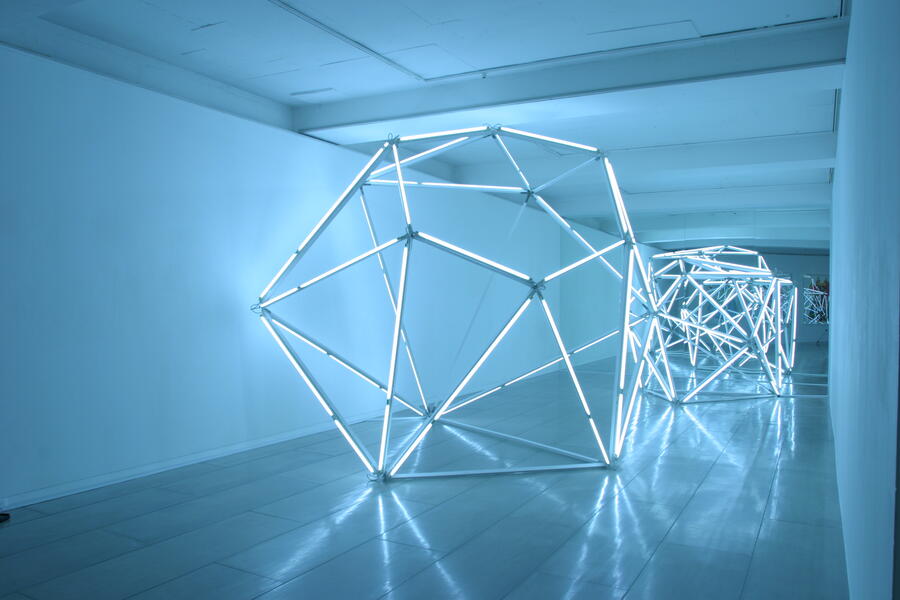 Polipop: Diamond RoomGallery view of Diamond Room, Mina Cheon's solo exhibition "Polipop," at the Sungkok Art Museum, Seoul, Korea, 2012. Mina Cheon's Polipop exhibition includes Polipop digital paintings, video and sculpture installations. This gallery view shows light installation "Diamonds R 4Ever," which is a florescent light installation in the shape of diamonds, scale is at the size of gallery, with mirror at the end wall. Collaboration with Gabriel Kroiz. Gallery 3 is the Diamond Room, which highlights capitalism at its zenith through an installation: three light sculptures in the shape of diamonds made out of thin florescent light tubes and assembled with wooden structure support. The installation Diamonds4Ever is a new version of Mina Cheon and Gabriel Kroiz, artist and architect collaborative installation, Diamonds: Will You Marry Me?, which was first installed at SSamzieGil, Seoul, in 2007, with students from MICA who had come to Korea for a summer exchange that Cheon and Kroiz co-directed called MICA Korea, with students of Korean National University of Art (KNUA). Diamonds, as one of the most valued and fantasized consumer object, can be viewed as the epitome of capitalism, but the hollowness of this structure contrasts with the permanence of diamonds and their cultural value, to highlight both aspects—both the spectacularity and the vapidity of the object. The diamond installation also comments on our world’s spiraling economic woes and the descent of capitalism. The new version will be situated with walls that will be mirrored by mirrors so as to strengthen the installation’s light through reflection.
Polipop: Diamond RoomGallery view of Diamond Room, Mina Cheon's solo exhibition "Polipop," at the Sungkok Art Museum, Seoul, Korea, 2012. Mina Cheon's Polipop exhibition includes Polipop digital paintings, video and sculpture installations. This gallery view shows light installation "Diamonds R 4Ever," which is a florescent light installation in the shape of diamonds, scale is at the size of gallery, with mirror at the end wall. Collaboration with Gabriel Kroiz. Gallery 3 is the Diamond Room, which highlights capitalism at its zenith through an installation: three light sculptures in the shape of diamonds made out of thin florescent light tubes and assembled with wooden structure support. The installation Diamonds4Ever is a new version of Mina Cheon and Gabriel Kroiz, artist and architect collaborative installation, Diamonds: Will You Marry Me?, which was first installed at SSamzieGil, Seoul, in 2007, with students from MICA who had come to Korea for a summer exchange that Cheon and Kroiz co-directed called MICA Korea, with students of Korean National University of Art (KNUA). Diamonds, as one of the most valued and fantasized consumer object, can be viewed as the epitome of capitalism, but the hollowness of this structure contrasts with the permanence of diamonds and their cultural value, to highlight both aspects—both the spectacularity and the vapidity of the object. The diamond installation also comments on our world’s spiraling economic woes and the descent of capitalism. The new version will be situated with walls that will be mirrored by mirrors so as to strengthen the installation’s light through reflection. -
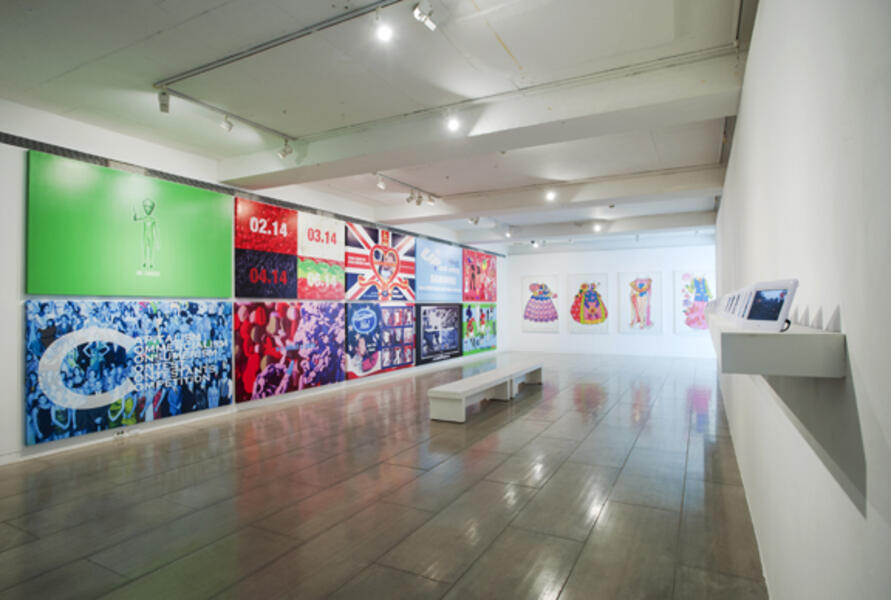 Polipop: Diamond RoomGallery view of Diamond Room, Mina Cheon's solo exhibition "Polipop," at the Sungkok Art Museum, Seoul, Korea, 2012. Mina Cheon's Polipop exhibition includes Polipop digital paintings, video and sculpture installations. This gallery view shows Polipop digital paintings in the themes of critiquing capitalism, desiring beauty and diamonds, constructs of the Western world. The series of digital paintings in the Diamond Room illustrate the absurd things you can buy in a capitalist world, such as the kiss of Prince William through Skype, or an image of all the 2011 contestants in America’s reality TV shows, such as the Biggest Loser, Bridezilla, Bachelor, and Survivor. Other images show the problems of a world driven by capitalism, pharmaceutical exploitation, going green as a fashion statement (regardless of politics or economy), and natural disasters that result from our neglected environment and global warming. The room is left white to reference the whiteness of diamonds, and the white and Western economic stratum that created much of capitalism today. Dresses for Different Events, which was exhibited in 2008, makes its way to the museum show. It displays seven distinct pieces that illustrate desired Western beauty to the fullest. These dresses were mass printed in 1970s Korea, when the national propaganda urged Korea to grow economically like the West, infusing capitalist values with Confucian ethics of the East. The beauty portrayed in these dresses reveals fantasized Western beauty. These were the paper doll dresses that I played with everyday, growing up in Korea in the 1970s.
Polipop: Diamond RoomGallery view of Diamond Room, Mina Cheon's solo exhibition "Polipop," at the Sungkok Art Museum, Seoul, Korea, 2012. Mina Cheon's Polipop exhibition includes Polipop digital paintings, video and sculpture installations. This gallery view shows Polipop digital paintings in the themes of critiquing capitalism, desiring beauty and diamonds, constructs of the Western world. The series of digital paintings in the Diamond Room illustrate the absurd things you can buy in a capitalist world, such as the kiss of Prince William through Skype, or an image of all the 2011 contestants in America’s reality TV shows, such as the Biggest Loser, Bridezilla, Bachelor, and Survivor. Other images show the problems of a world driven by capitalism, pharmaceutical exploitation, going green as a fashion statement (regardless of politics or economy), and natural disasters that result from our neglected environment and global warming. The room is left white to reference the whiteness of diamonds, and the white and Western economic stratum that created much of capitalism today. Dresses for Different Events, which was exhibited in 2008, makes its way to the museum show. It displays seven distinct pieces that illustrate desired Western beauty to the fullest. These dresses were mass printed in 1970s Korea, when the national propaganda urged Korea to grow economically like the West, infusing capitalist values with Confucian ethics of the East. The beauty portrayed in these dresses reveals fantasized Western beauty. These were the paper doll dresses that I played with everyday, growing up in Korea in the 1970s. -
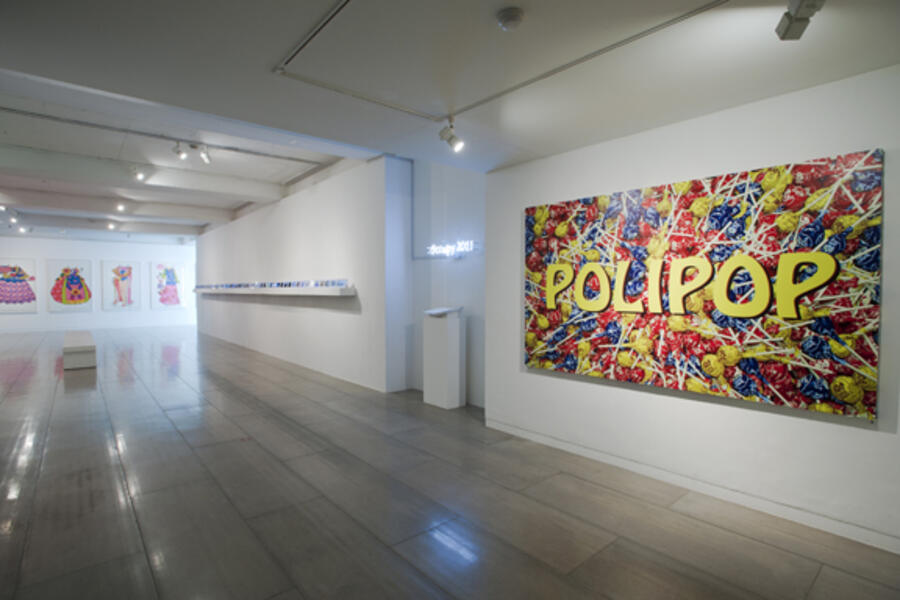 Polipop: Diamond RoomGallery view of Diamond Room, Mina Cheon's solo exhibition "Polipop," at the Sungkok Art Museum, Seoul, Korea, 2012. Mina Cheon's Polipop exhibition includes Polipop digital paintings, video and sculpture installations. This gallery view shows the main digital painting Polipop of the exhibition and Occupy 2011 digital frame monitors digital media piece that deals with collecting a single political pop image of the day throughout 2011. The Diamond Room will include another new piece, Image a Day: Occupy 2011, which is a wall full of digital photo frames that individually rotate pictures. Each frame changes the vast collection of images while all the frames together are showing them in different sync. All throughout 2011, I have selected one image per day that represented the most distinctive political pop image of the day, already existing in news and mass media on the Internet. The selection process was the artistic criteria. The purpose of this piece is to show a collection of one year’s worth of current events as images, encapsulated into digital frames, which signifies the flood of images that repeat throughout the course of the day as headline news framed by televisions or computer monitors. By housing 365 images per digital frame, allowing them to rotate different images, the digital frame installation pays homage to Nam June Paik’s multi-monitor TV installations, with the latest technology of digital photo frame and with a compilation of polipop images of the day over a year. The landscape of photos is a portrait of 2011’s world news and media and the images that are recognizable and that reveal a year’s worth of current events at a glance. The year 2011 ended with a large number of Occupy Demonstrations, starting from Occupy Wall Street to others across the United States to around the world including Occupy Seoul. Hence, the title of the piece includes a subtitle “Occupy 2011.” In a glance, 2011 begins with the up rise in Egypt and ends with Occupy Demonstrations all over the world, with some other media worthy events such as the British Royal Wedding, Japan’s Tsunami and nuclear crisis, on-going global natural disasters, and the passing of Steve Jobs and Kim Jong-il. At the Sungkok Art Museum, this piece is installed in 52 monitors lined up in a row in the middle of the first wall coming into the Diamond Room. Each monitor therefore houses seven images, representing a week worth of images, 52 monitors representing the weeks of the year 2011.
Polipop: Diamond RoomGallery view of Diamond Room, Mina Cheon's solo exhibition "Polipop," at the Sungkok Art Museum, Seoul, Korea, 2012. Mina Cheon's Polipop exhibition includes Polipop digital paintings, video and sculpture installations. This gallery view shows the main digital painting Polipop of the exhibition and Occupy 2011 digital frame monitors digital media piece that deals with collecting a single political pop image of the day throughout 2011. The Diamond Room will include another new piece, Image a Day: Occupy 2011, which is a wall full of digital photo frames that individually rotate pictures. Each frame changes the vast collection of images while all the frames together are showing them in different sync. All throughout 2011, I have selected one image per day that represented the most distinctive political pop image of the day, already existing in news and mass media on the Internet. The selection process was the artistic criteria. The purpose of this piece is to show a collection of one year’s worth of current events as images, encapsulated into digital frames, which signifies the flood of images that repeat throughout the course of the day as headline news framed by televisions or computer monitors. By housing 365 images per digital frame, allowing them to rotate different images, the digital frame installation pays homage to Nam June Paik’s multi-monitor TV installations, with the latest technology of digital photo frame and with a compilation of polipop images of the day over a year. The landscape of photos is a portrait of 2011’s world news and media and the images that are recognizable and that reveal a year’s worth of current events at a glance. The year 2011 ended with a large number of Occupy Demonstrations, starting from Occupy Wall Street to others across the United States to around the world including Occupy Seoul. Hence, the title of the piece includes a subtitle “Occupy 2011.” In a glance, 2011 begins with the up rise in Egypt and ends with Occupy Demonstrations all over the world, with some other media worthy events such as the British Royal Wedding, Japan’s Tsunami and nuclear crisis, on-going global natural disasters, and the passing of Steve Jobs and Kim Jong-il. At the Sungkok Art Museum, this piece is installed in 52 monitors lined up in a row in the middle of the first wall coming into the Diamond Room. Each monitor therefore houses seven images, representing a week worth of images, 52 monitors representing the weeks of the year 2011. -
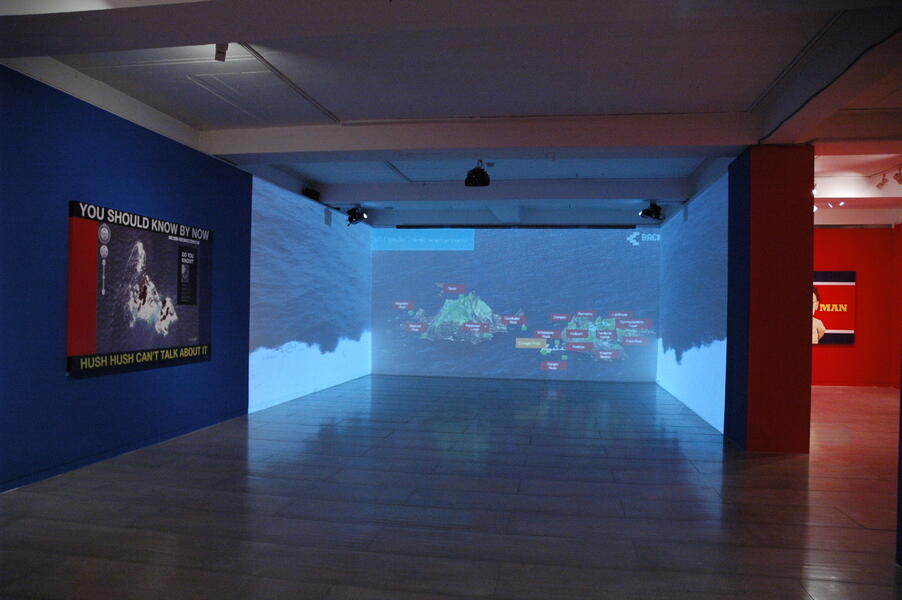 Polipop: Dokdo RoomGallery view of Dokdo Room, Mina Cheon's solo exhibition "Polipop," at the Sungkok Art Museum, Seoul, Korea, 2012. Mina Cheon's Polipop exhibition includes Polipop digital paintings, video and sculpture installations. Gallery 2 is the Dokdo Room, a room dedicated to looking at the relationships between neighboring Asian countries such as North and South Korea, and Japan and China, and images that are produced in media culture about each other’s culture, including images of hatred. The main installation for the Dokdo Room is a three-channel video of Dokdo Island. This gallery view shows the video installation about Dokdo, the contested island between Korea and Japan.
Polipop: Dokdo RoomGallery view of Dokdo Room, Mina Cheon's solo exhibition "Polipop," at the Sungkok Art Museum, Seoul, Korea, 2012. Mina Cheon's Polipop exhibition includes Polipop digital paintings, video and sculpture installations. Gallery 2 is the Dokdo Room, a room dedicated to looking at the relationships between neighboring Asian countries such as North and South Korea, and Japan and China, and images that are produced in media culture about each other’s culture, including images of hatred. The main installation for the Dokdo Room is a three-channel video of Dokdo Island. This gallery view shows the video installation about Dokdo, the contested island between Korea and Japan. -
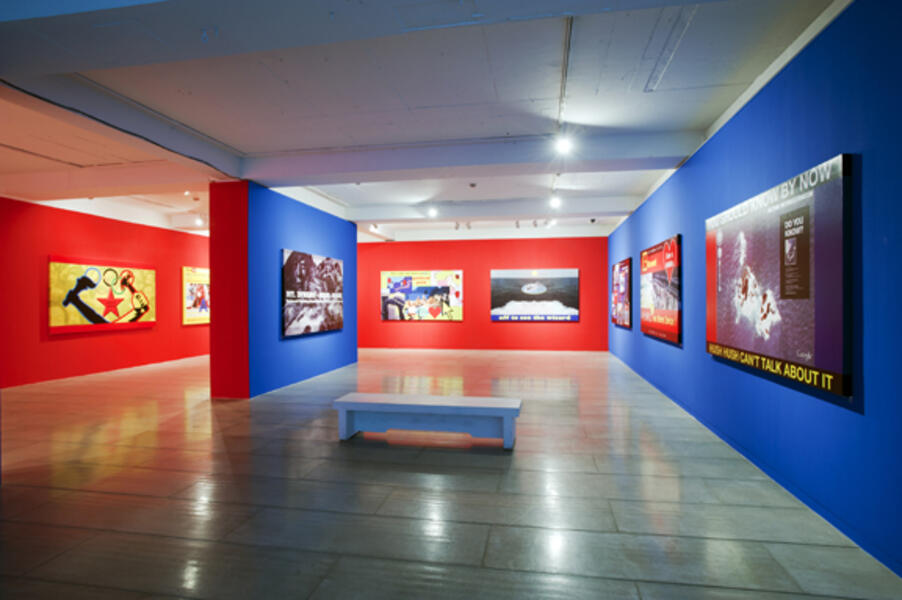 Polipop: Dokdo RoomGallery view of Dokdo Room, Mina Cheon's solo exhibition "Polipop," at the Sungkok Art Museum, Seoul, Korea, 2012. Mina Cheon's Polipop exhibition includes Polipop digital paintings, video and sculpture installations. This gallery view shows Polipop digital paintings in the themes of rise of Asia, downfall of the Western world, and Dokdo, the contested island between Korea and Japan. This room looks at the relationship between Asian countries, as well as the relationship between the East and West. The series of digital paintings in the Dokdo Room shows images of Asian countries, including China gone capitalistic, Japan’s hatred of Koreans as found in manga imagery, of the dear North Korean dictator Kim Il Sung with Pokémon characters, and images of the Dokdo campaign in various pop ways. The gallery’s wall is painted in red and blue to indicate the political colors of the socialist North and democratic South Korea.
Polipop: Dokdo RoomGallery view of Dokdo Room, Mina Cheon's solo exhibition "Polipop," at the Sungkok Art Museum, Seoul, Korea, 2012. Mina Cheon's Polipop exhibition includes Polipop digital paintings, video and sculpture installations. This gallery view shows Polipop digital paintings in the themes of rise of Asia, downfall of the Western world, and Dokdo, the contested island between Korea and Japan. This room looks at the relationship between Asian countries, as well as the relationship between the East and West. The series of digital paintings in the Dokdo Room shows images of Asian countries, including China gone capitalistic, Japan’s hatred of Koreans as found in manga imagery, of the dear North Korean dictator Kim Il Sung with Pokémon characters, and images of the Dokdo campaign in various pop ways. The gallery’s wall is painted in red and blue to indicate the political colors of the socialist North and democratic South Korea. -
 Polipop: Dokdo RoomGallery view of Dokdo Room, Mina Cheon's solo exhibition "Polipop," at the Sungkok Art Museum, Seoul, Korea, 2012. Mina Cheon's Polipop exhibition includes Polipop digital paintings, video and sculpture installations. This gallery view shows Polipop digital paintings in the themes of rise of Asia, downfall of the Western world, and Dokdo, the contested island between Korea and Japan. This room looks at the relationship between Asian countries, as well as the relationship between the East and West.
Polipop: Dokdo RoomGallery view of Dokdo Room, Mina Cheon's solo exhibition "Polipop," at the Sungkok Art Museum, Seoul, Korea, 2012. Mina Cheon's Polipop exhibition includes Polipop digital paintings, video and sculpture installations. This gallery view shows Polipop digital paintings in the themes of rise of Asia, downfall of the Western world, and Dokdo, the contested island between Korea and Japan. This room looks at the relationship between Asian countries, as well as the relationship between the East and West. -
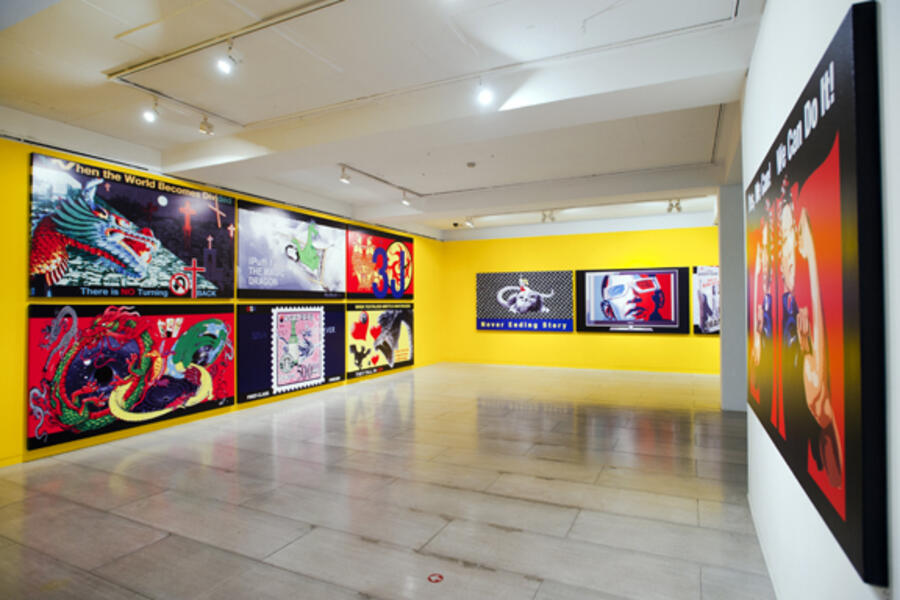 Polipop: Obama RoomGallery view of Obama Room, Mina Cheon's solo exhibition "Polipop," at the Sungkok Art Museum, Seoul, Korea, 2012. Mina Cheon's Polipop exhibition includes Polipop digital paintings, video and sculpture installations. This gallery view shows Polipop digital paintings in the themes of Obama, the year of the dragon 2012, the war in the Middle East, and issues of race and culture. Many of the digital paintings in the Obama Room are about Obama and the dragon, since the exhibition is the first one of 2012 at the museum, the year of the dragon. These include Falcor from Never Ending Story, Toothless, and the D-War Korean dragon. Other ones in this room explore actors gone politicians, the relationship between entertainment and politics, as well as pieces that comment on today’s ongoing war with the Middle East, and the war’s relationship to media. Hence, the room is also about the American occupation and war in the Middle East, which Obama had to adopt with his presidency. The walls in the gallery are painted yellow overall with just the entrance wall in red. The yellow color works well with the many blue and red palettes of the digital paintings in the room.
Polipop: Obama RoomGallery view of Obama Room, Mina Cheon's solo exhibition "Polipop," at the Sungkok Art Museum, Seoul, Korea, 2012. Mina Cheon's Polipop exhibition includes Polipop digital paintings, video and sculpture installations. This gallery view shows Polipop digital paintings in the themes of Obama, the year of the dragon 2012, the war in the Middle East, and issues of race and culture. Many of the digital paintings in the Obama Room are about Obama and the dragon, since the exhibition is the first one of 2012 at the museum, the year of the dragon. These include Falcor from Never Ending Story, Toothless, and the D-War Korean dragon. Other ones in this room explore actors gone politicians, the relationship between entertainment and politics, as well as pieces that comment on today’s ongoing war with the Middle East, and the war’s relationship to media. Hence, the room is also about the American occupation and war in the Middle East, which Obama had to adopt with his presidency. The walls in the gallery are painted yellow overall with just the entrance wall in red. The yellow color works well with the many blue and red palettes of the digital paintings in the room. -
 Polipop: Obama RoomGallery view of Obama Room, Mina Cheon's solo exhibition "Polipop," at the Sungkok Art Museum, Seoul, Korea, 2012. Mina Cheon's Polipop exhibition includes Polipop digital paintings, video and sculpture installations. This gallery view shows Polipop sculpture and video installation Obama Dancing. The Obama Room is dedicated to the icon of polipop, President Obama and also the year 2012, the year of the dragon. In this gallery, the central installation piece is “Dancing Obama” where DIY Obama action figure, originally manufactured by Jailbreak Toys, Inc. is made as an animation of Obama dancing the famous Ally McBeal dancing baby dance to “Oogachaka” songs. The late 90s hit TV series Ally McBeal was famous for the appearance of a 3D animation baby that became an instant hit, and perhaps sparked a new viral sensation of the animation and music. Obama represented as a white figure suggests the controversy of race that comes along with his presidency, similar to Scott’s piece. Whether color, genetics, or social class determines race, the issues surrounding a black American president is even a household conversation in Korea. The hype over Obama and racial politics can also be found with Donald Trump’s request that Obama produce a birth certificate, where issues of nationality would not have been questioned if he had been a white president.
Polipop: Obama RoomGallery view of Obama Room, Mina Cheon's solo exhibition "Polipop," at the Sungkok Art Museum, Seoul, Korea, 2012. Mina Cheon's Polipop exhibition includes Polipop digital paintings, video and sculpture installations. This gallery view shows Polipop sculpture and video installation Obama Dancing. The Obama Room is dedicated to the icon of polipop, President Obama and also the year 2012, the year of the dragon. In this gallery, the central installation piece is “Dancing Obama” where DIY Obama action figure, originally manufactured by Jailbreak Toys, Inc. is made as an animation of Obama dancing the famous Ally McBeal dancing baby dance to “Oogachaka” songs. The late 90s hit TV series Ally McBeal was famous for the appearance of a 3D animation baby that became an instant hit, and perhaps sparked a new viral sensation of the animation and music. Obama represented as a white figure suggests the controversy of race that comes along with his presidency, similar to Scott’s piece. Whether color, genetics, or social class determines race, the issues surrounding a black American president is even a household conversation in Korea. The hype over Obama and racial politics can also be found with Donald Trump’s request that Obama produce a birth certificate, where issues of nationality would not have been questioned if he had been a white president. -
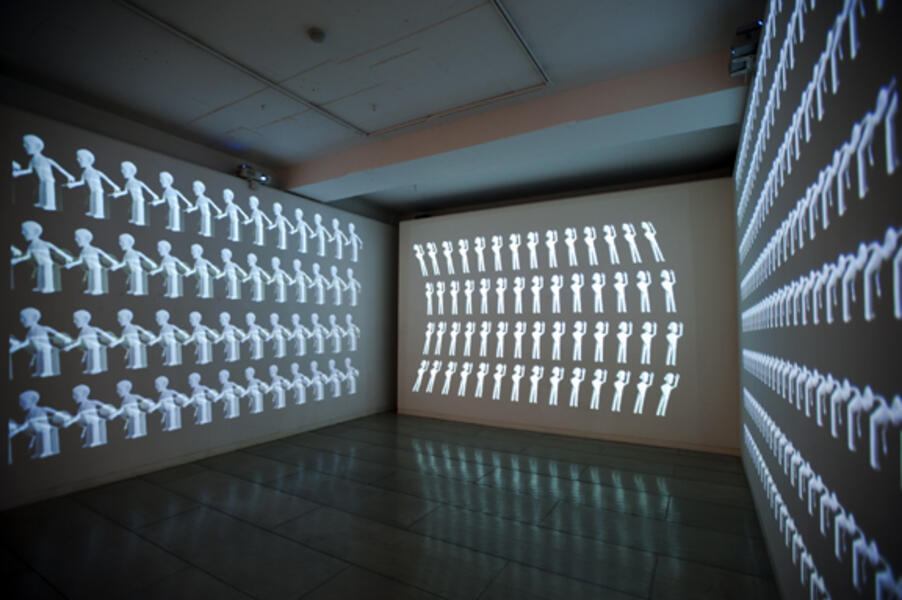 Obama DancingGallery view of Obama Room, Mina Cheon's solo exhibition "Polipop," at the Sungkok Art Museum, Seoul, Korea, 2012. Obama Dancing, video installation 2012 Polipop (Political Pop Art) by Mina Cheon was first shown at Sungkok Art Museum, Seoul, Korea in the Obama Room, Polipop, solo-exhibition by Mina Cheon. This is one of the videos of the three channel video installation with rotating Styrofoam sculpture of Obama. The installation was also later installed at the Seoul Olympic Museum of Art in Seoul, South Korea between February 7 - March 31, 2013. Obama Dancing appropriates a small action figure toy known as "Do-It-Yourself (DIY) Obama" and is made into a life-size Styrofoam statue, fabricated at the scale of President Barack Obama's physical height (6'11" or 186 cm). The statue stands on a turntable, rotating slowly in the gallery to music and a three channel video installation. Obama, as the Polipop (political pop art) icon of our time is highlighted both as monumental, larger than life figure, as well as easily accessible due to mass media and proliferation of his imagery in popular culture. The video channels is a series of animation made by the artist of Obama dancing the famous Ally McBeal (American television show series) baby dance to "Oogachaka" songs. The late 90s hit TV series Ally McBeal was famous for the appearance of a 3D animation baby, which became an instant television series hit, and sparked a new viral sensation of the animation and music before the time of the Internet. The artist was fascinated by the action figure (manufactured by Jailbreak Toys, Inc.) that came in a box with a white Obama toy that one can DIY paint. Obama as the first African-American President in the United States has raised continued discussion about race, culture, and politics in America, and the artist felt the need to distill some of the irony of a white Obama toy through this installation. Music: "Dancing Baby" song in Ally McBeal (American television show series) includes variations of "Hooked on a Feeling" and "Oogachaka," sung first by B.J. Thomas and then by Blue Swede.
Obama DancingGallery view of Obama Room, Mina Cheon's solo exhibition "Polipop," at the Sungkok Art Museum, Seoul, Korea, 2012. Obama Dancing, video installation 2012 Polipop (Political Pop Art) by Mina Cheon was first shown at Sungkok Art Museum, Seoul, Korea in the Obama Room, Polipop, solo-exhibition by Mina Cheon. This is one of the videos of the three channel video installation with rotating Styrofoam sculpture of Obama. The installation was also later installed at the Seoul Olympic Museum of Art in Seoul, South Korea between February 7 - March 31, 2013. Obama Dancing appropriates a small action figure toy known as "Do-It-Yourself (DIY) Obama" and is made into a life-size Styrofoam statue, fabricated at the scale of President Barack Obama's physical height (6'11" or 186 cm). The statue stands on a turntable, rotating slowly in the gallery to music and a three channel video installation. Obama, as the Polipop (political pop art) icon of our time is highlighted both as monumental, larger than life figure, as well as easily accessible due to mass media and proliferation of his imagery in popular culture. The video channels is a series of animation made by the artist of Obama dancing the famous Ally McBeal (American television show series) baby dance to "Oogachaka" songs. The late 90s hit TV series Ally McBeal was famous for the appearance of a 3D animation baby, which became an instant television series hit, and sparked a new viral sensation of the animation and music before the time of the Internet. The artist was fascinated by the action figure (manufactured by Jailbreak Toys, Inc.) that came in a box with a white Obama toy that one can DIY paint. Obama as the first African-American President in the United States has raised continued discussion about race, culture, and politics in America, and the artist felt the need to distill some of the irony of a white Obama toy through this installation. Music: "Dancing Baby" song in Ally McBeal (American television show series) includes variations of "Hooked on a Feeling" and "Oogachaka," sung first by B.J. Thomas and then by Blue Swede.








